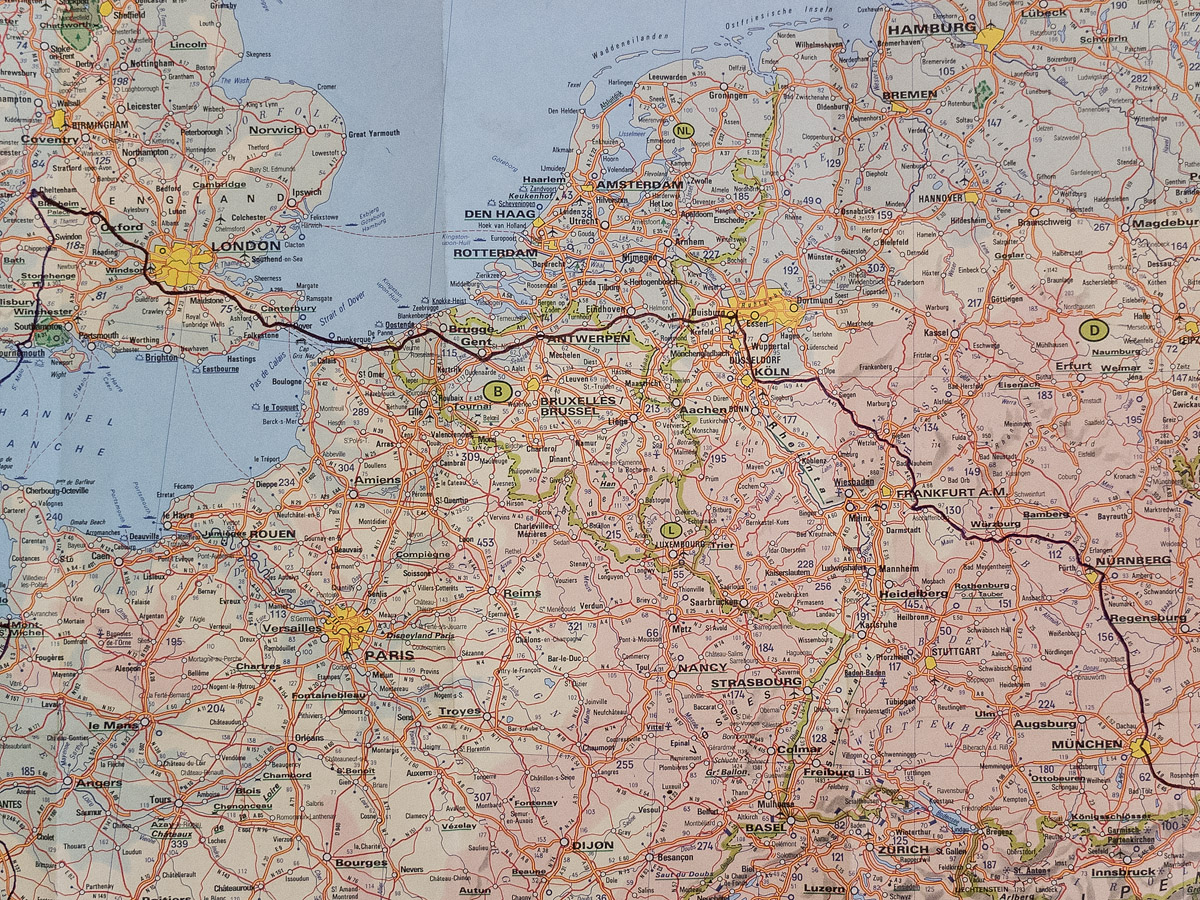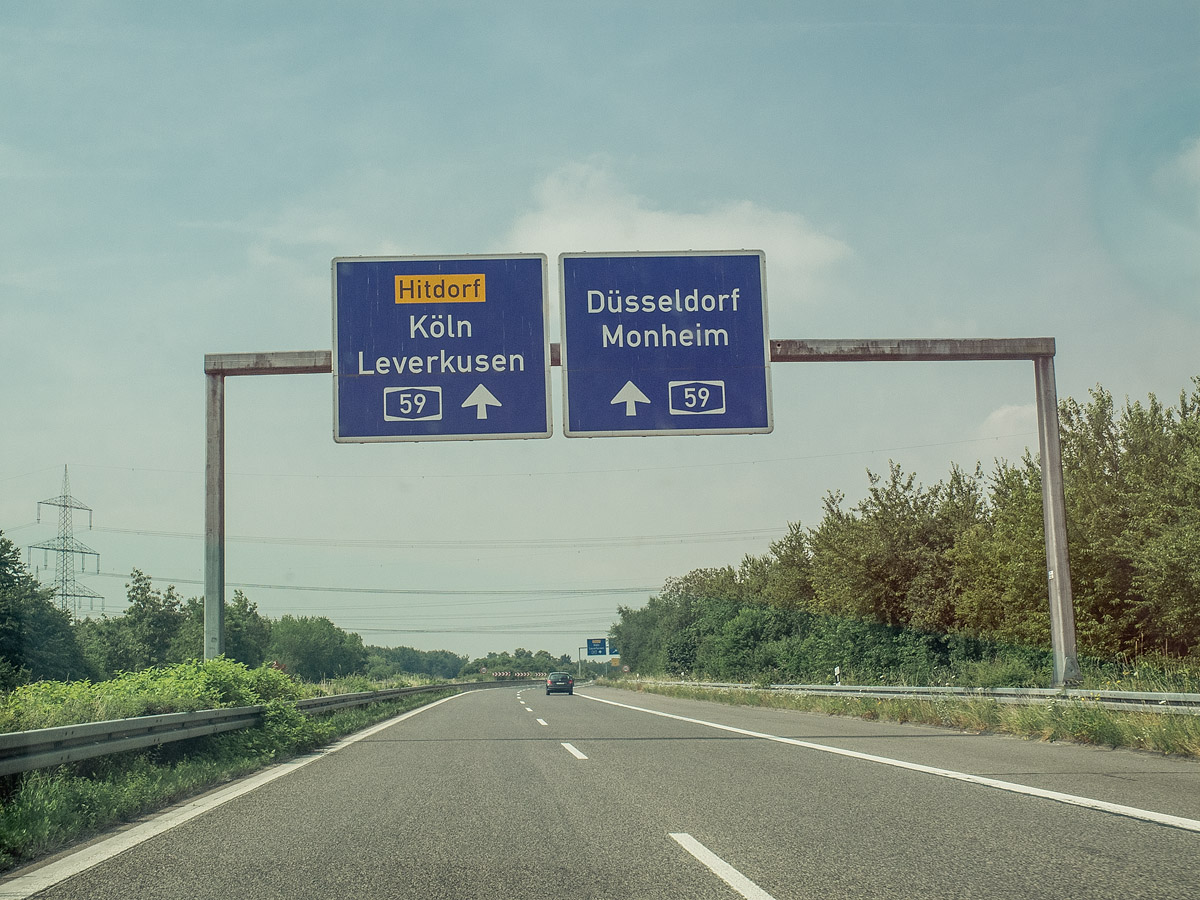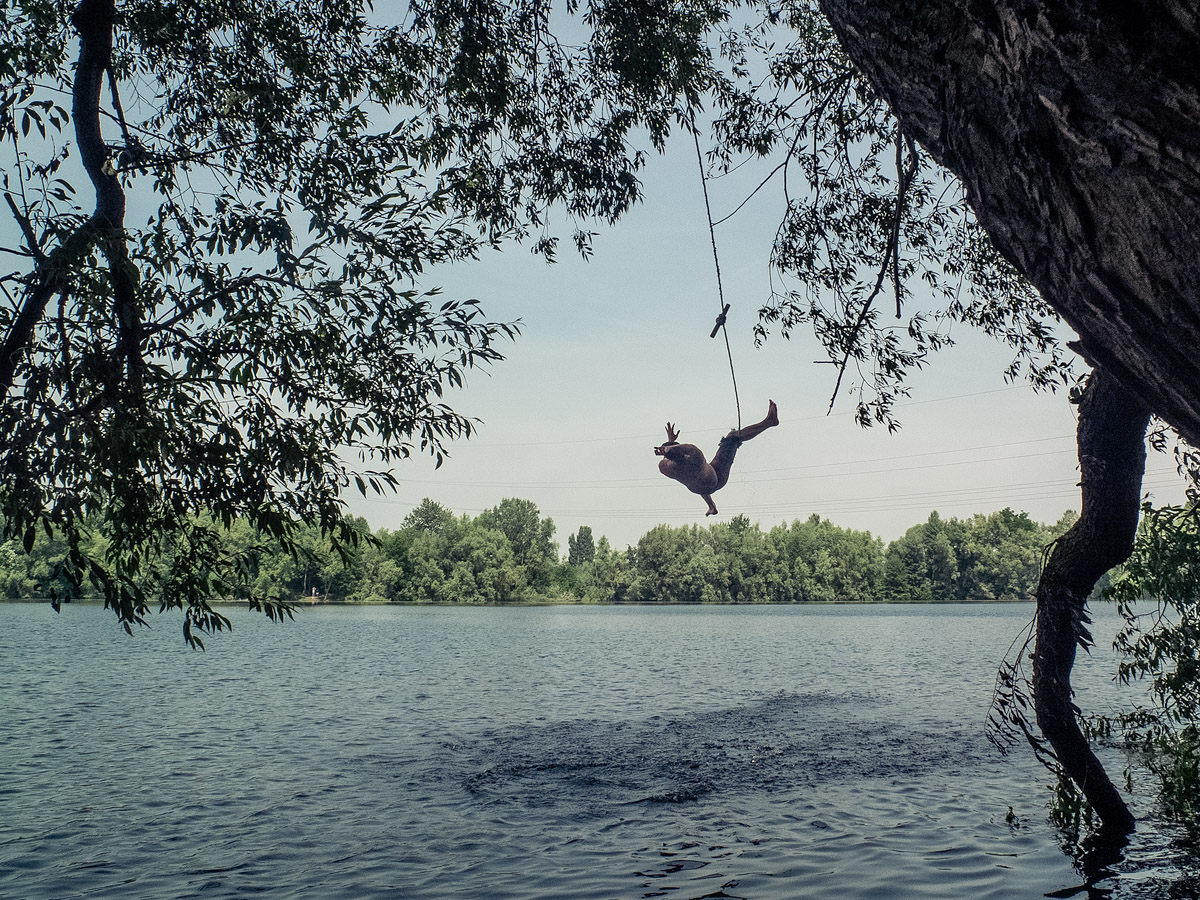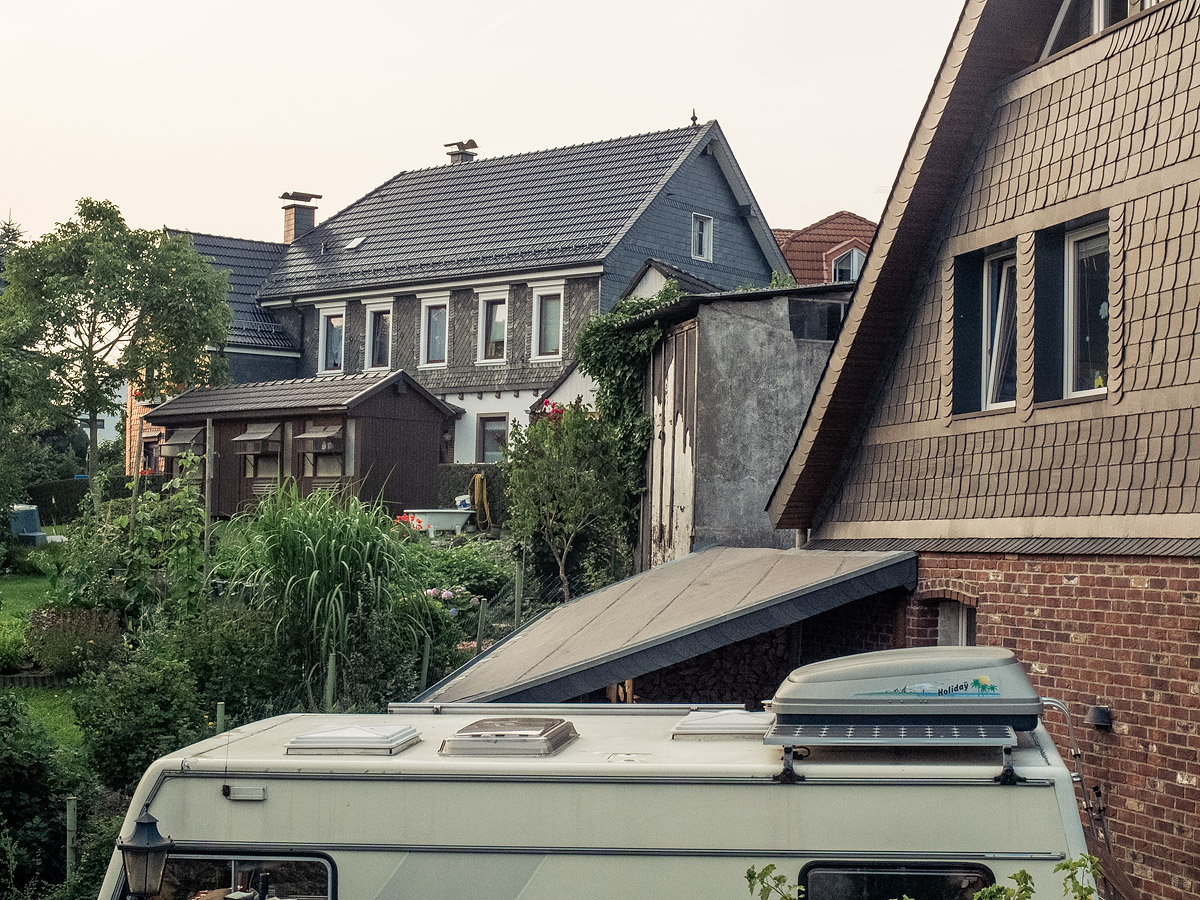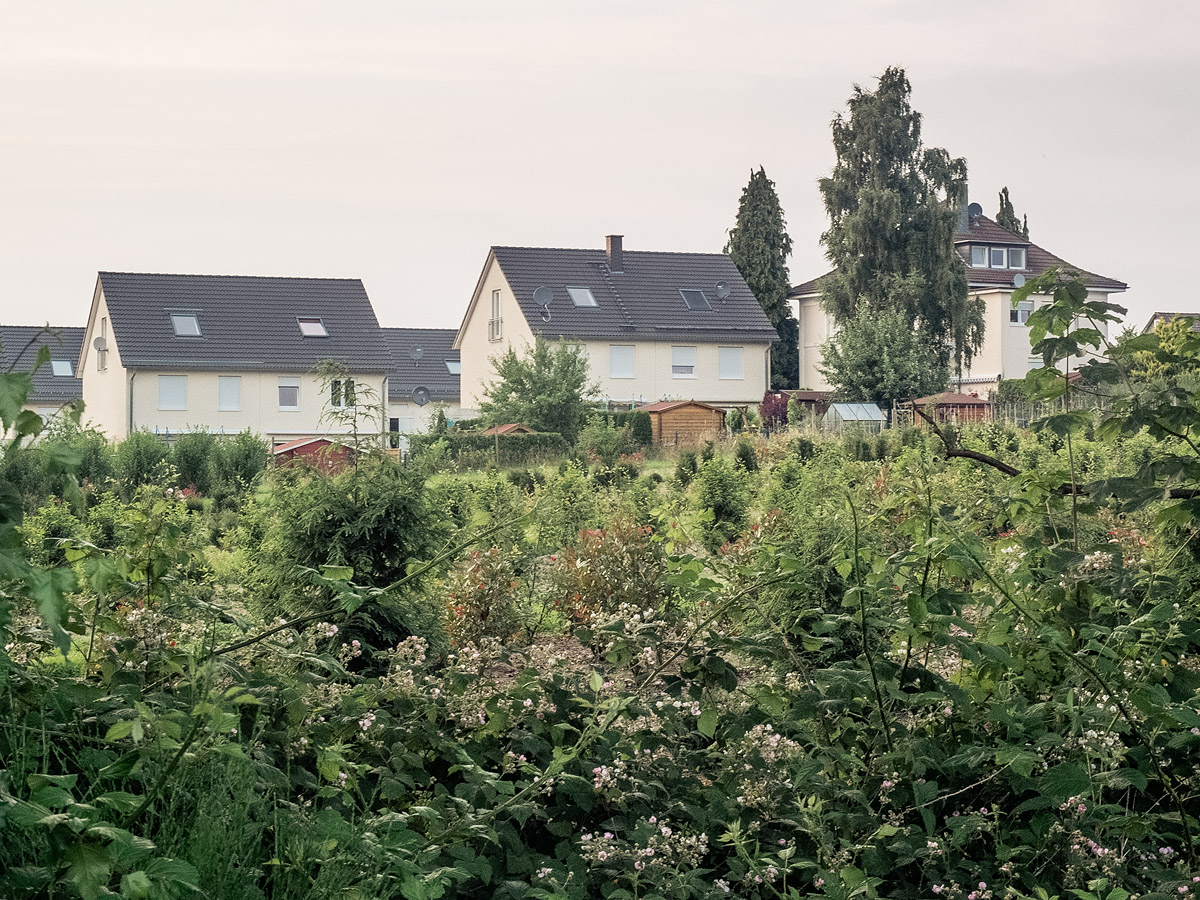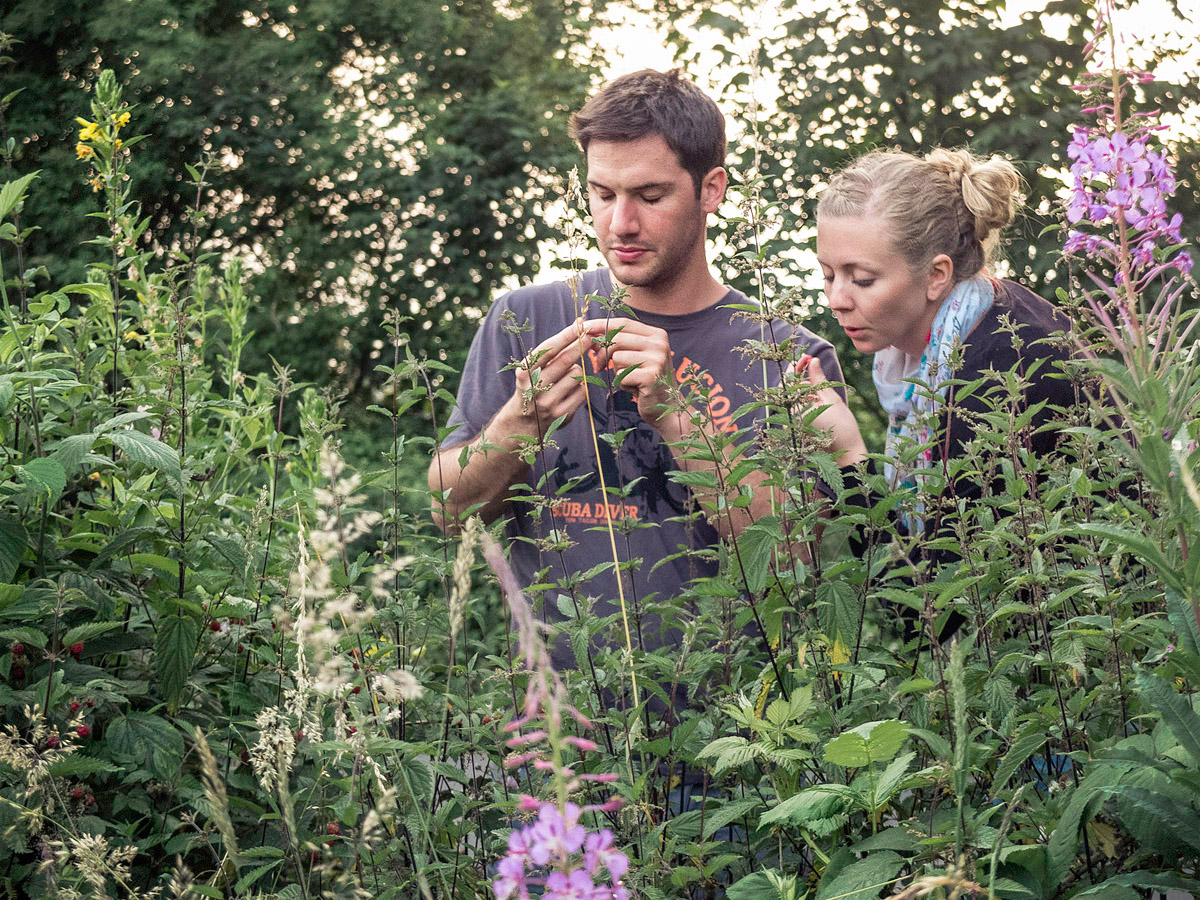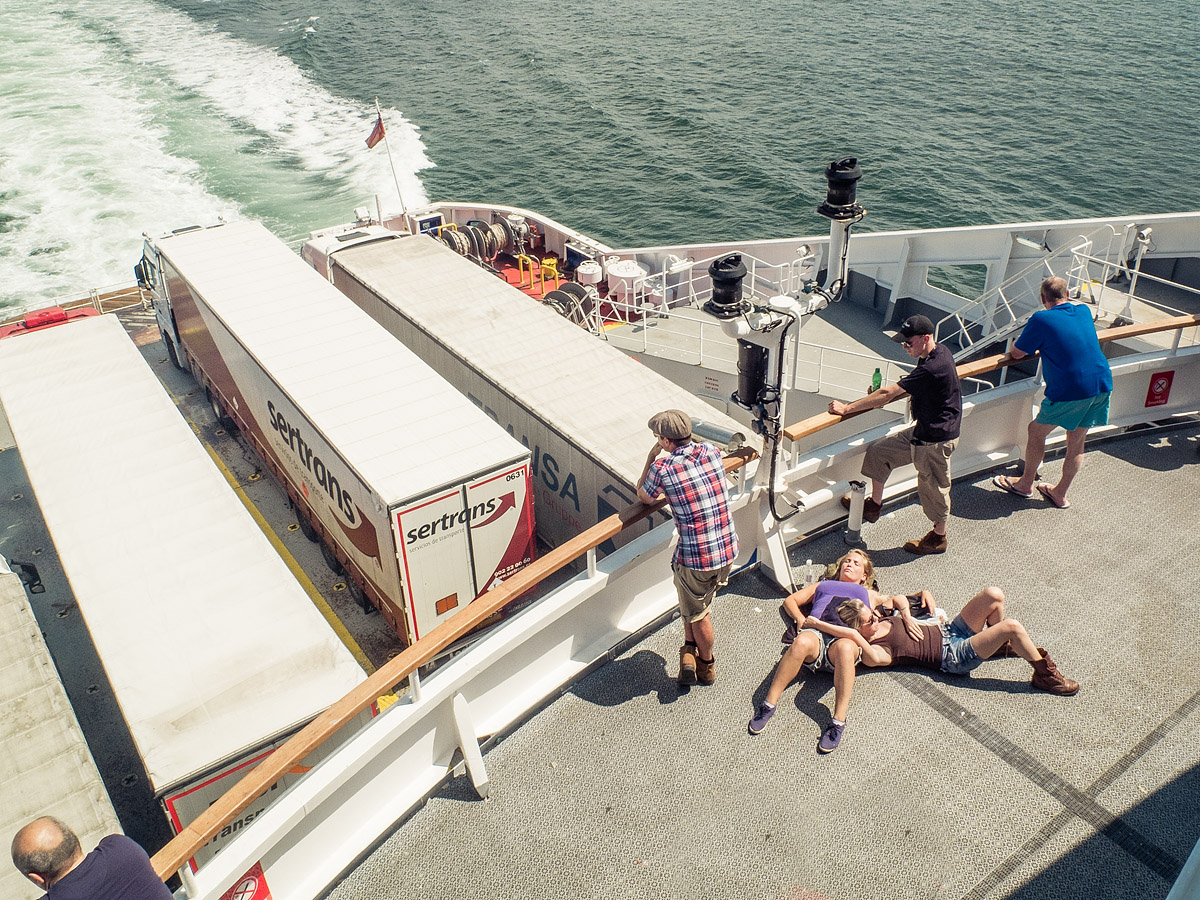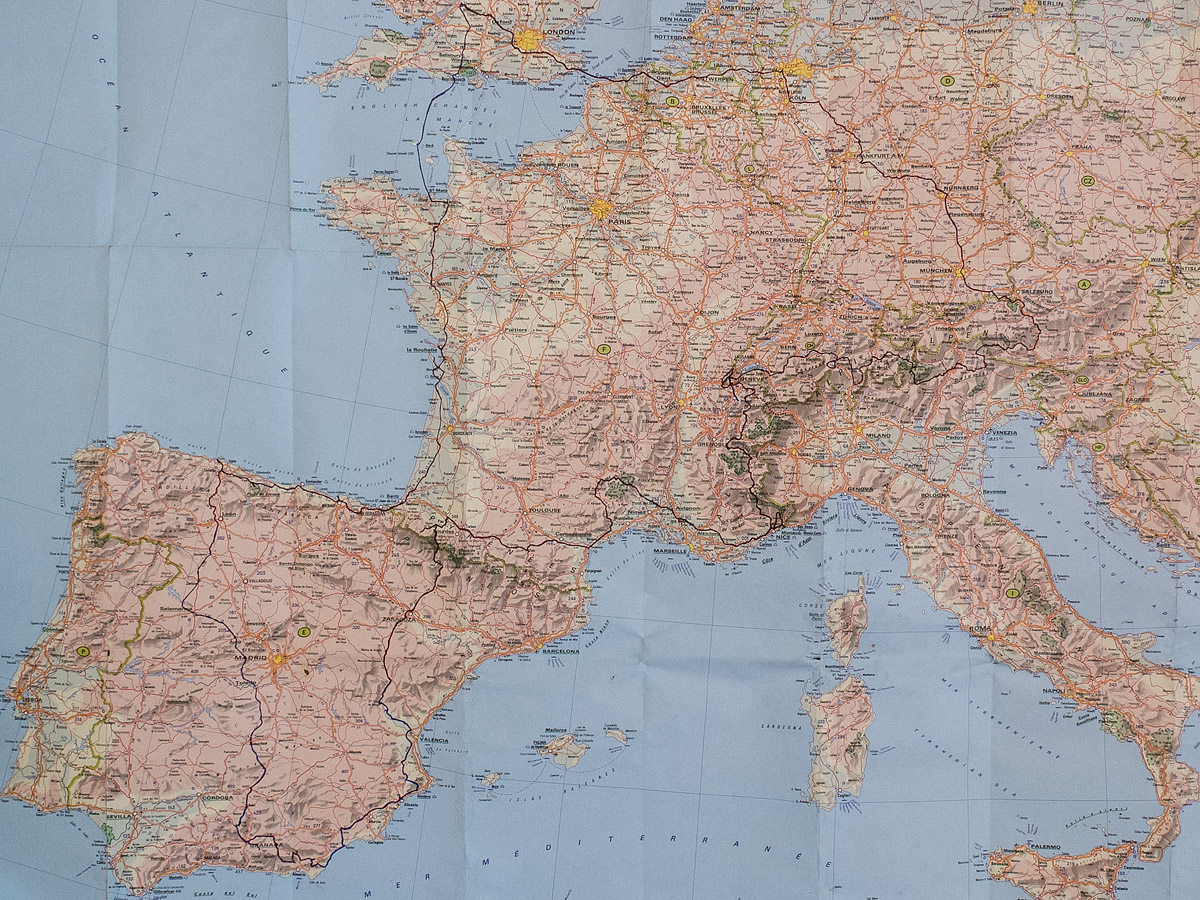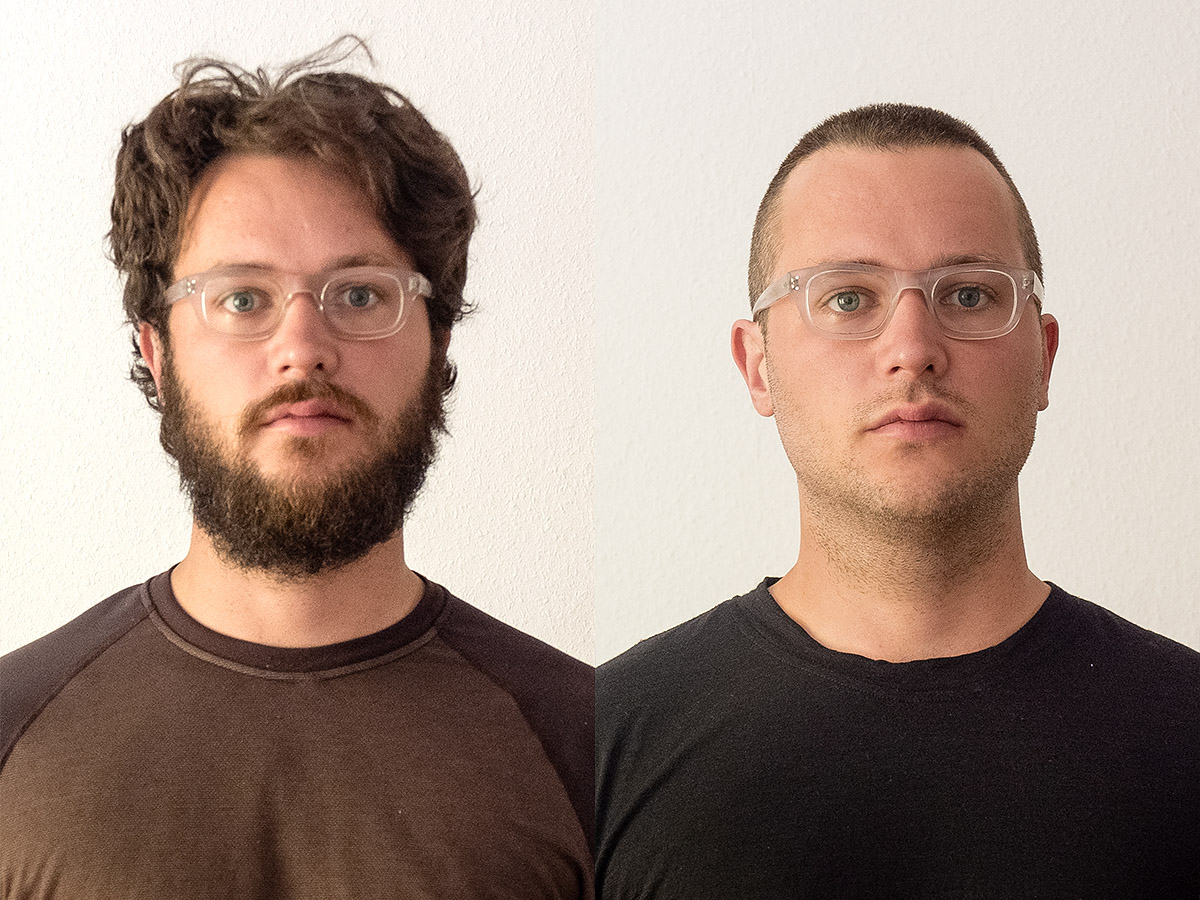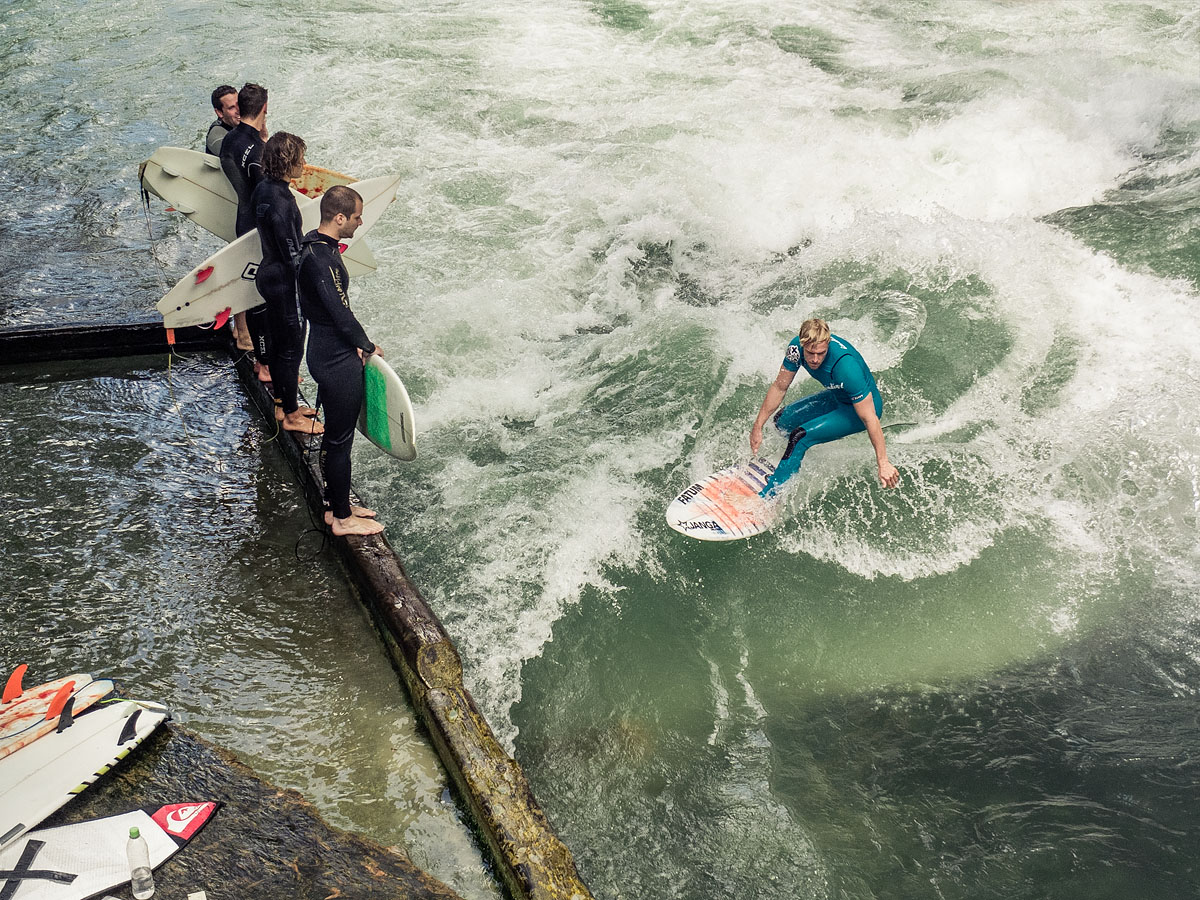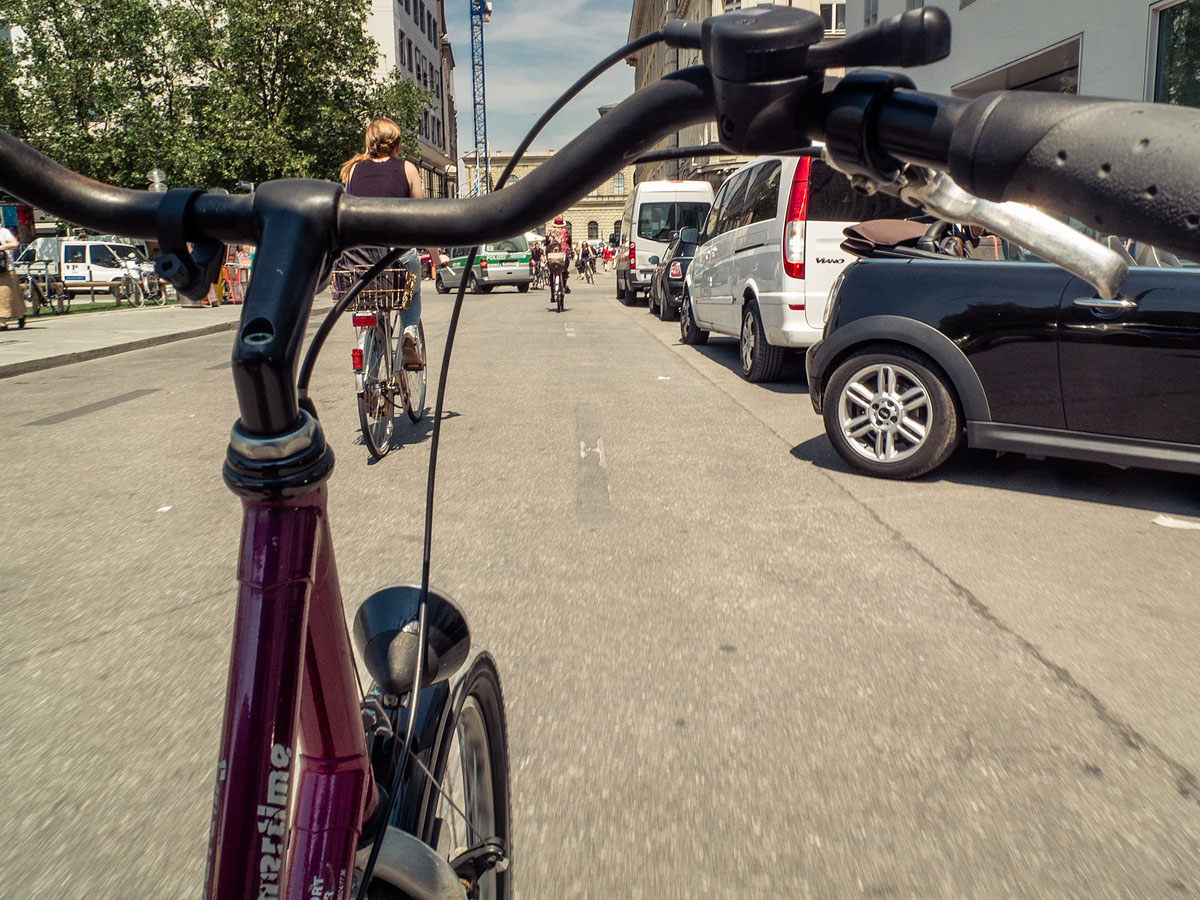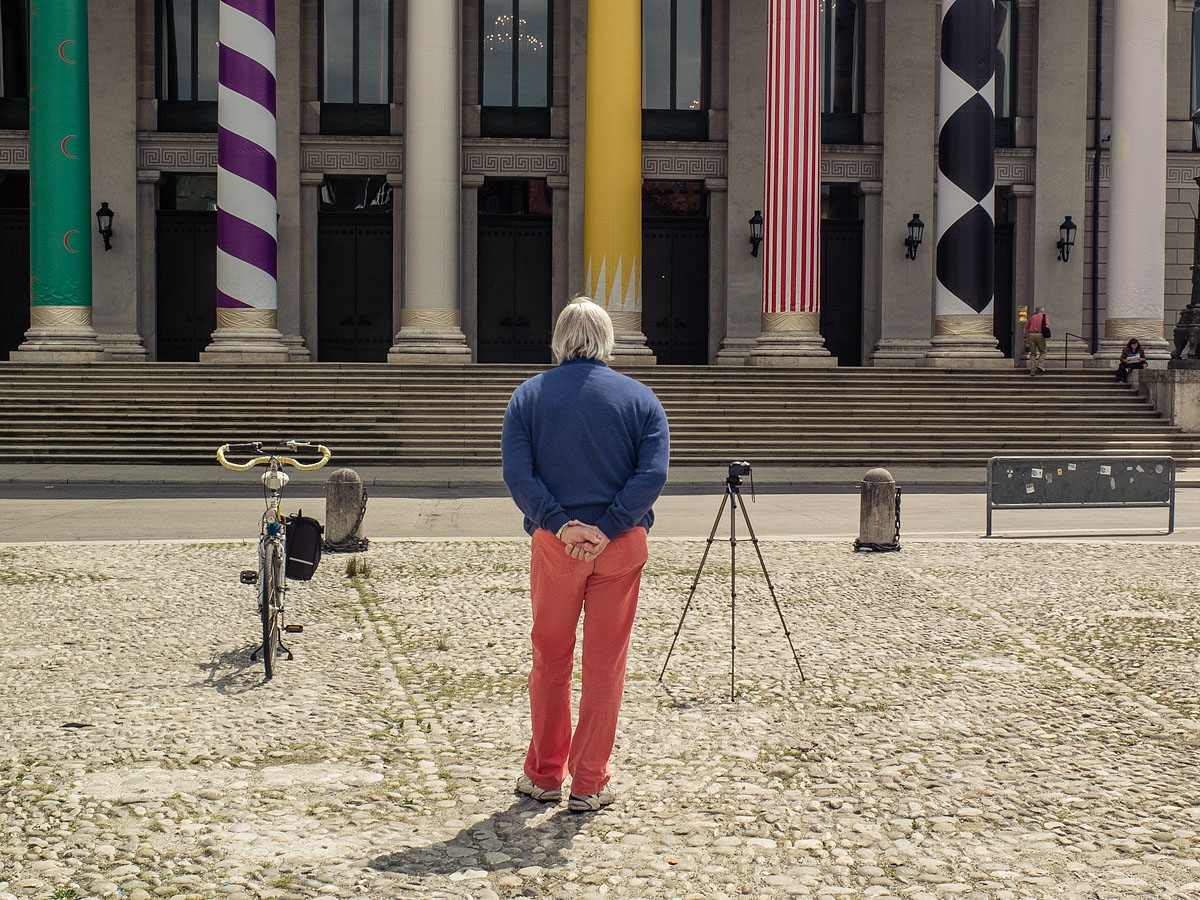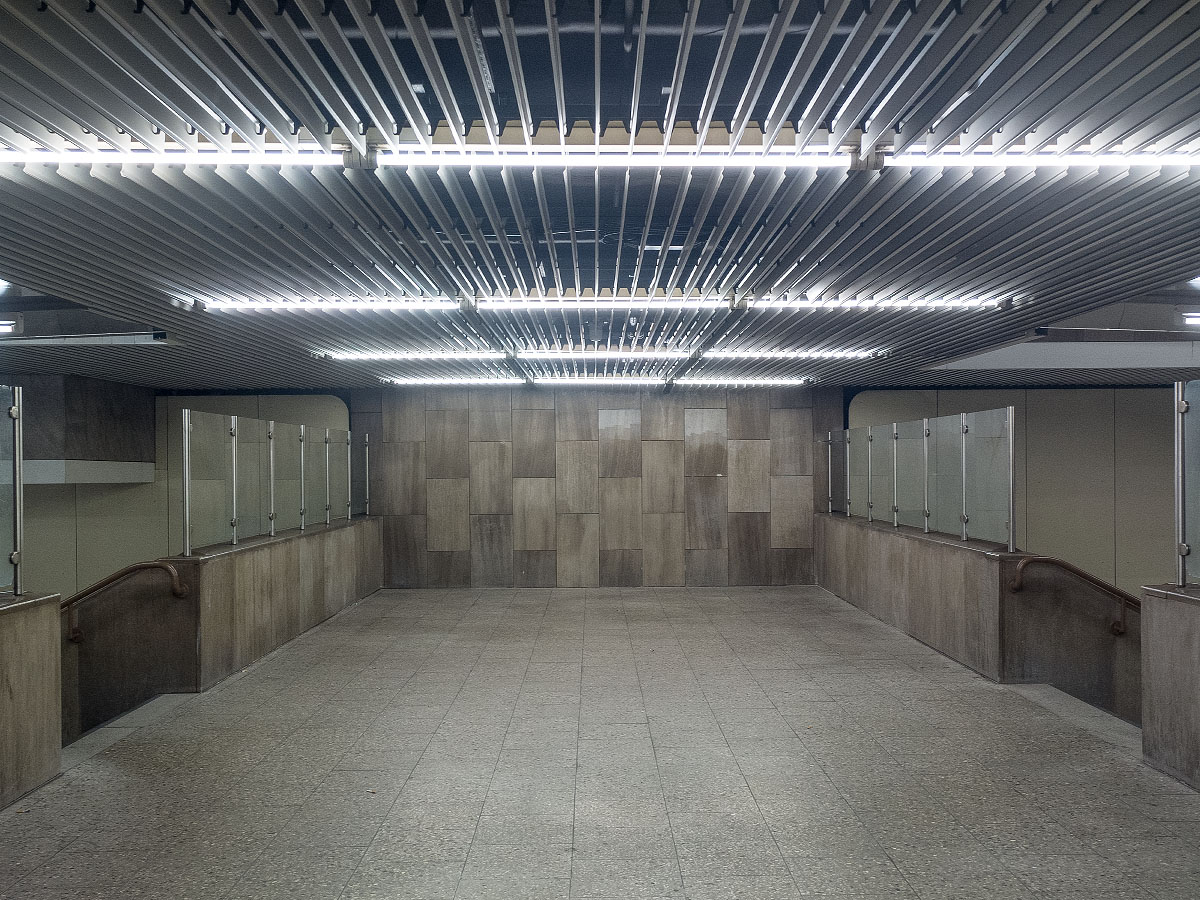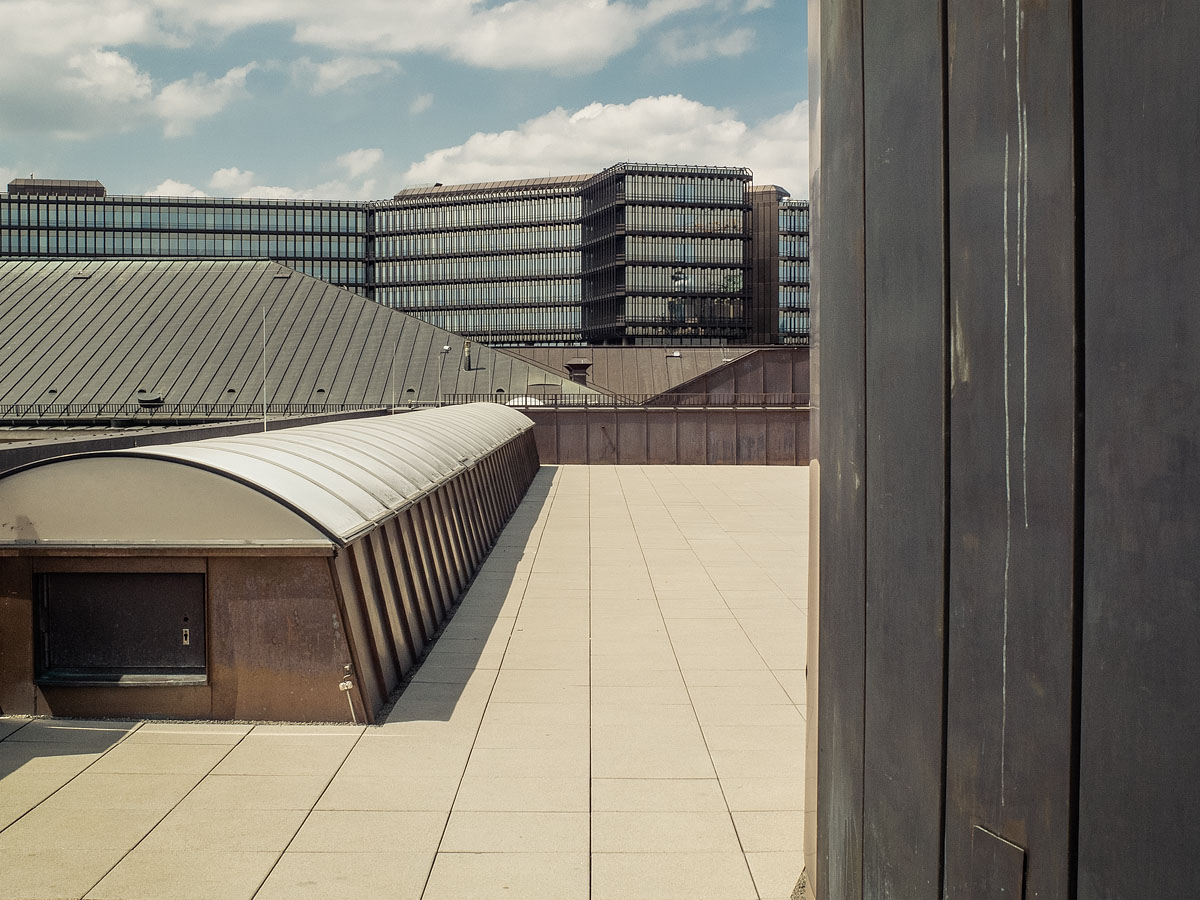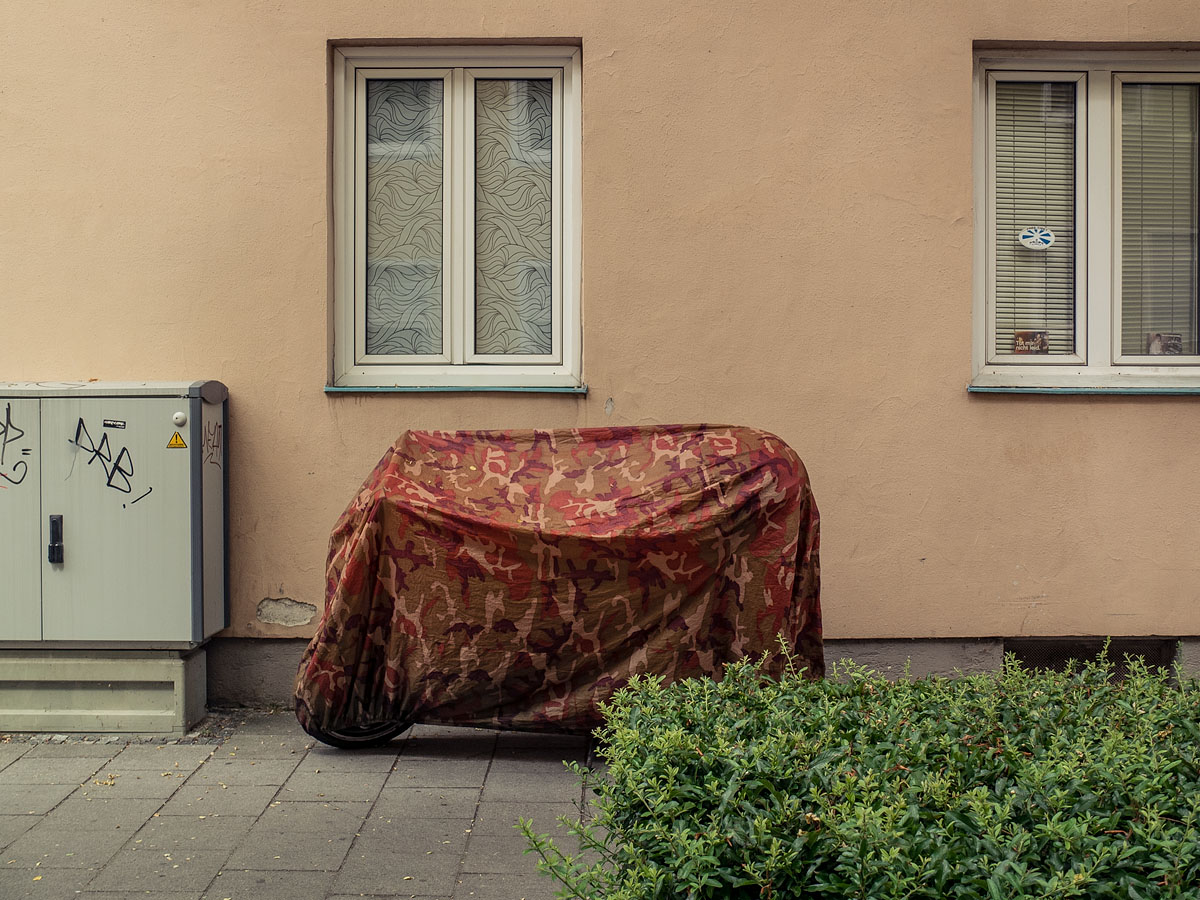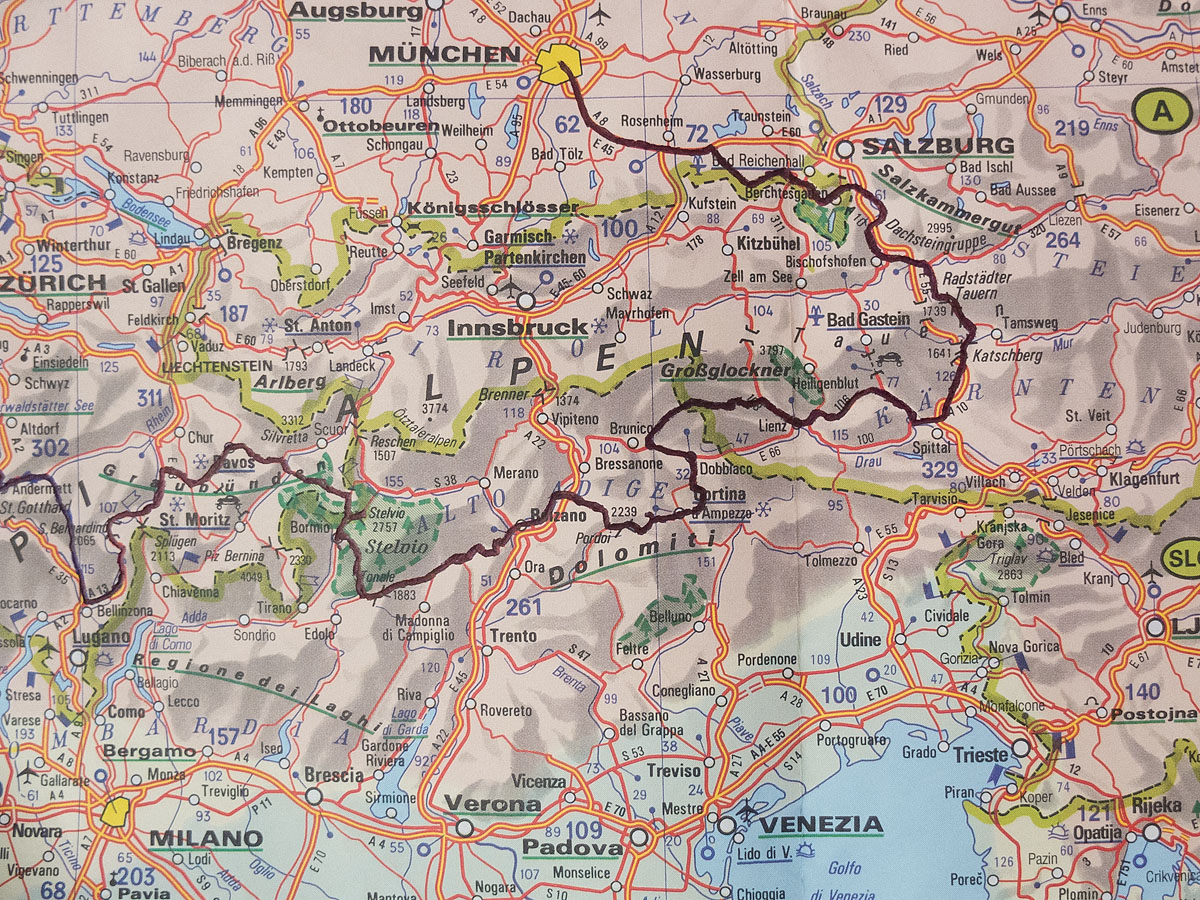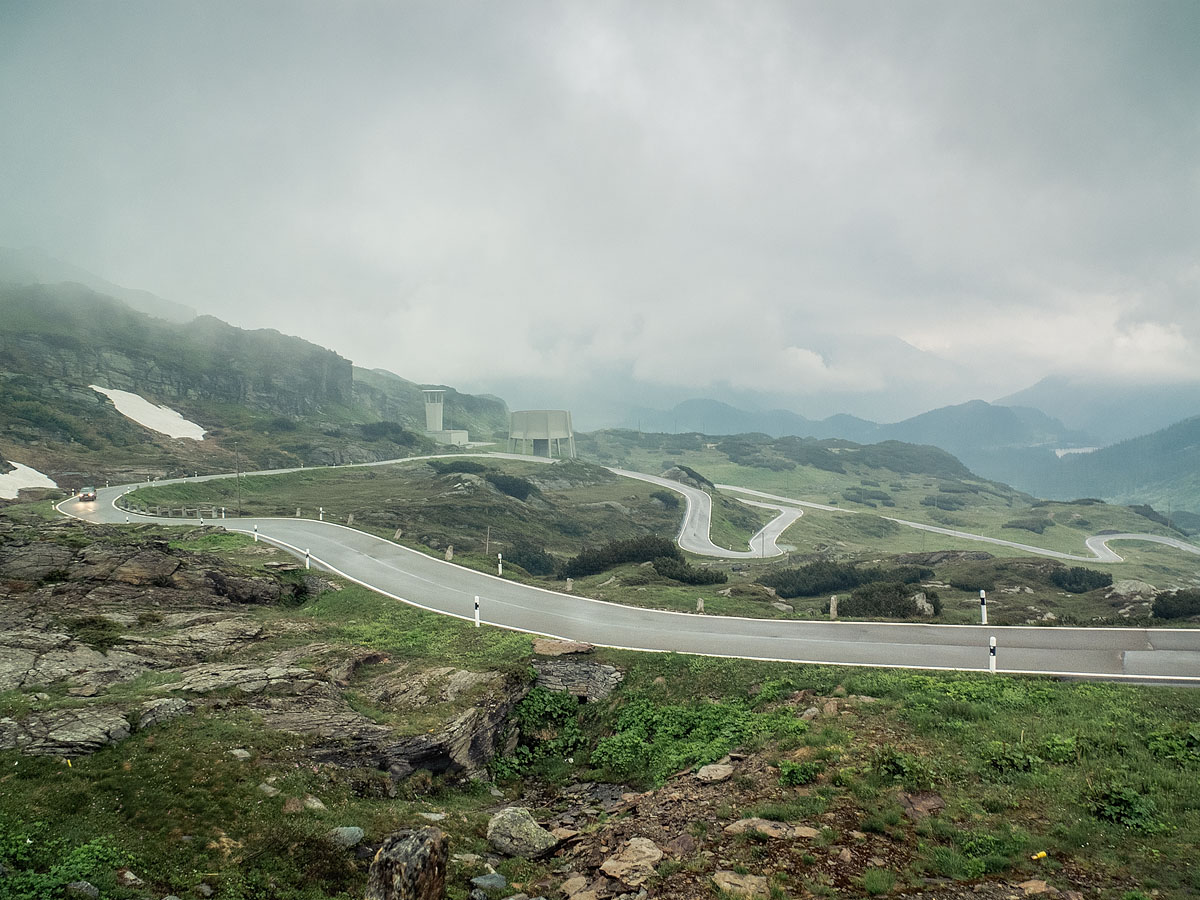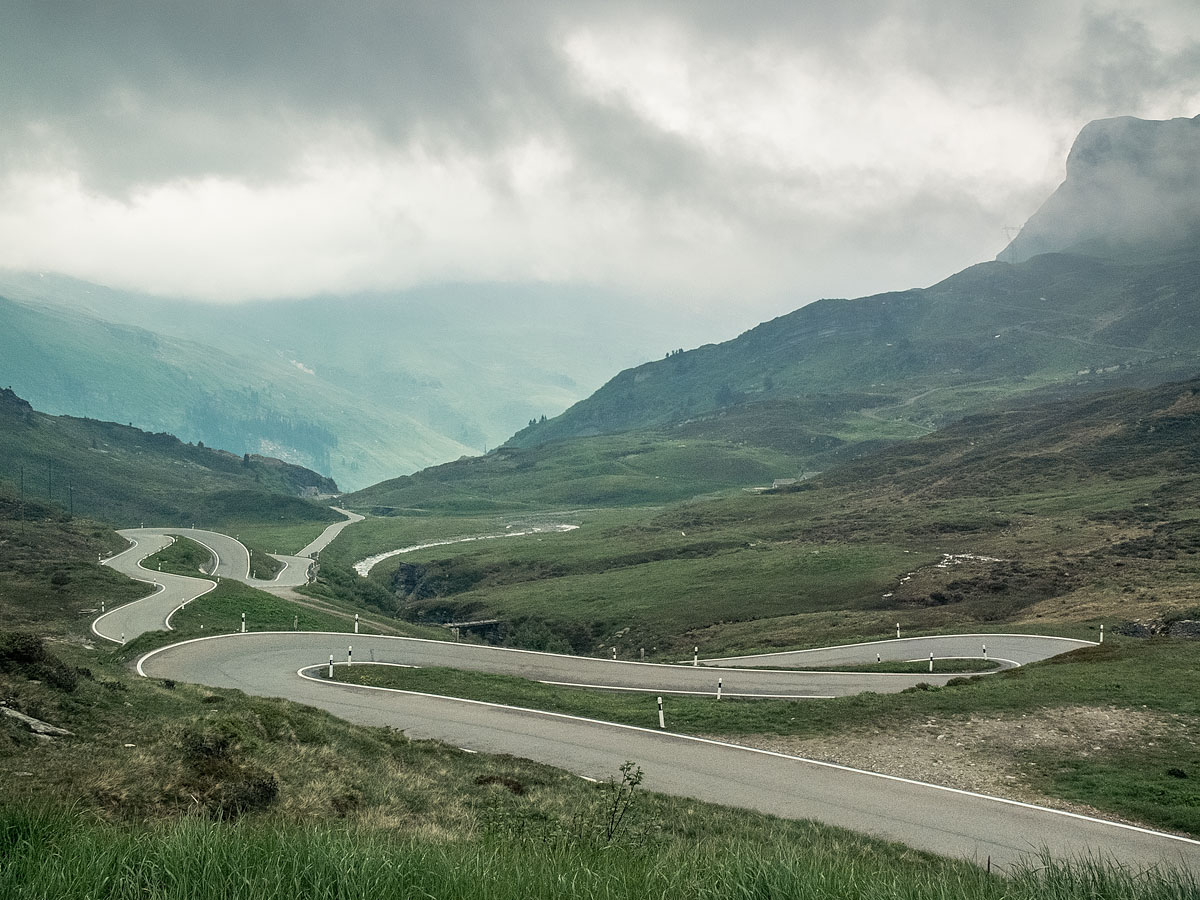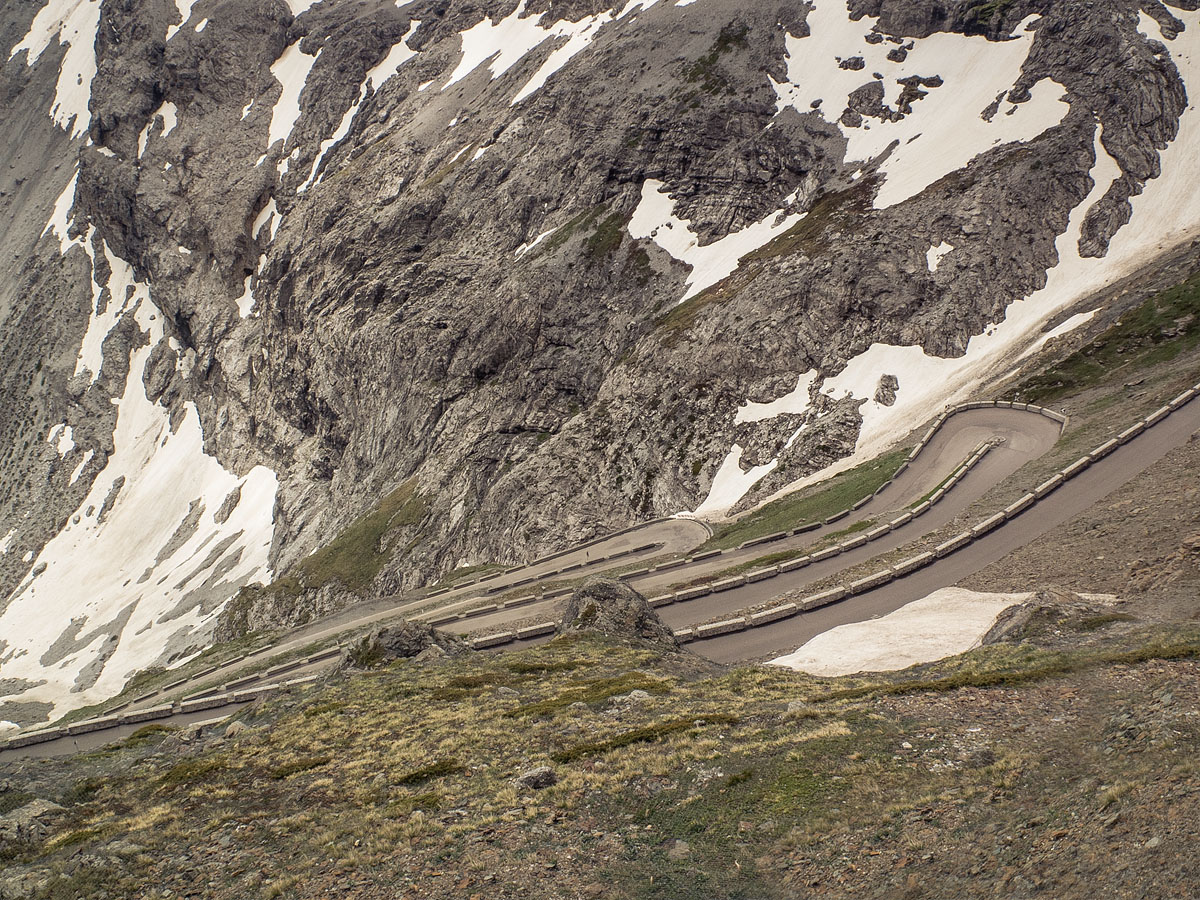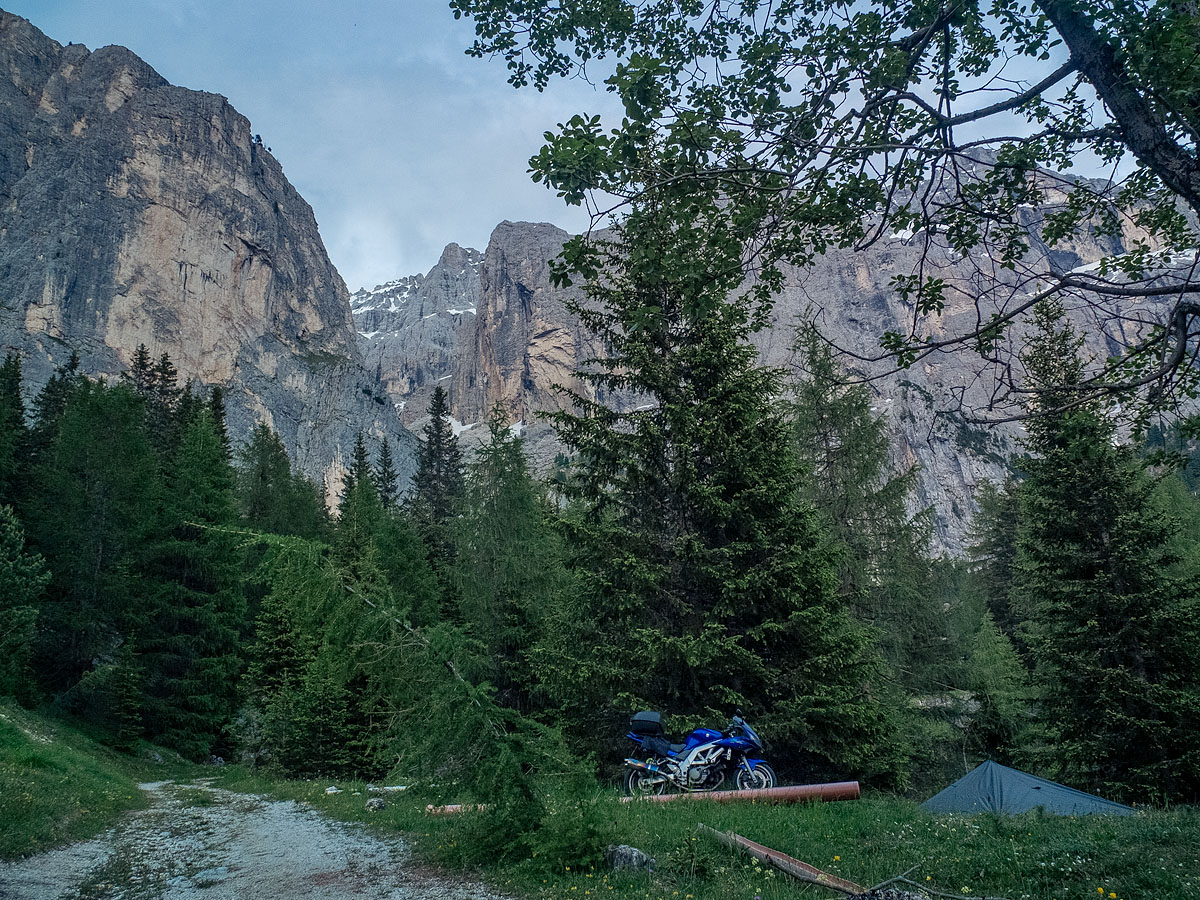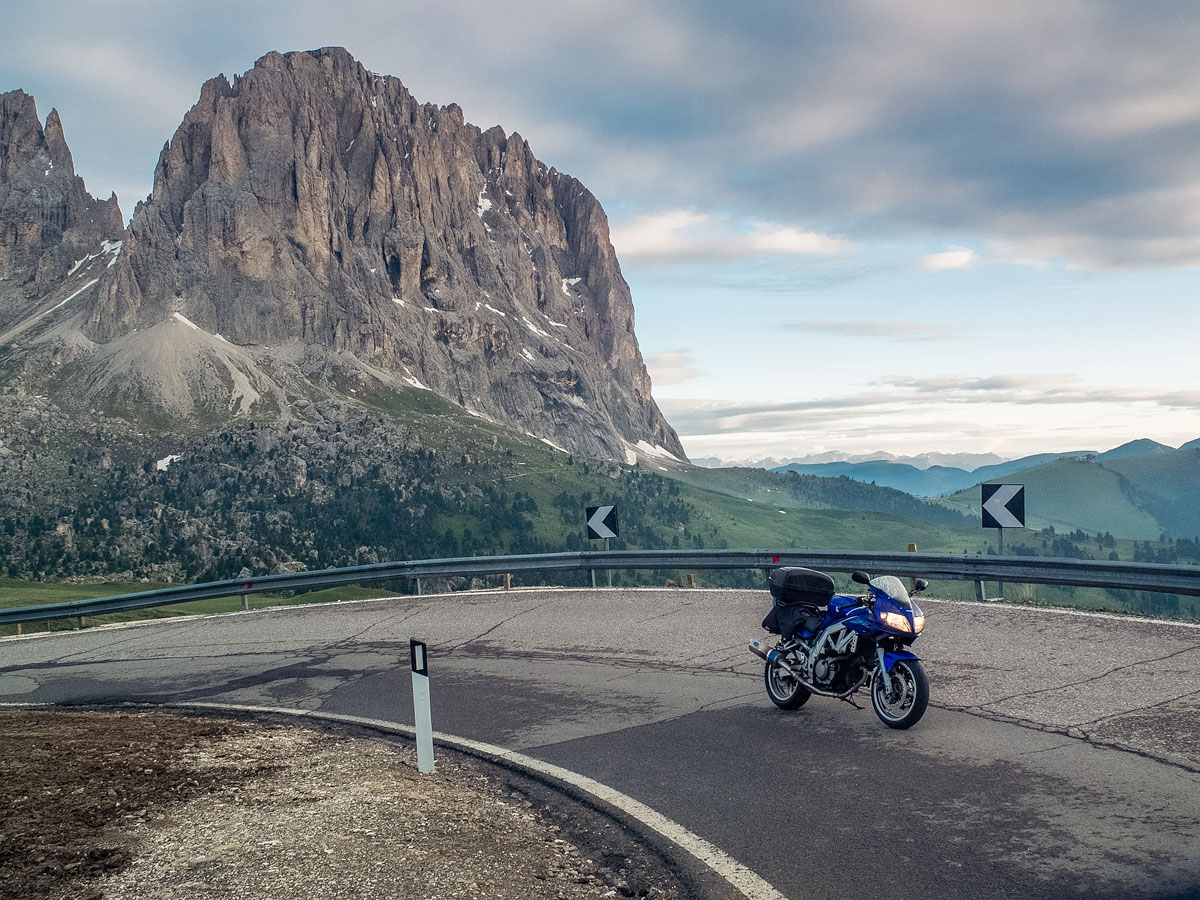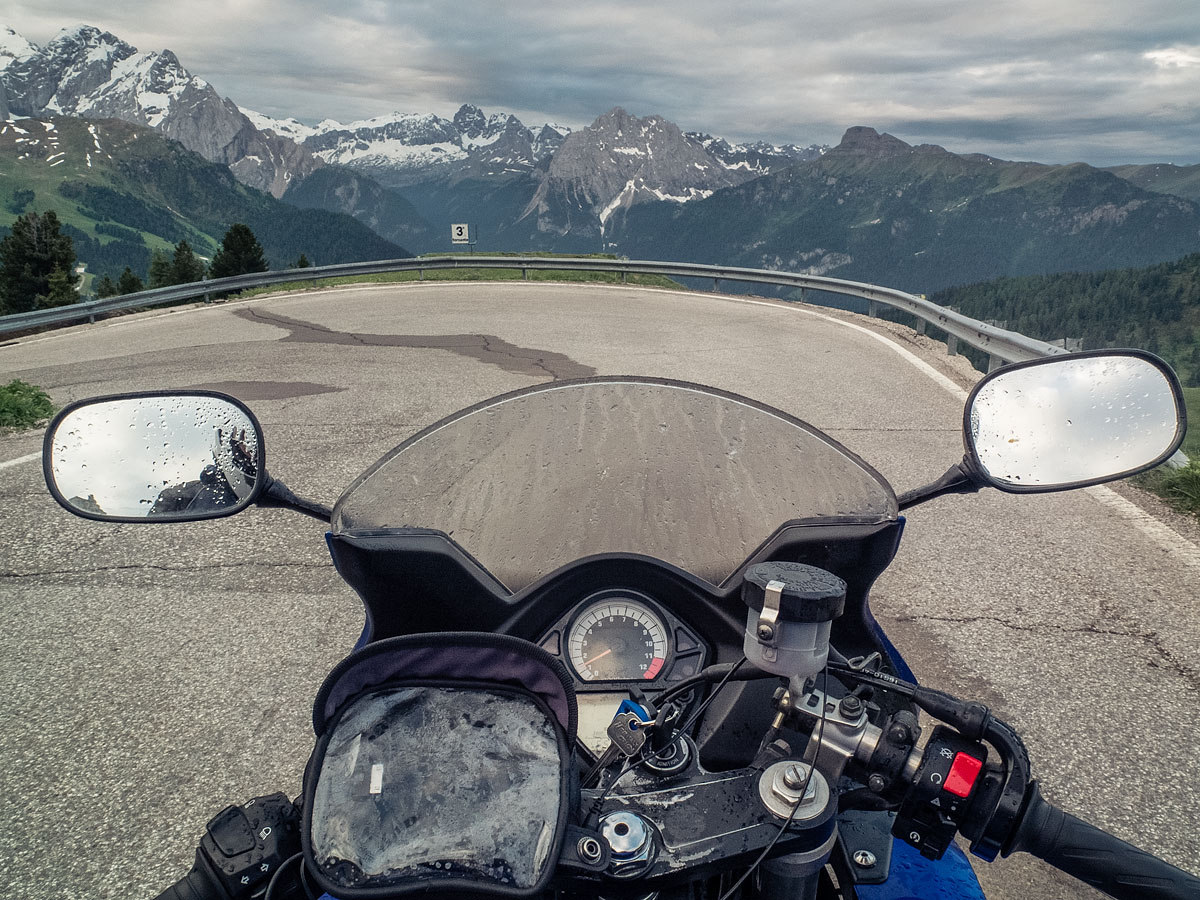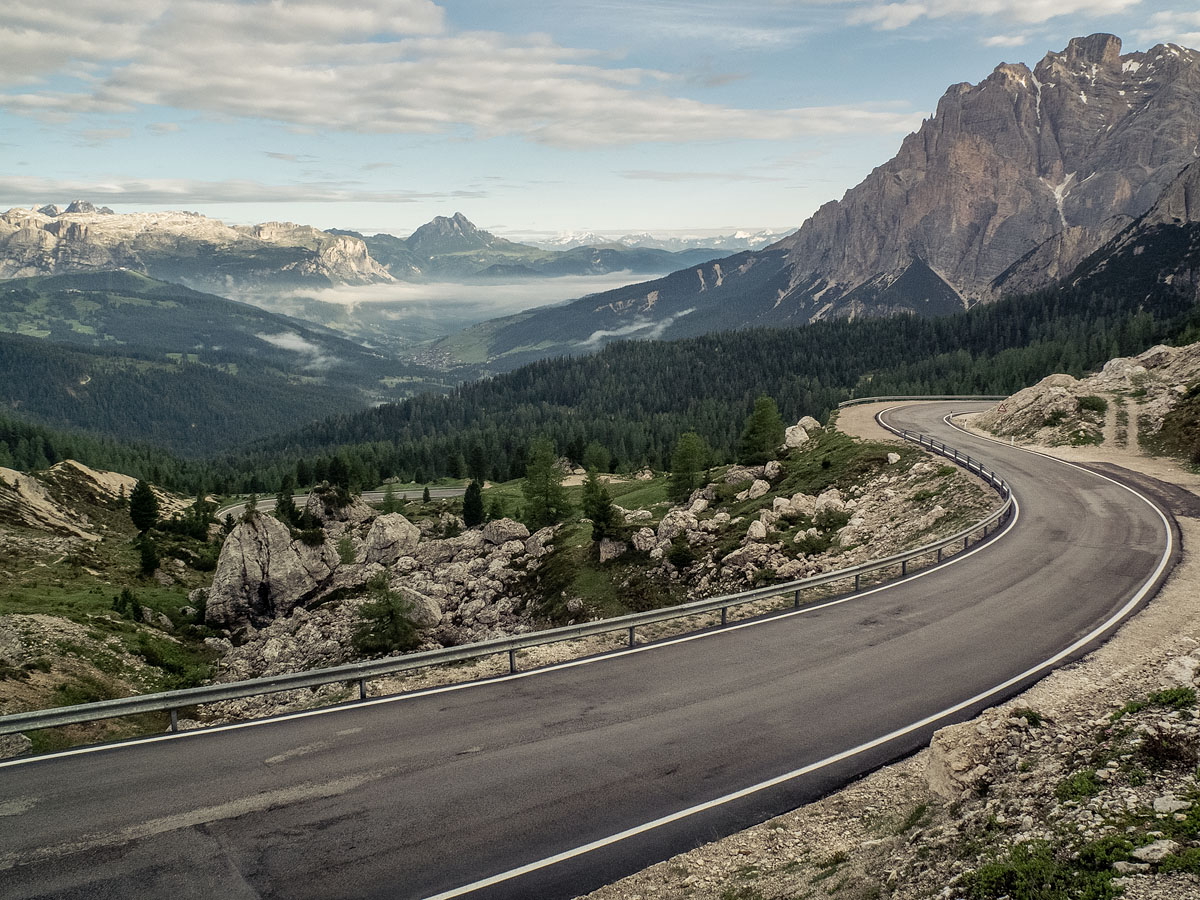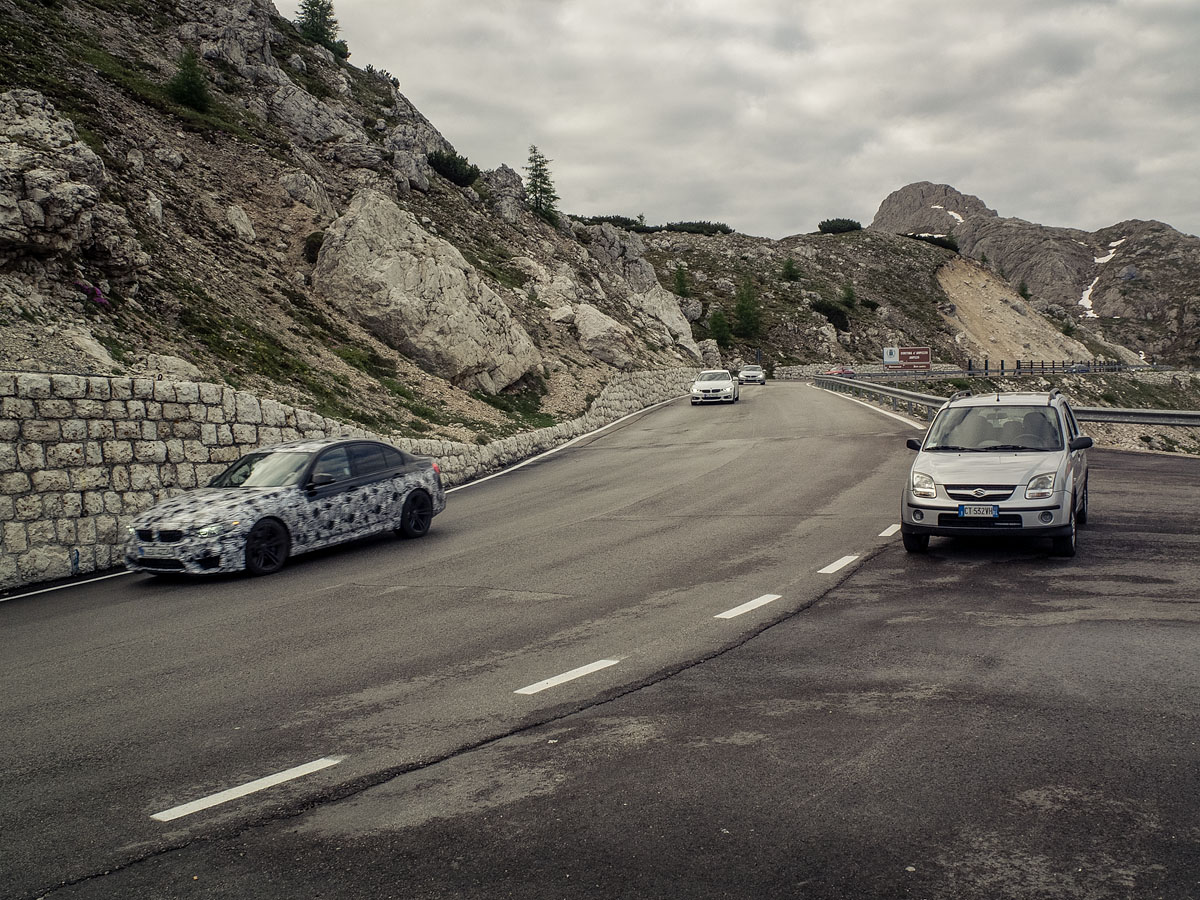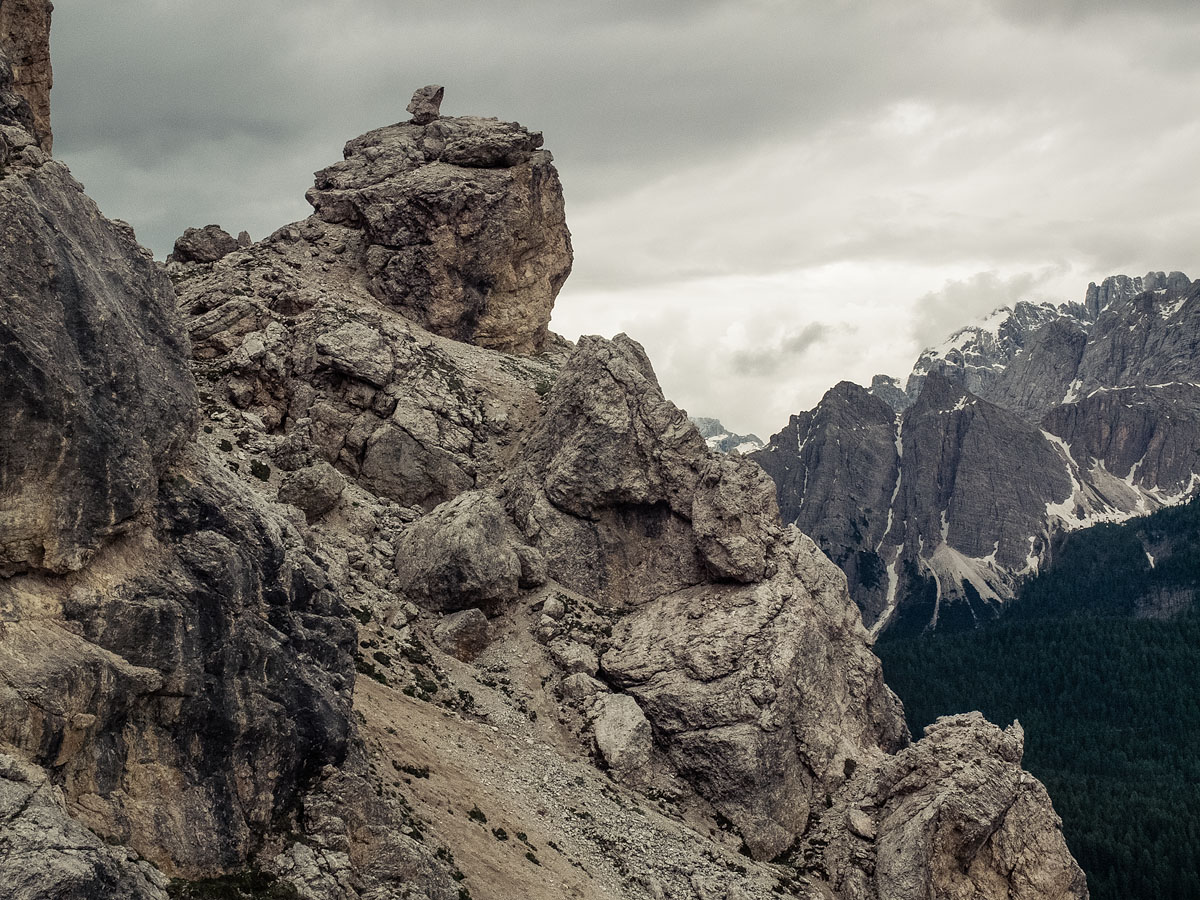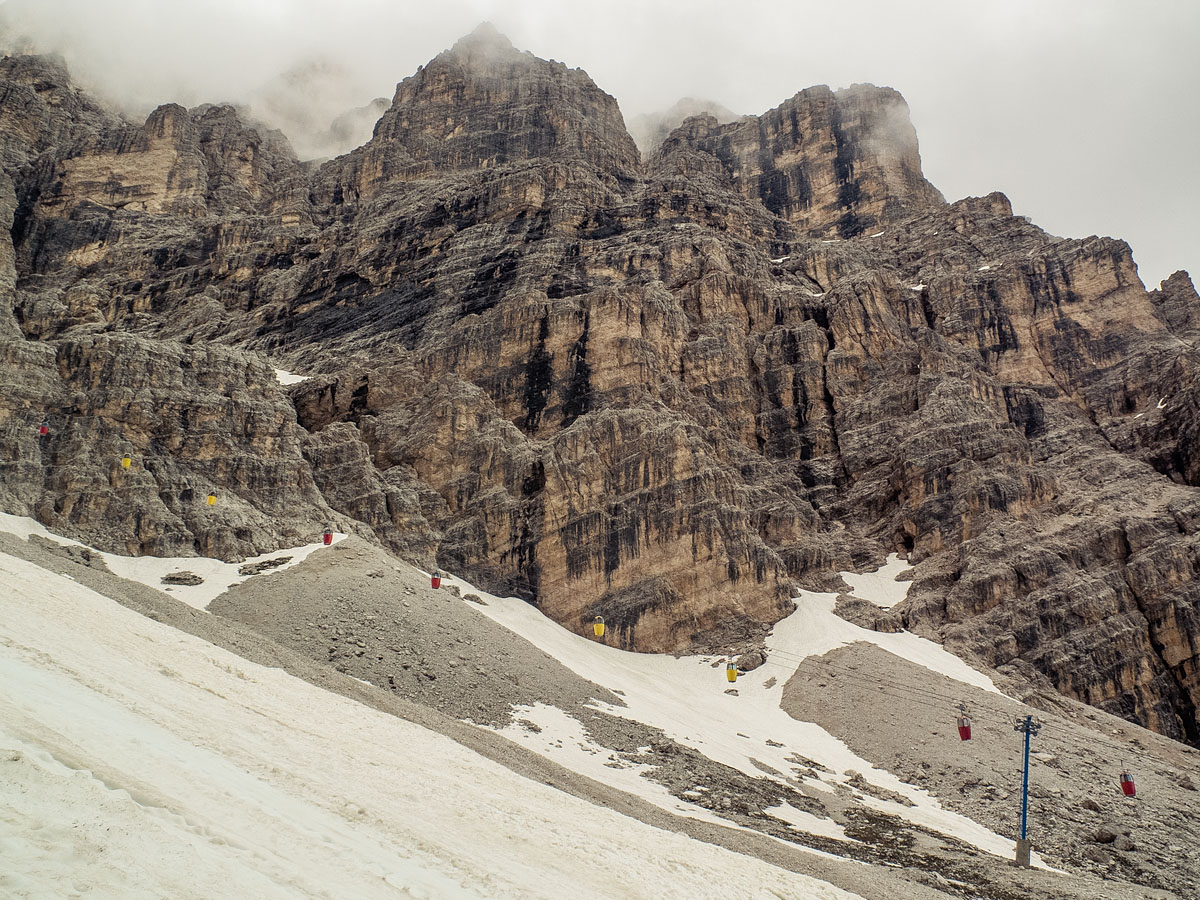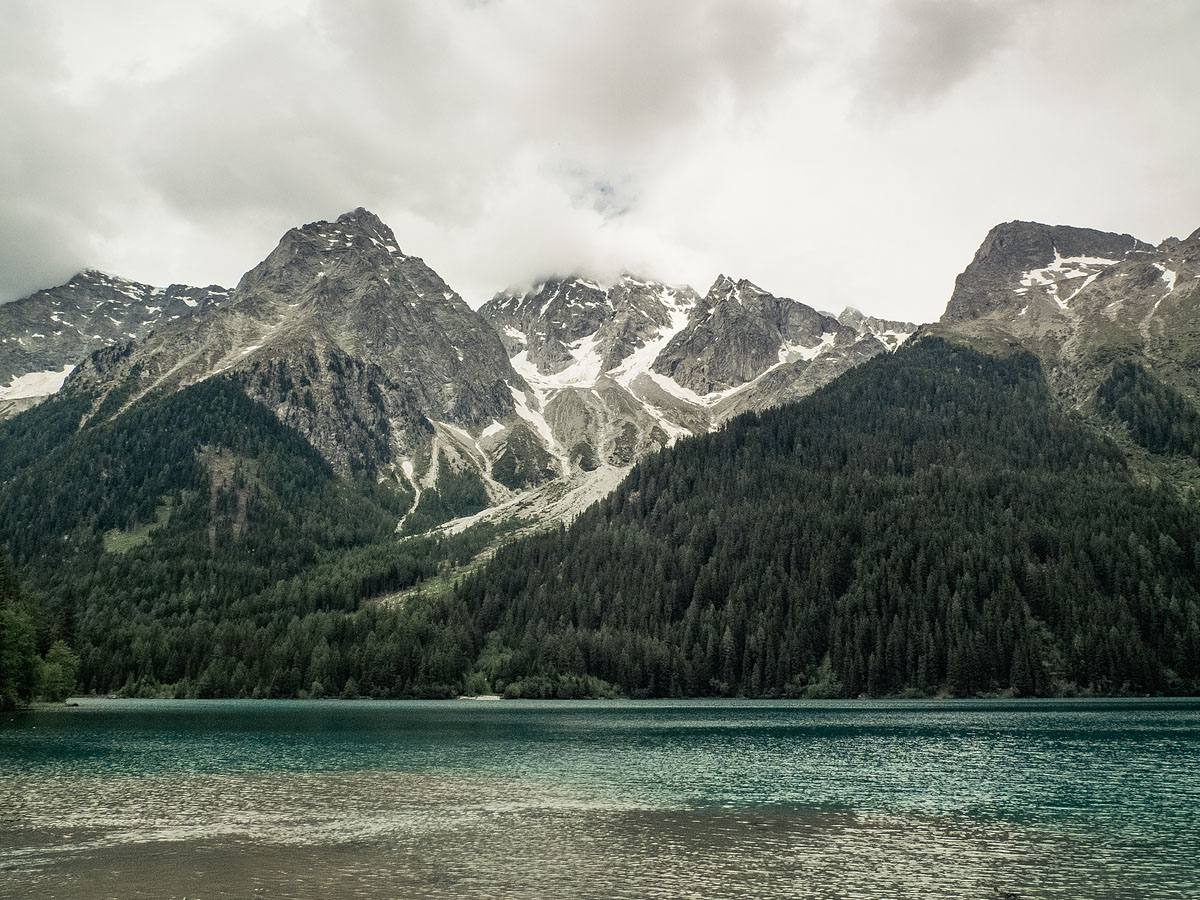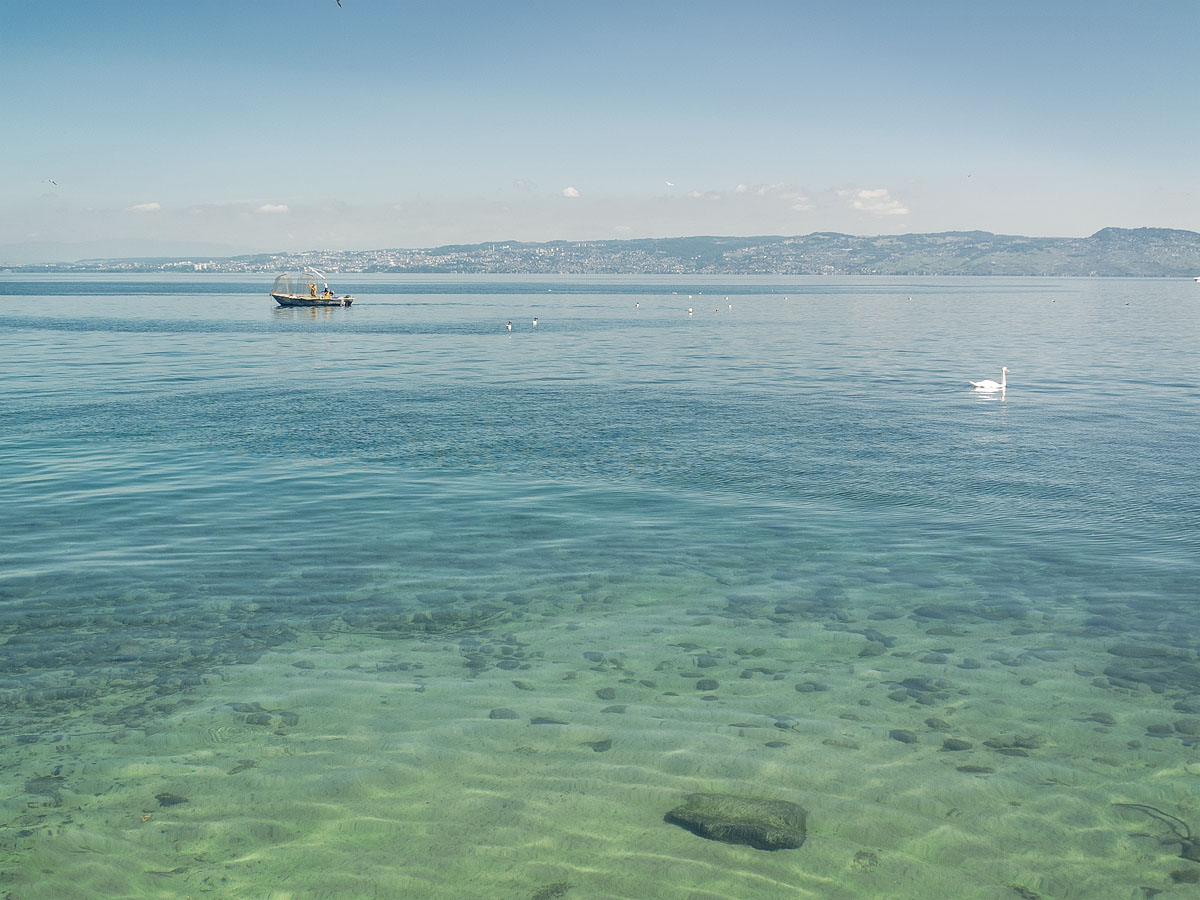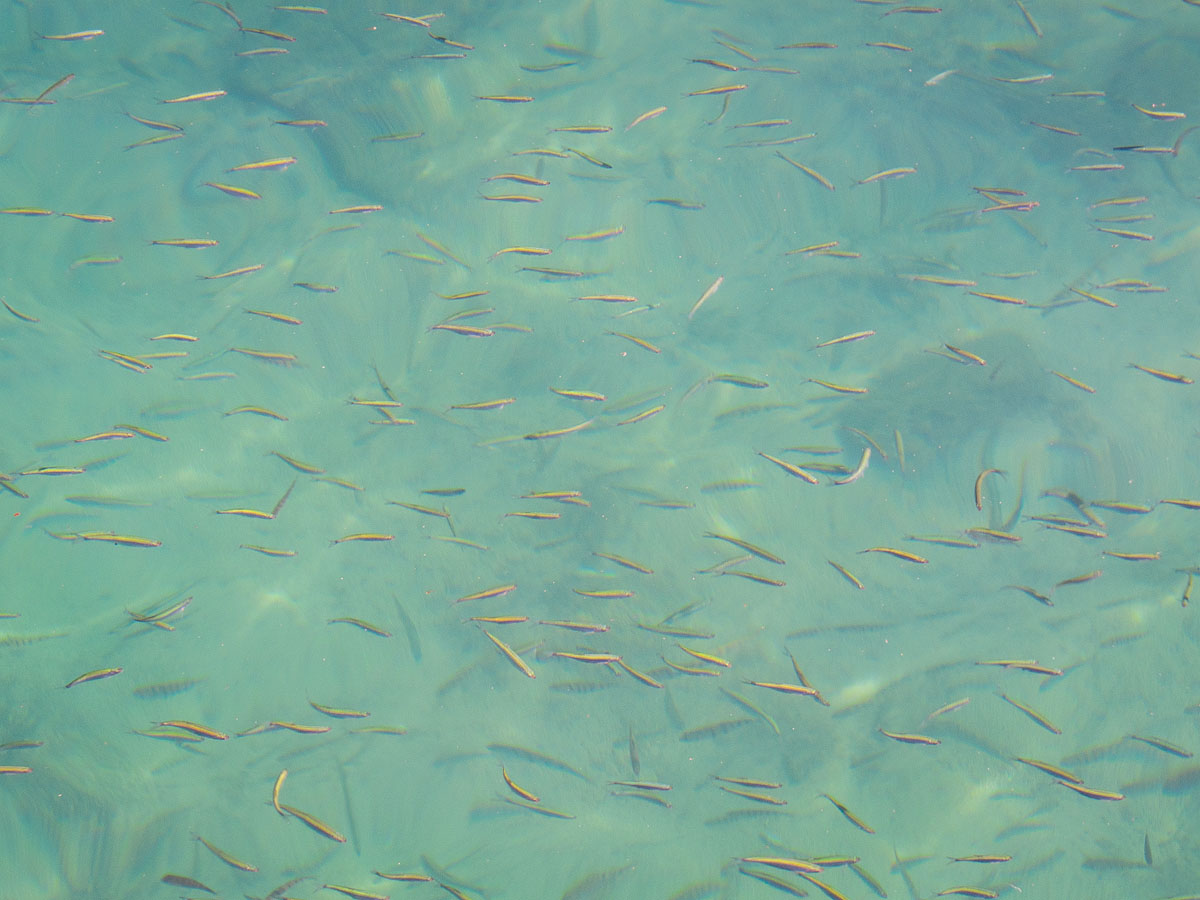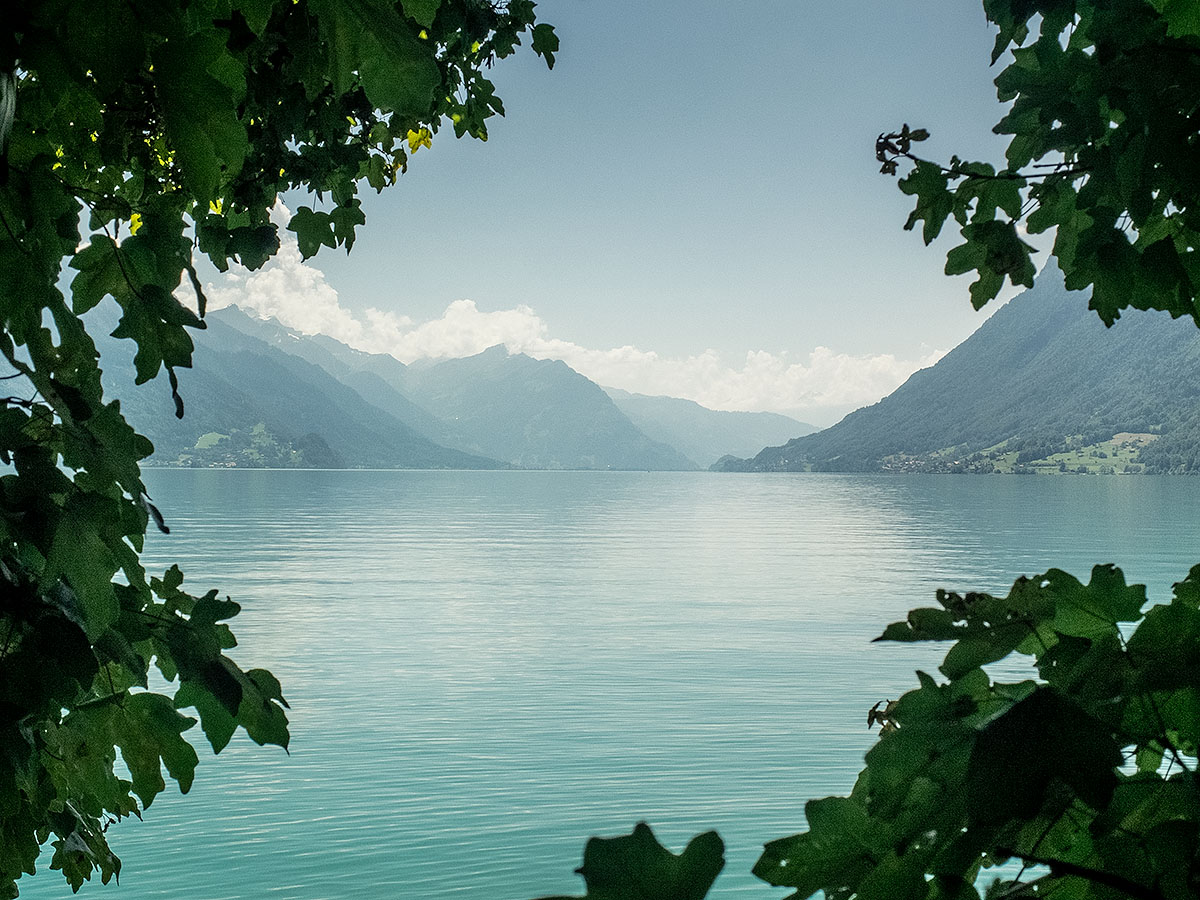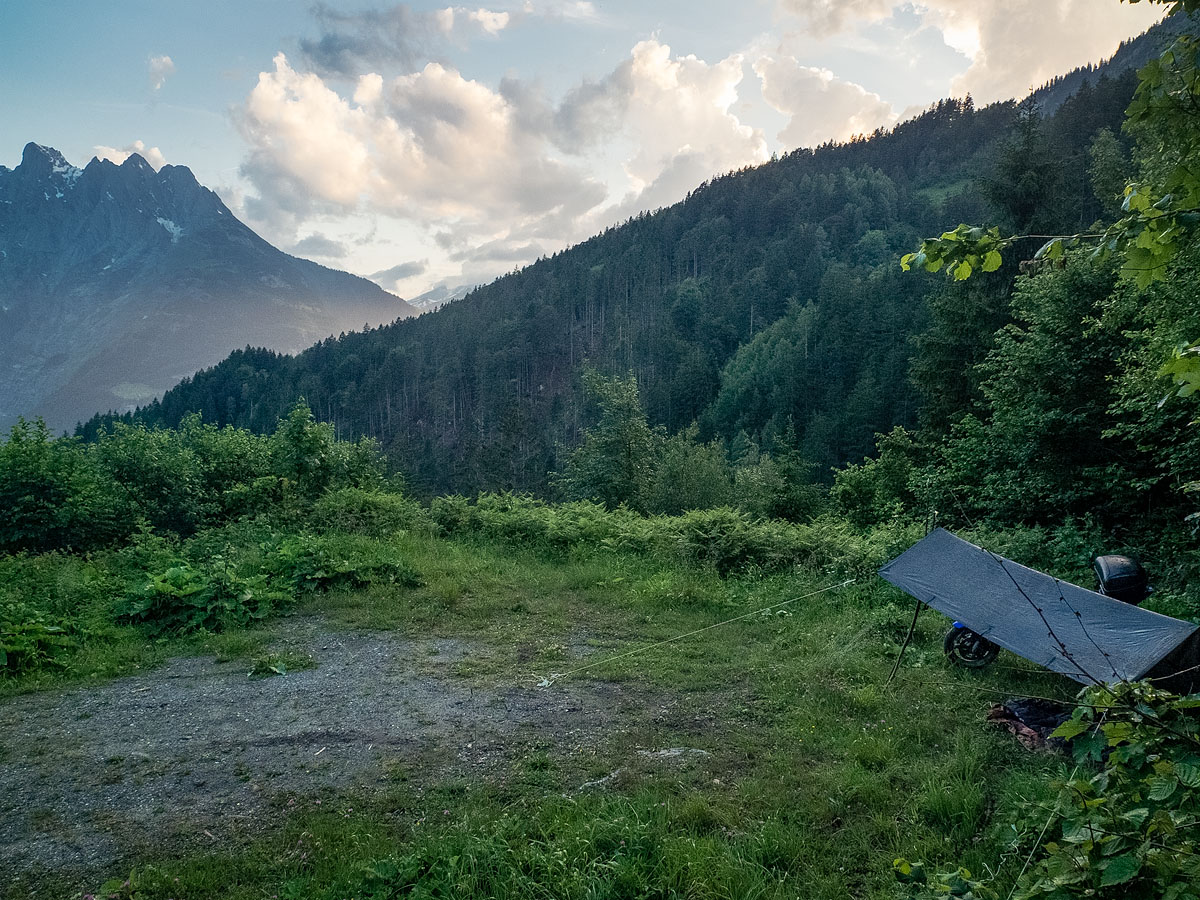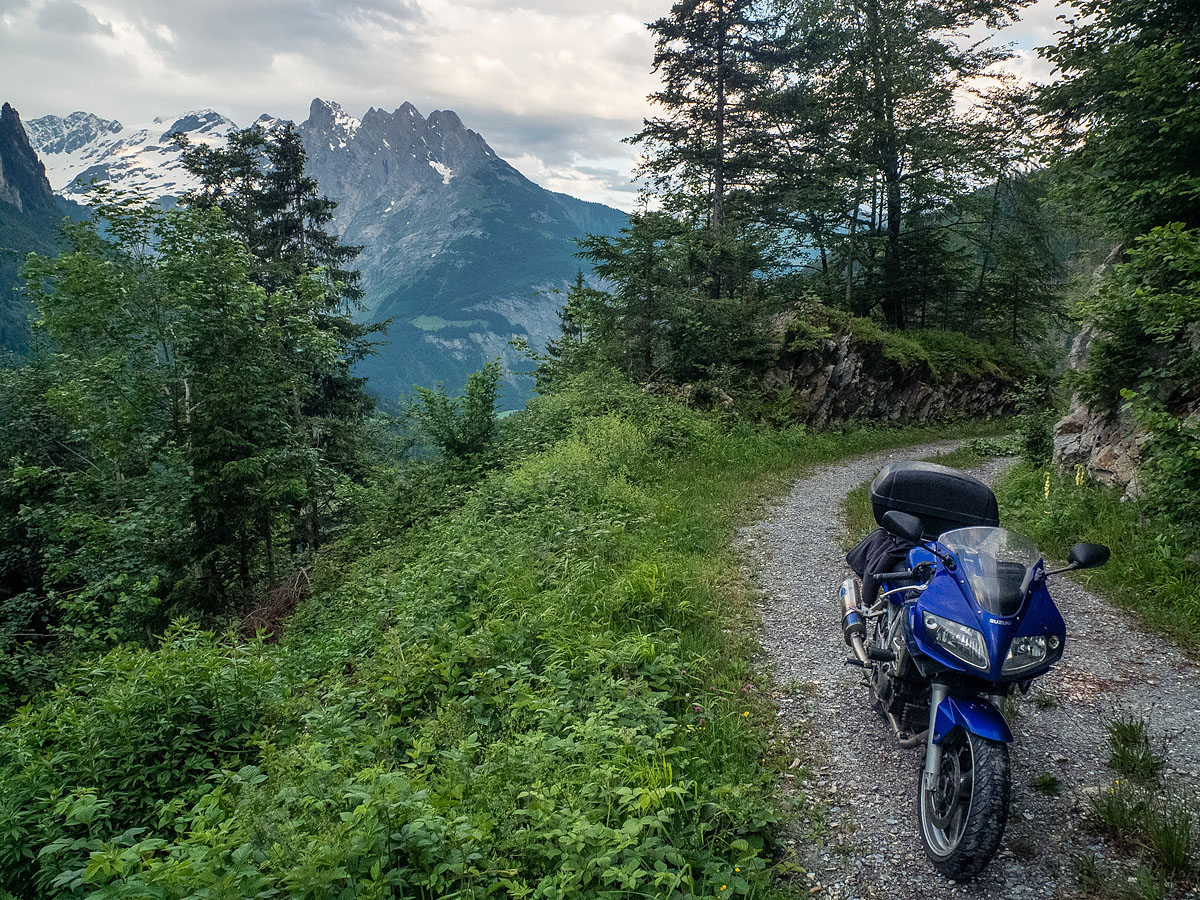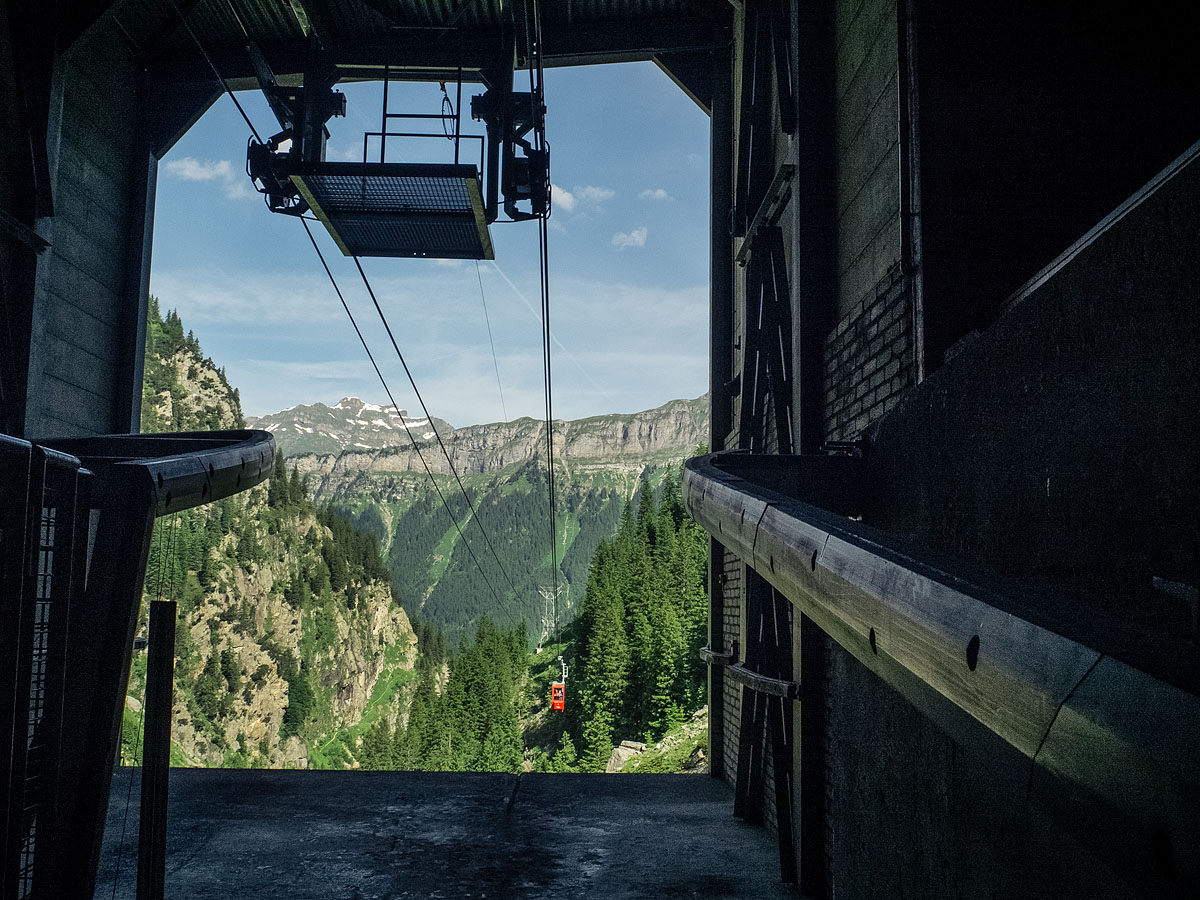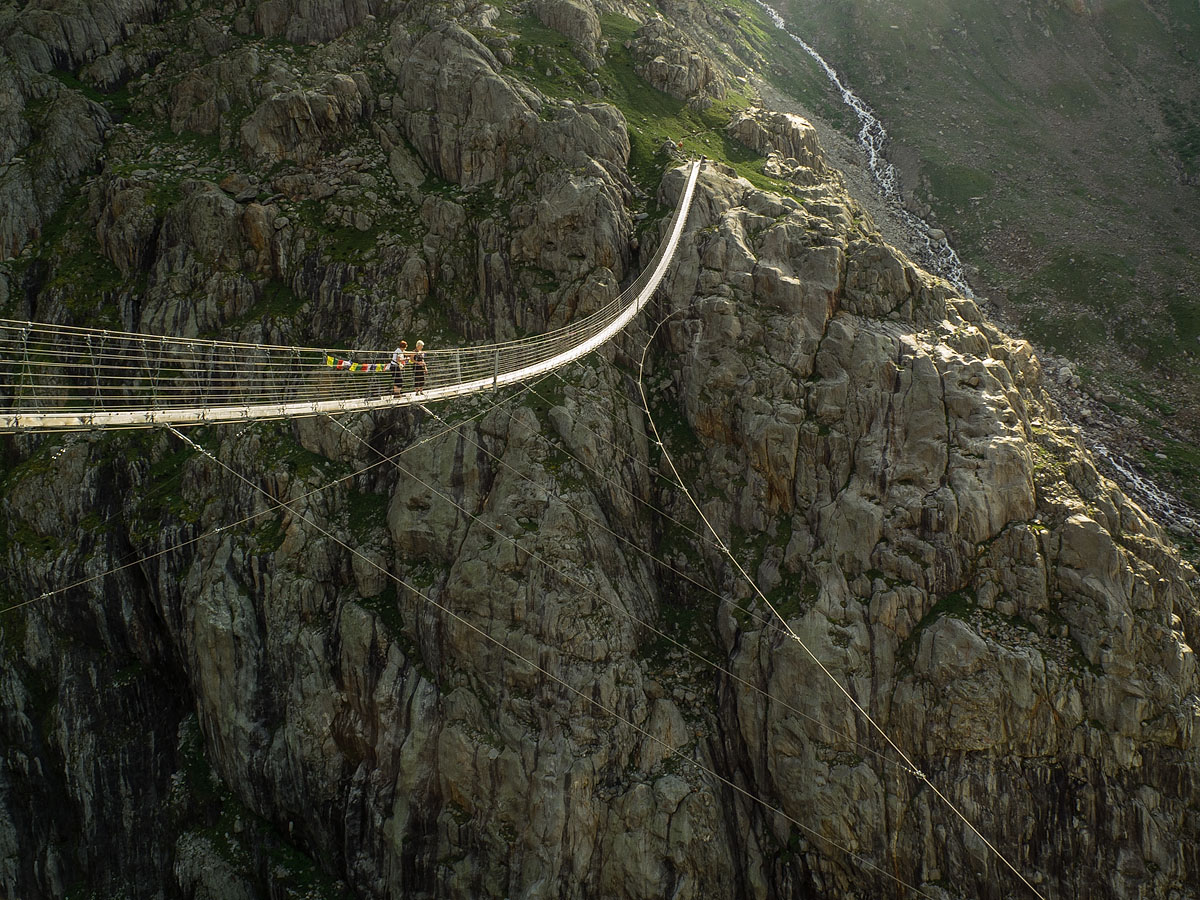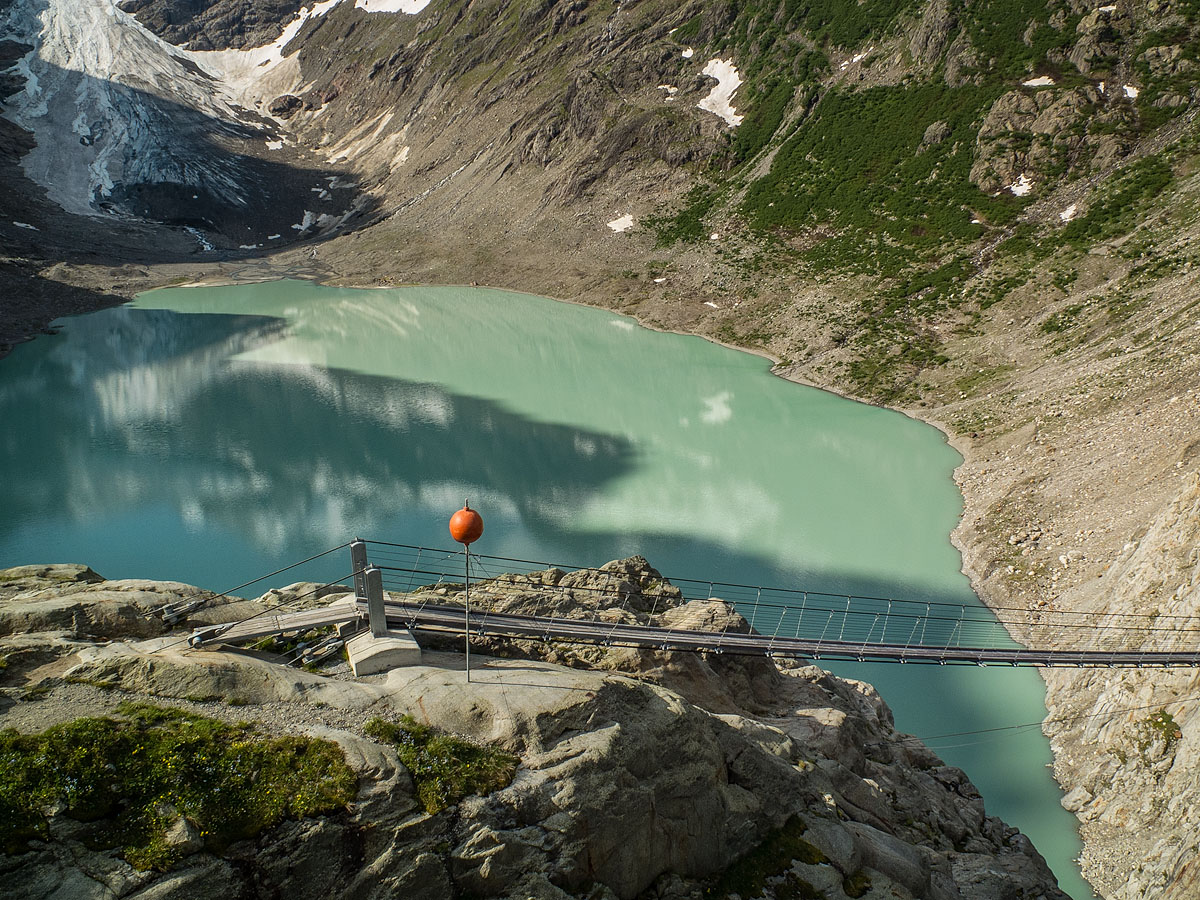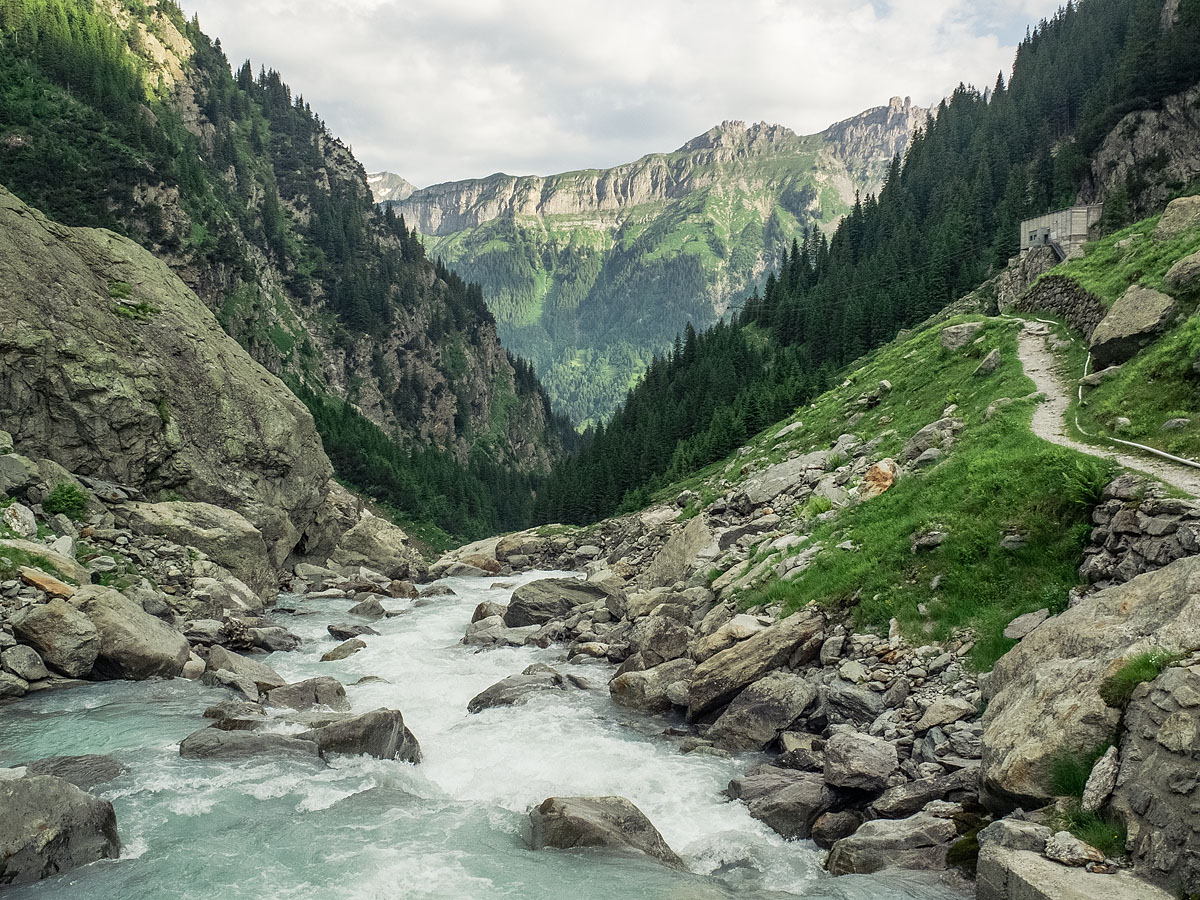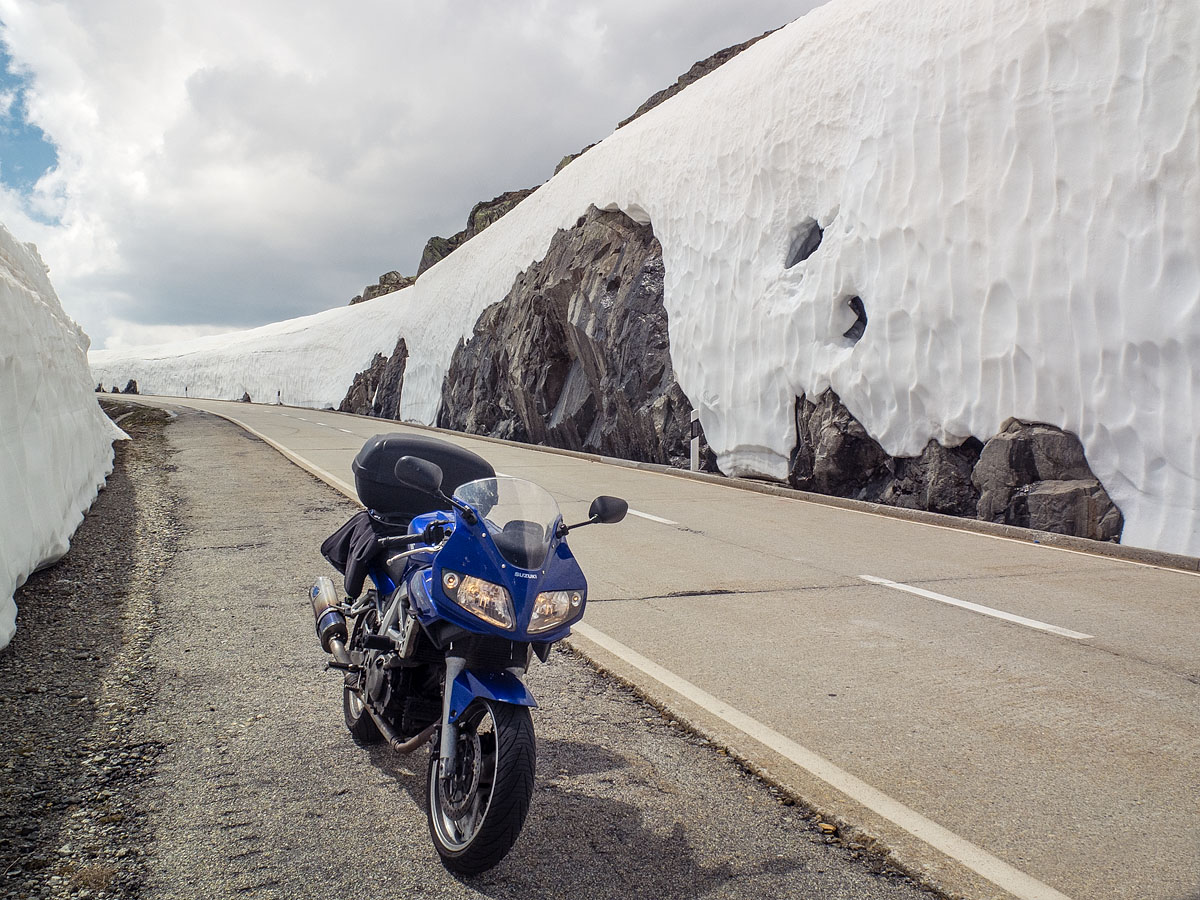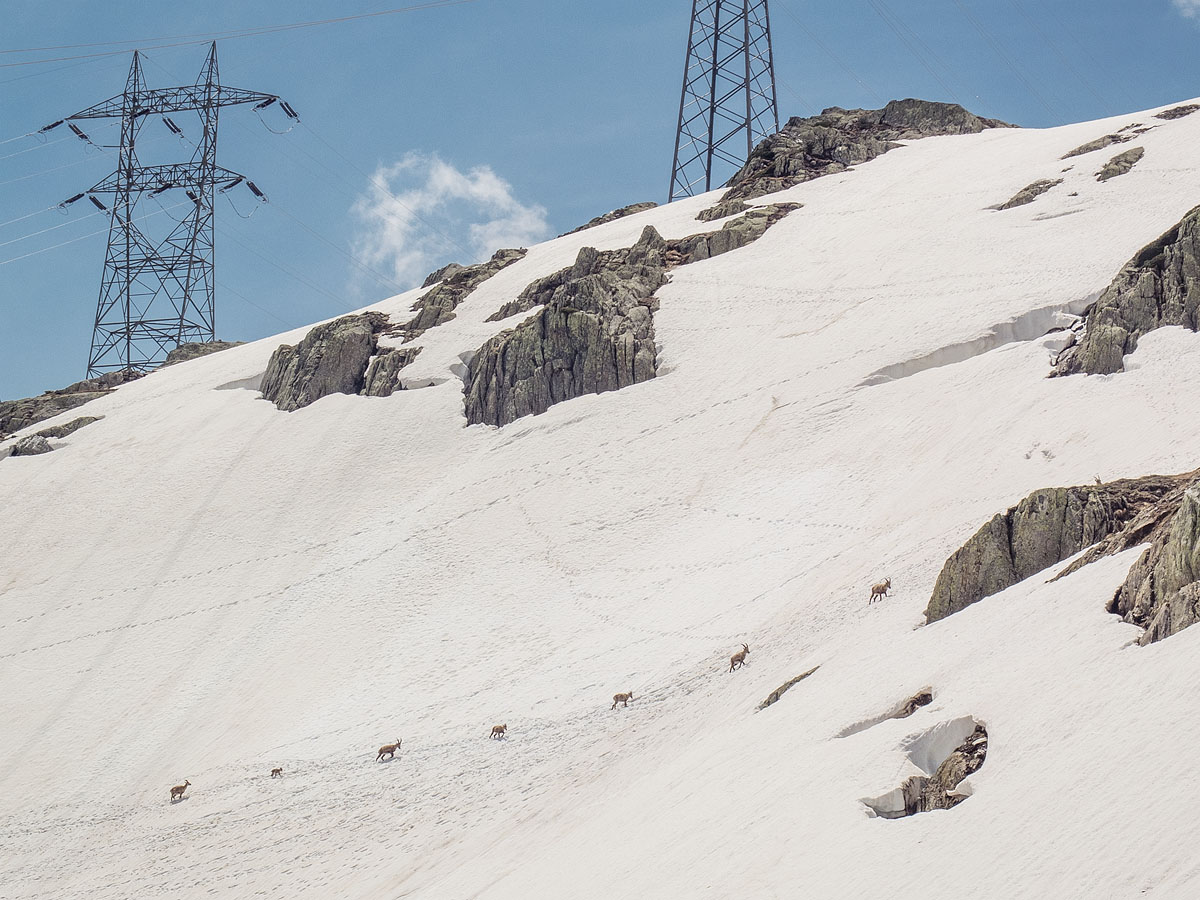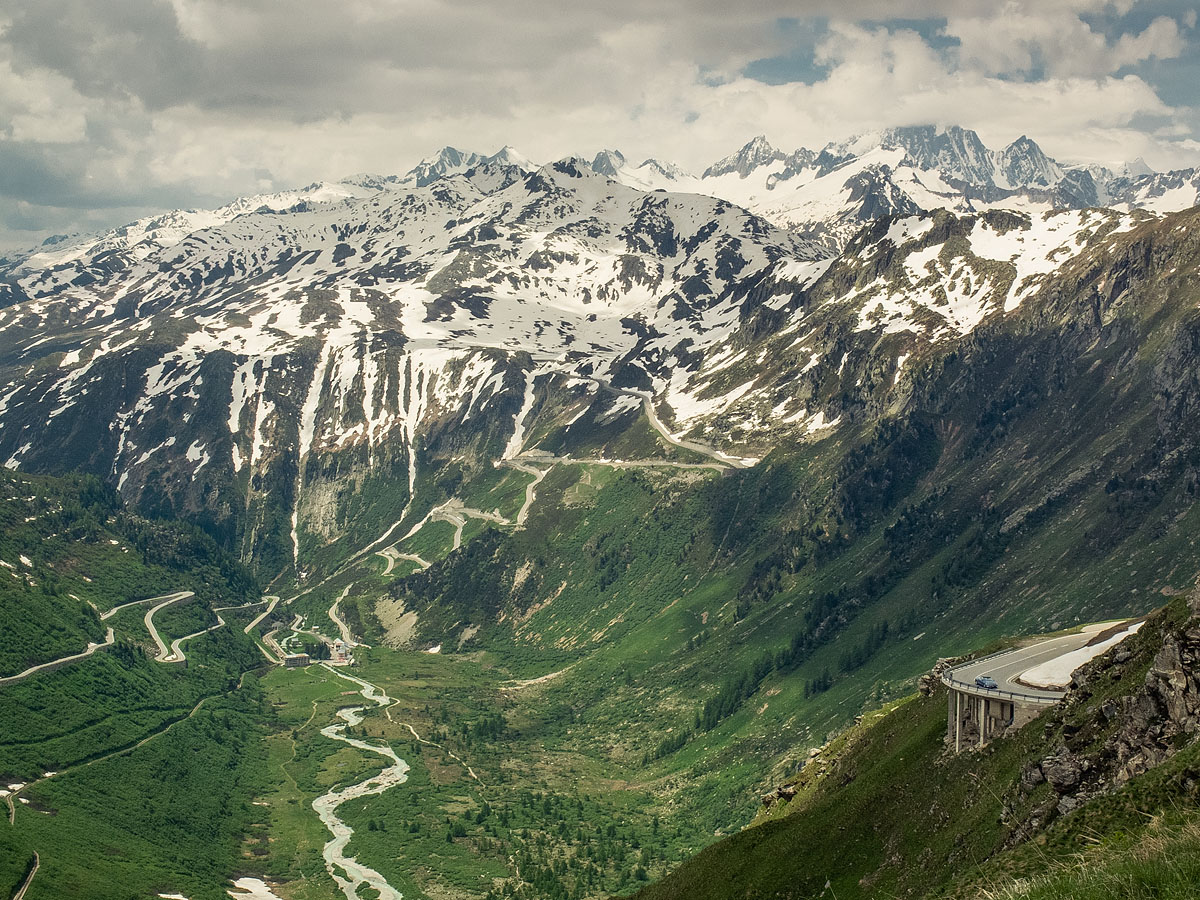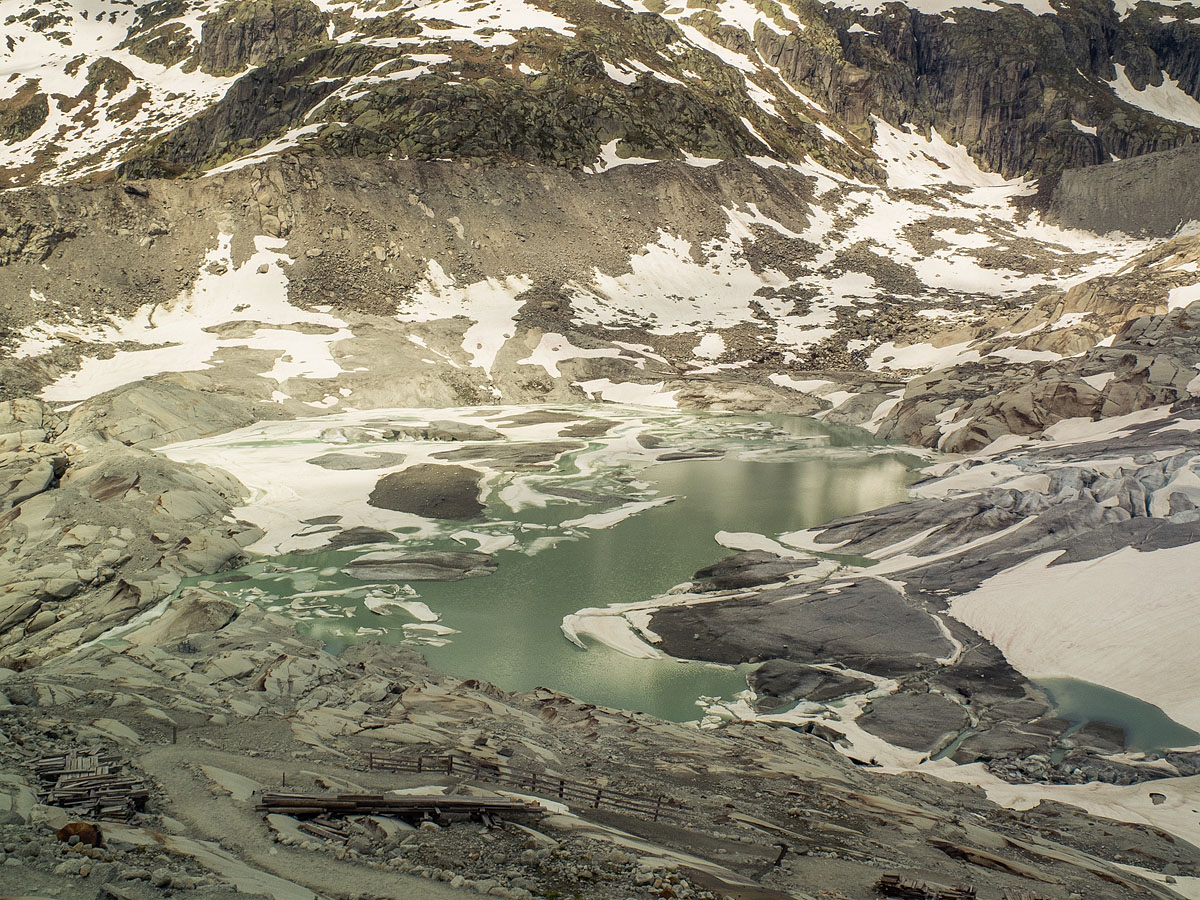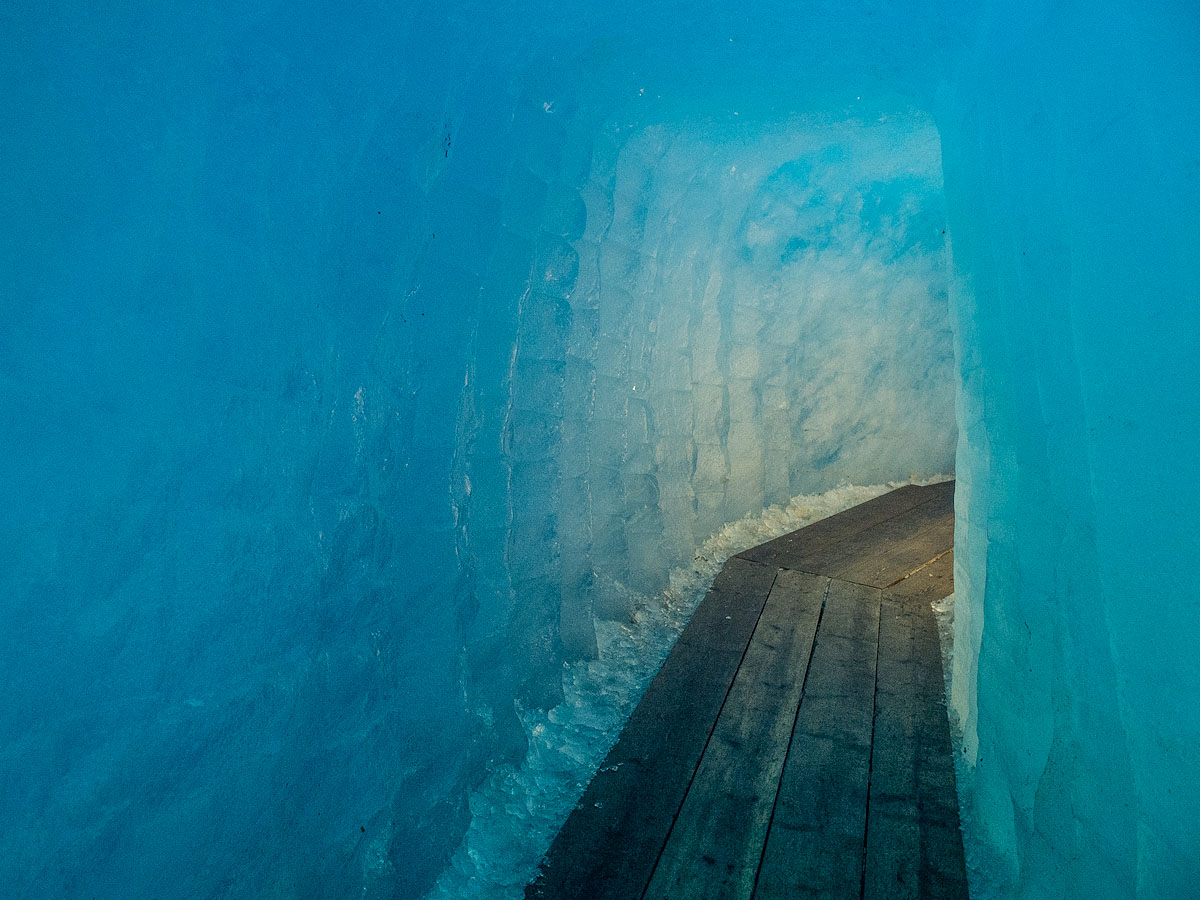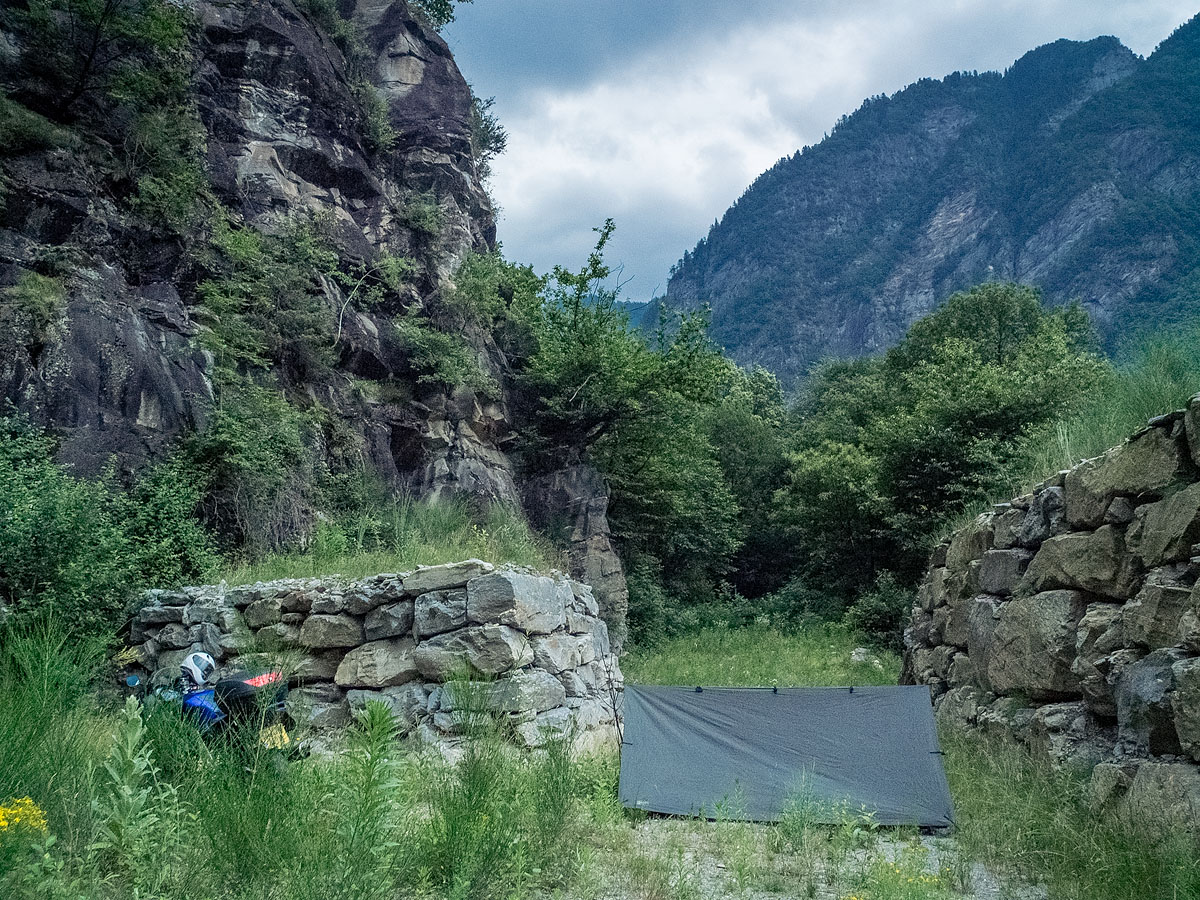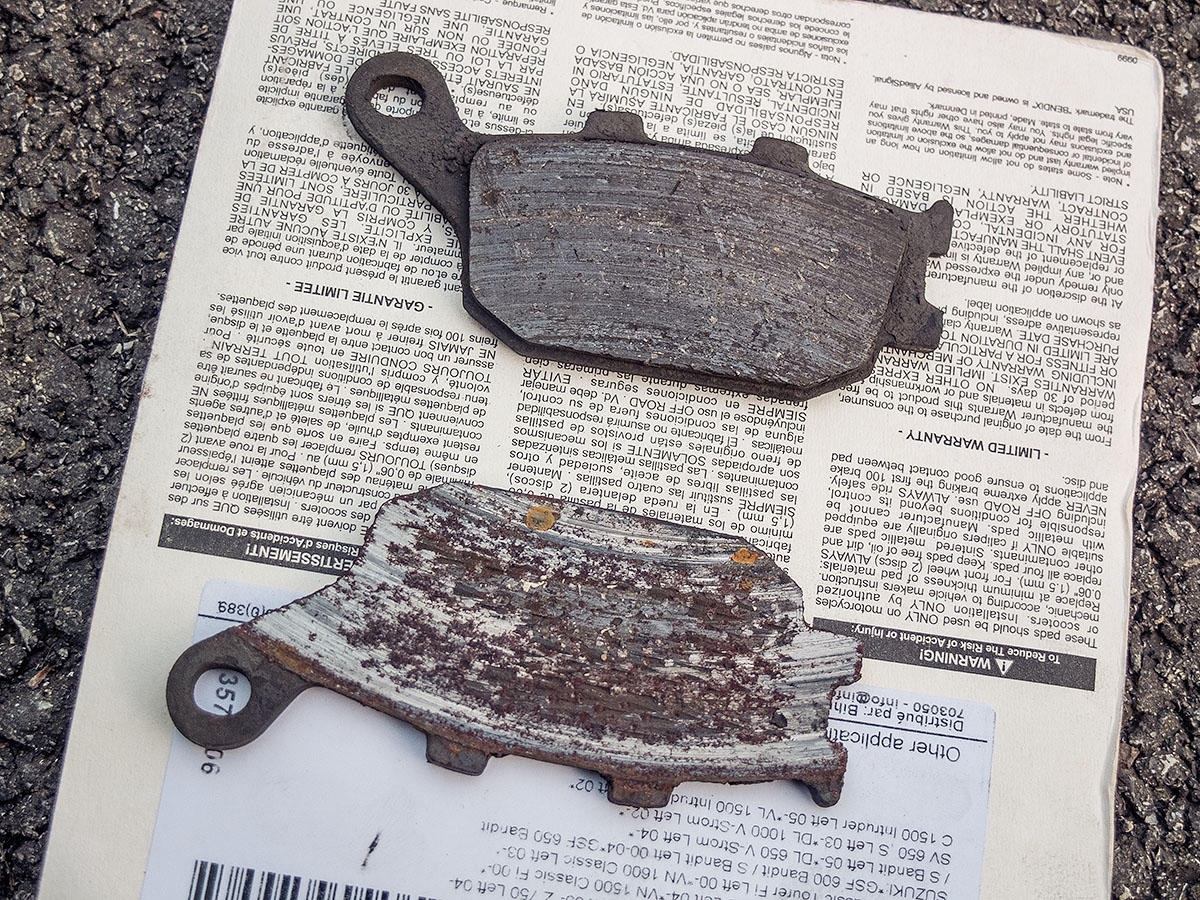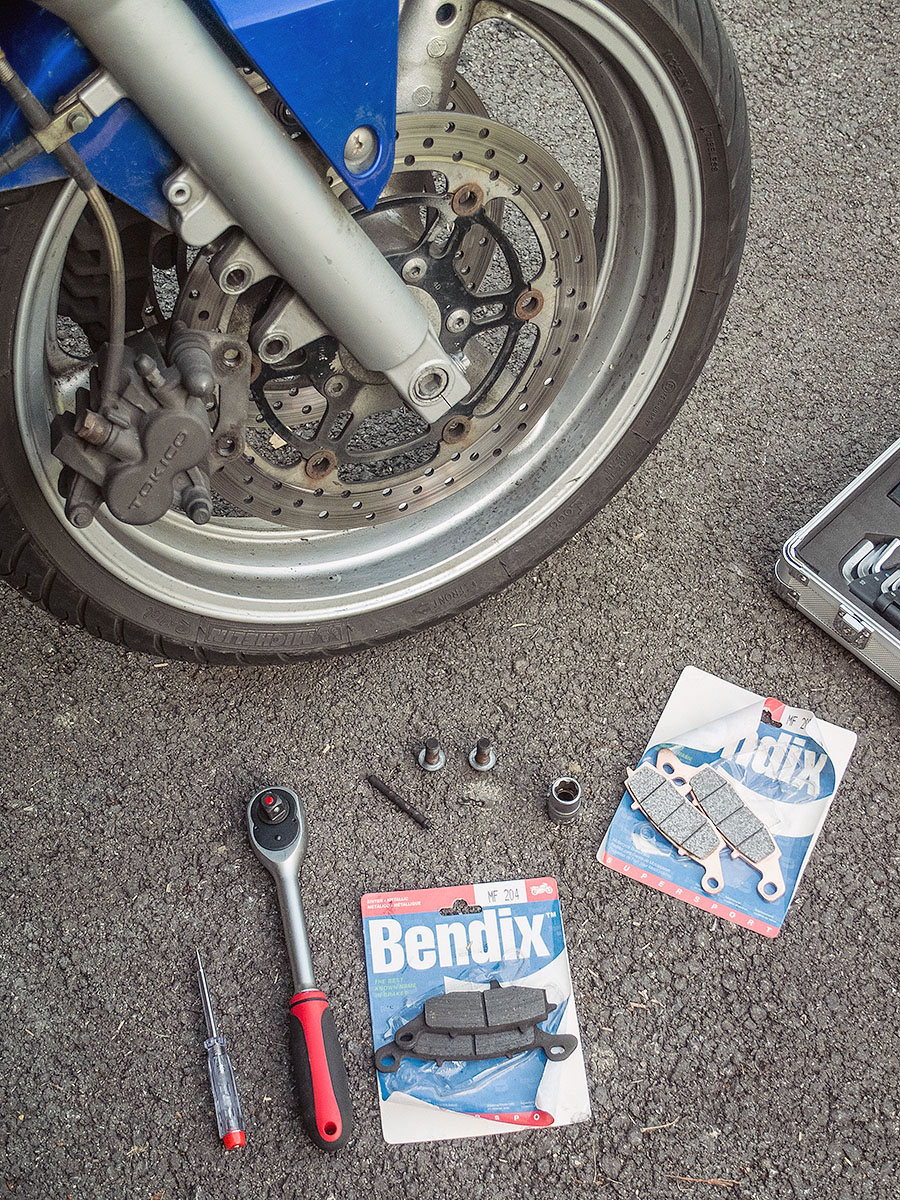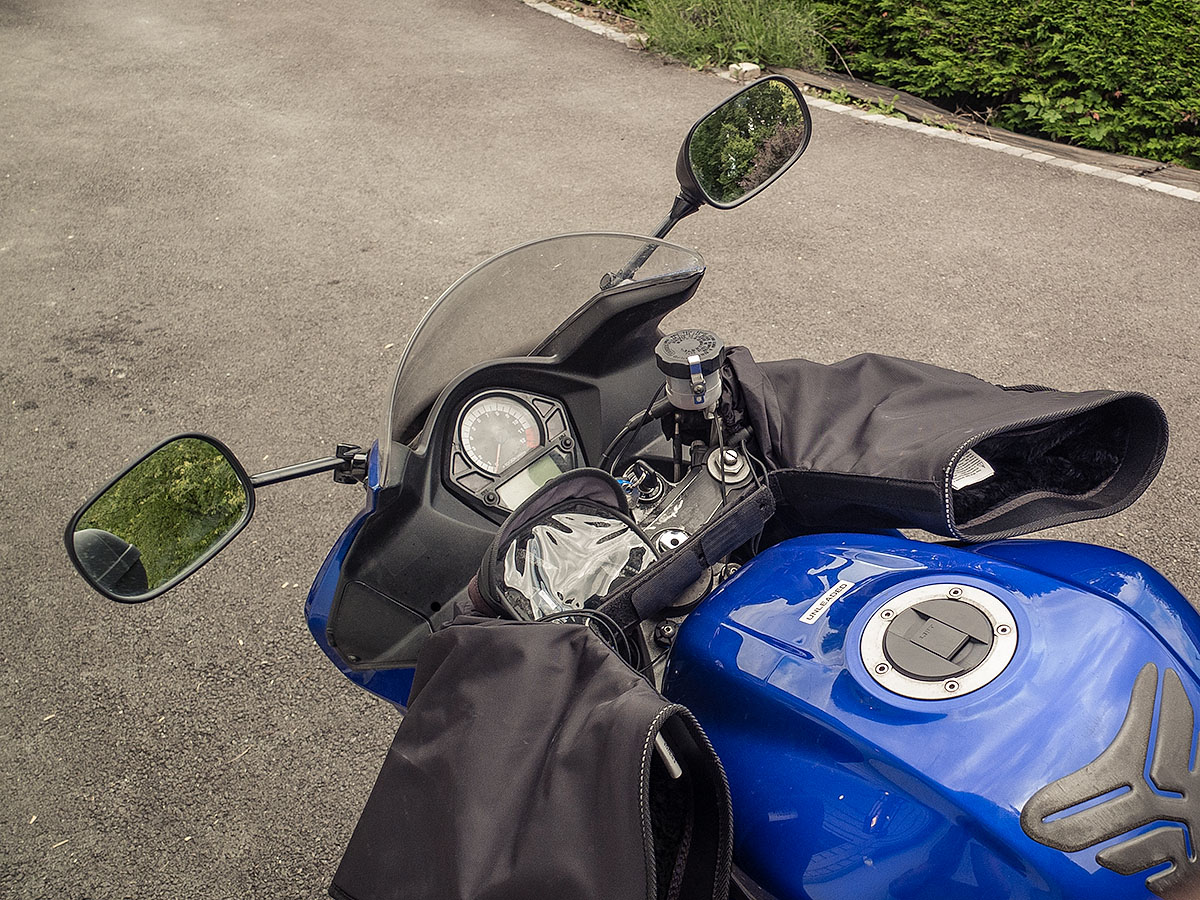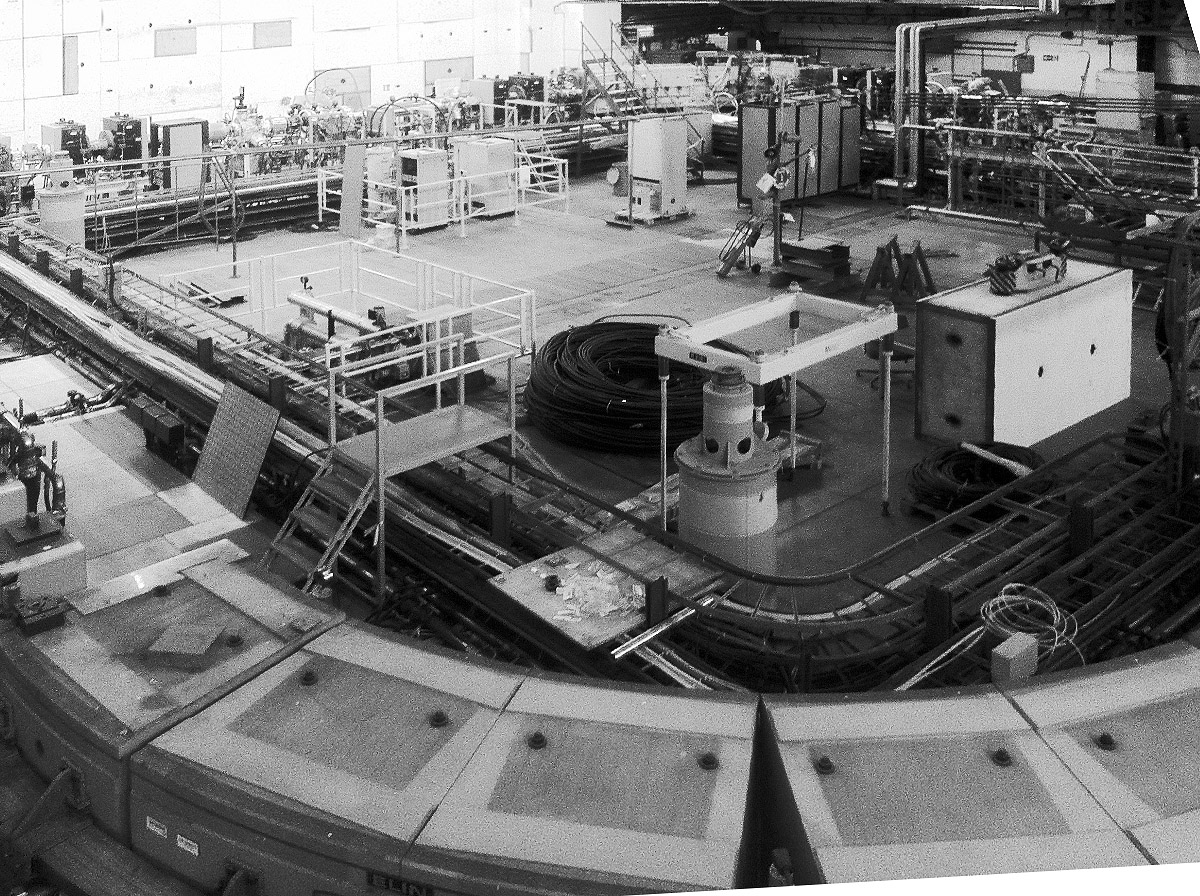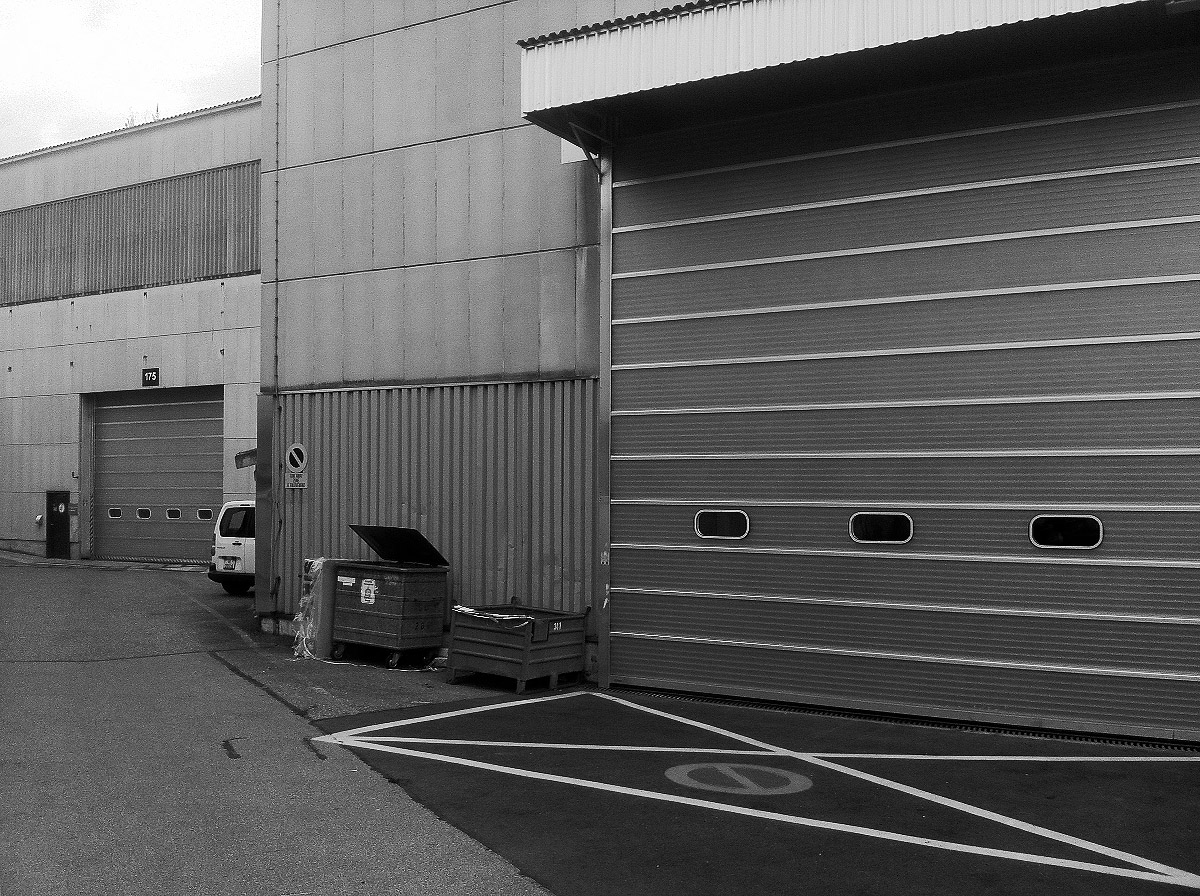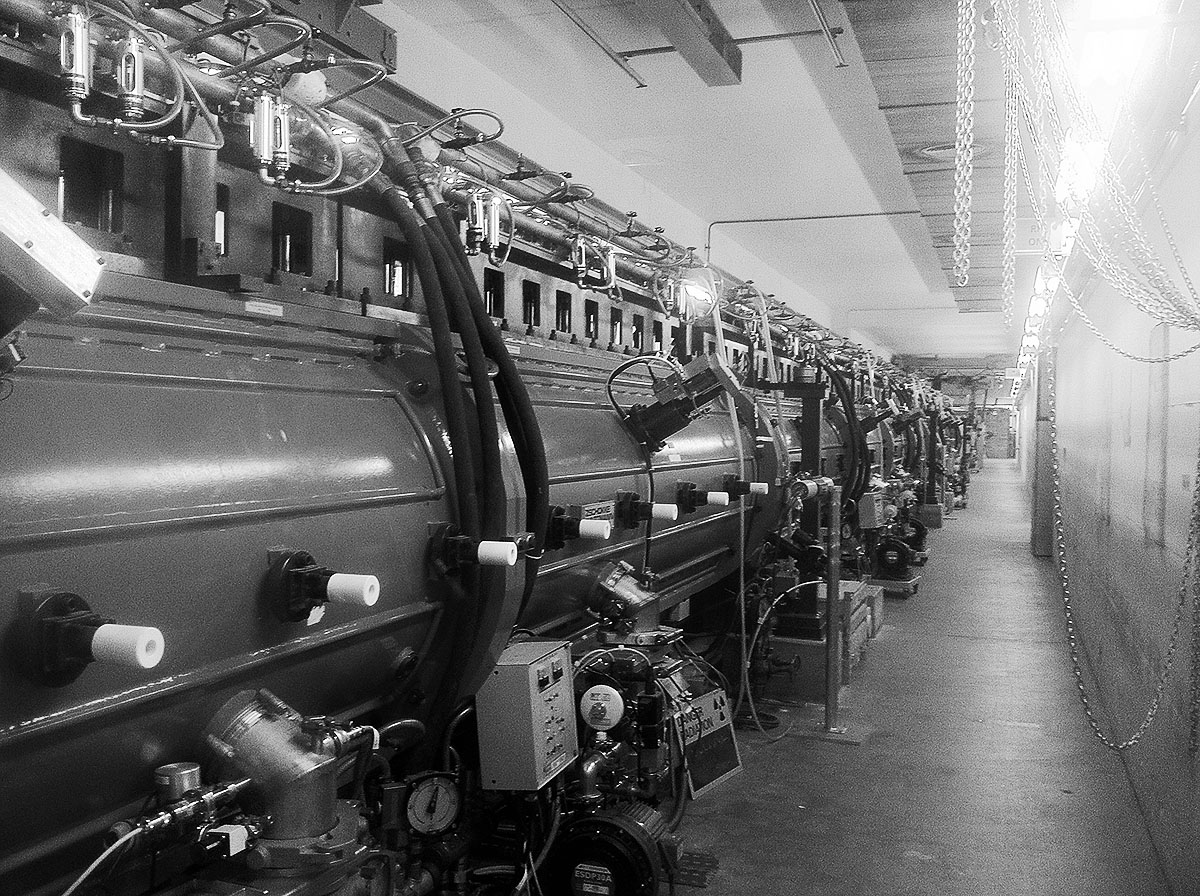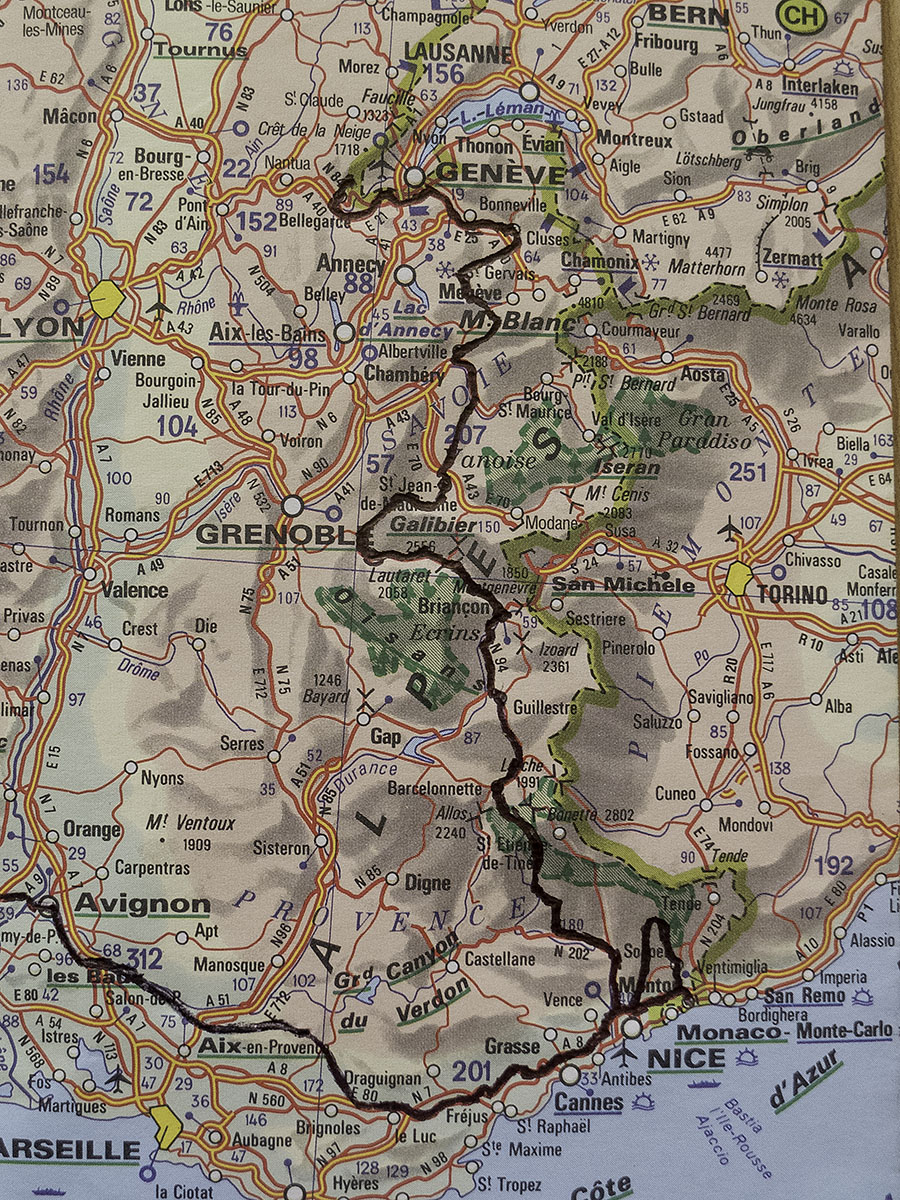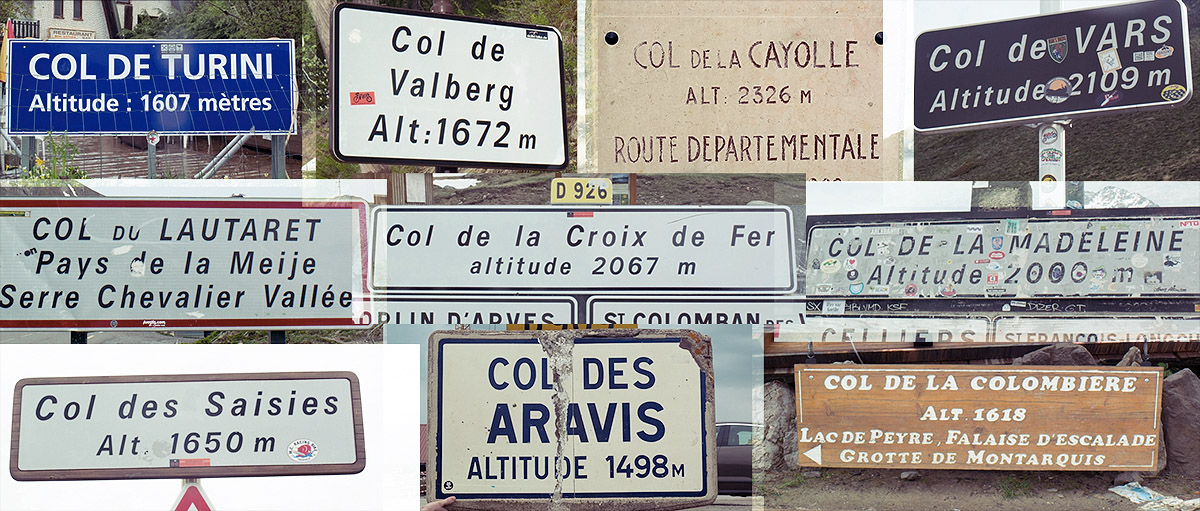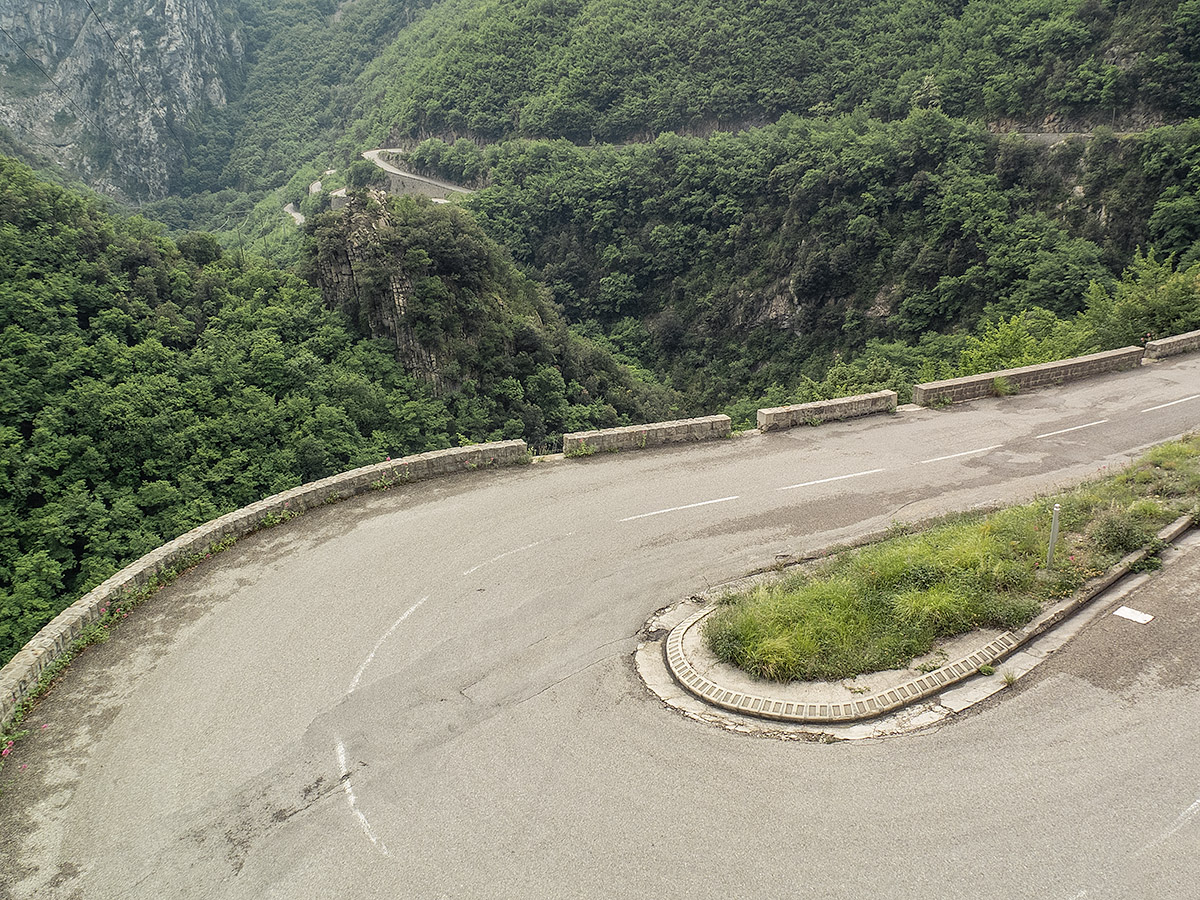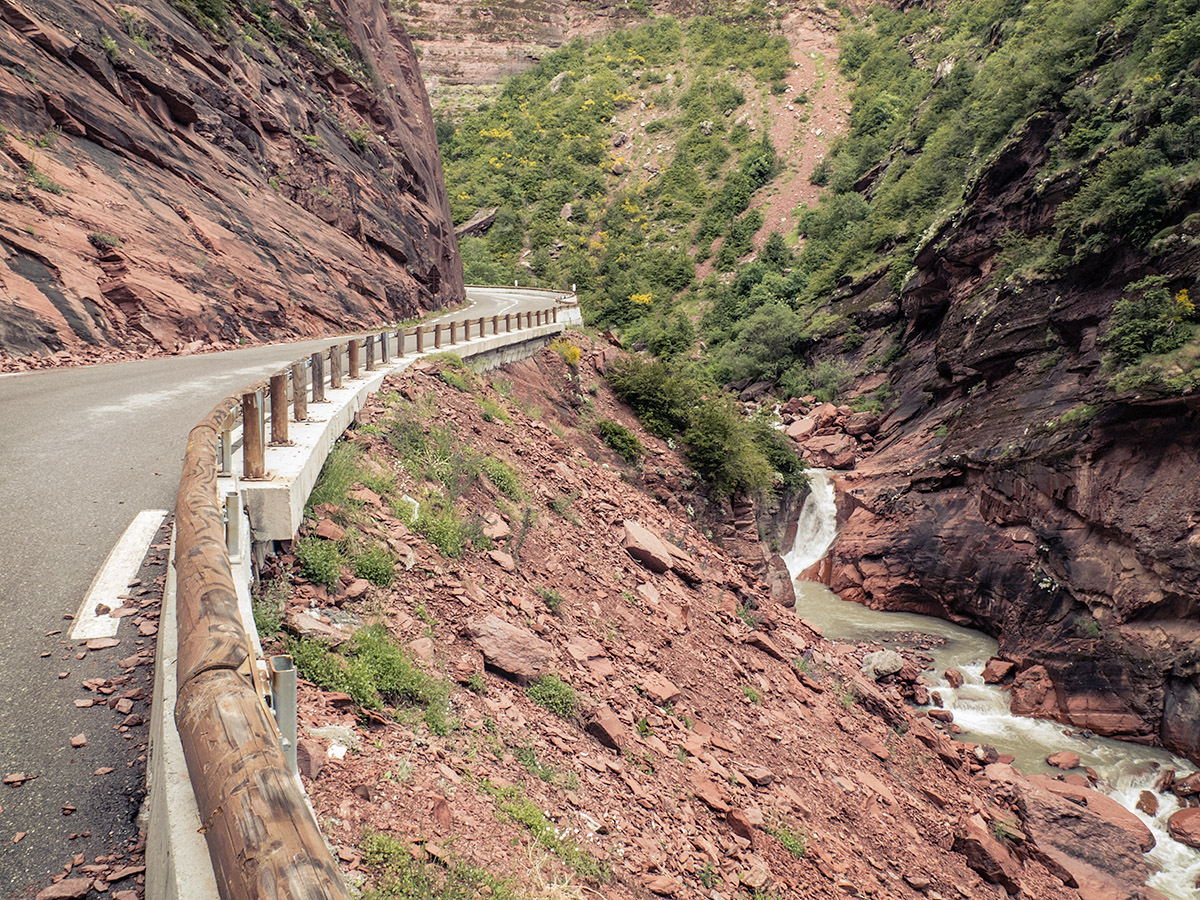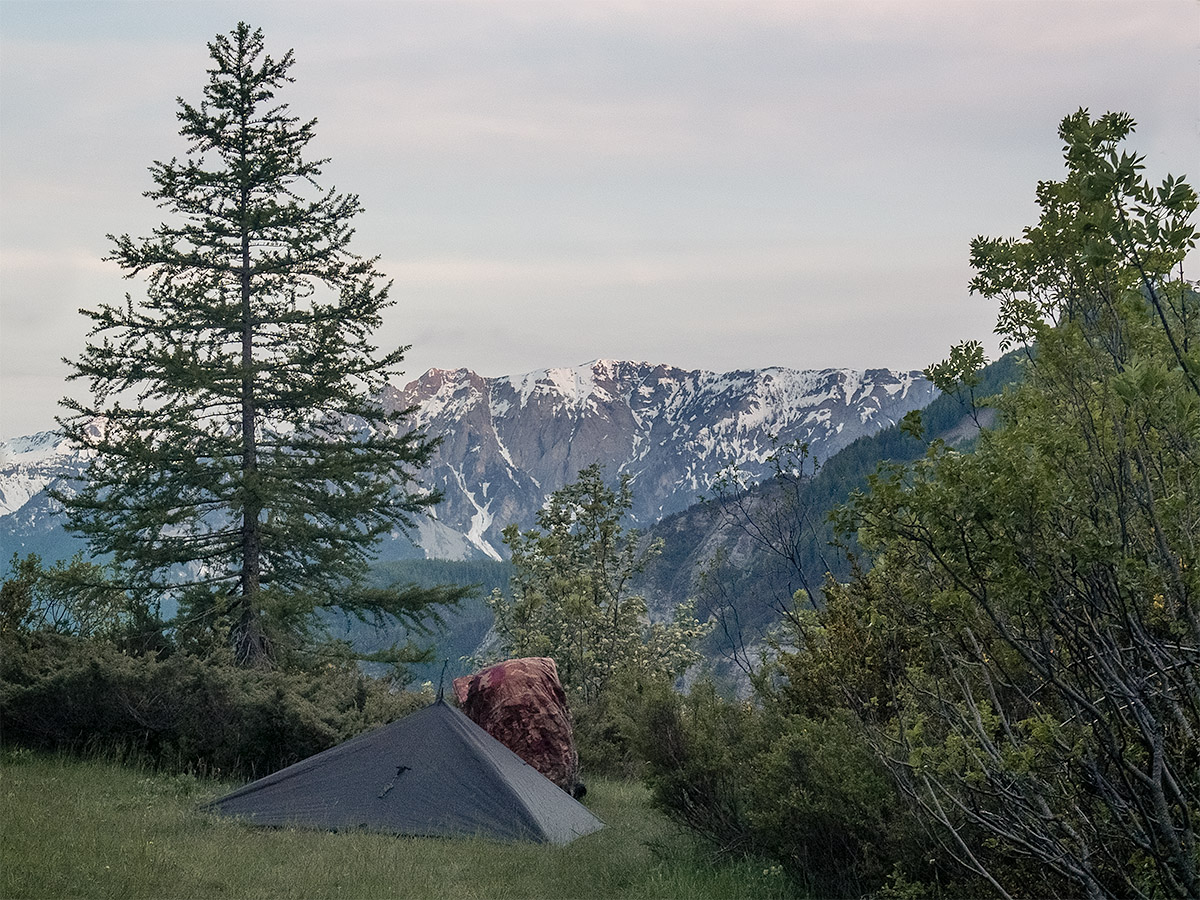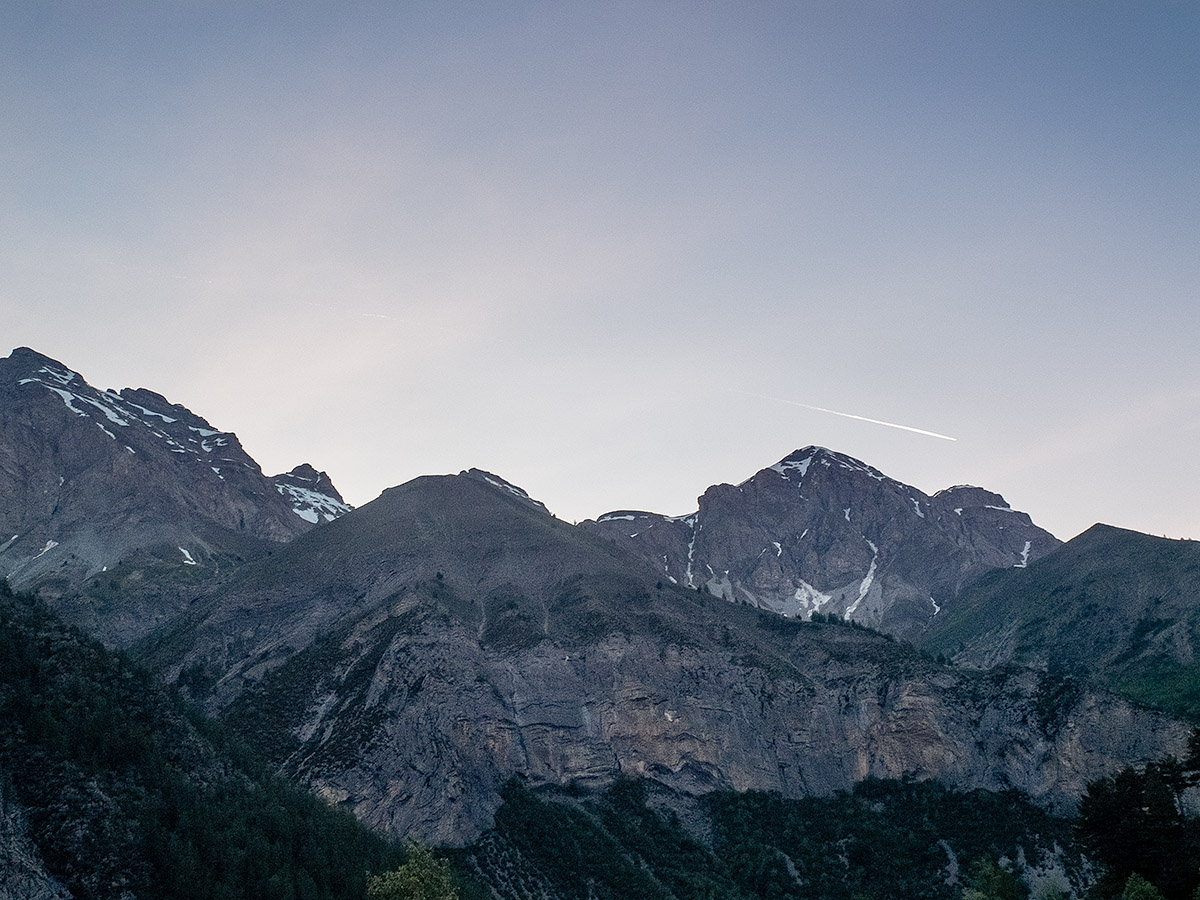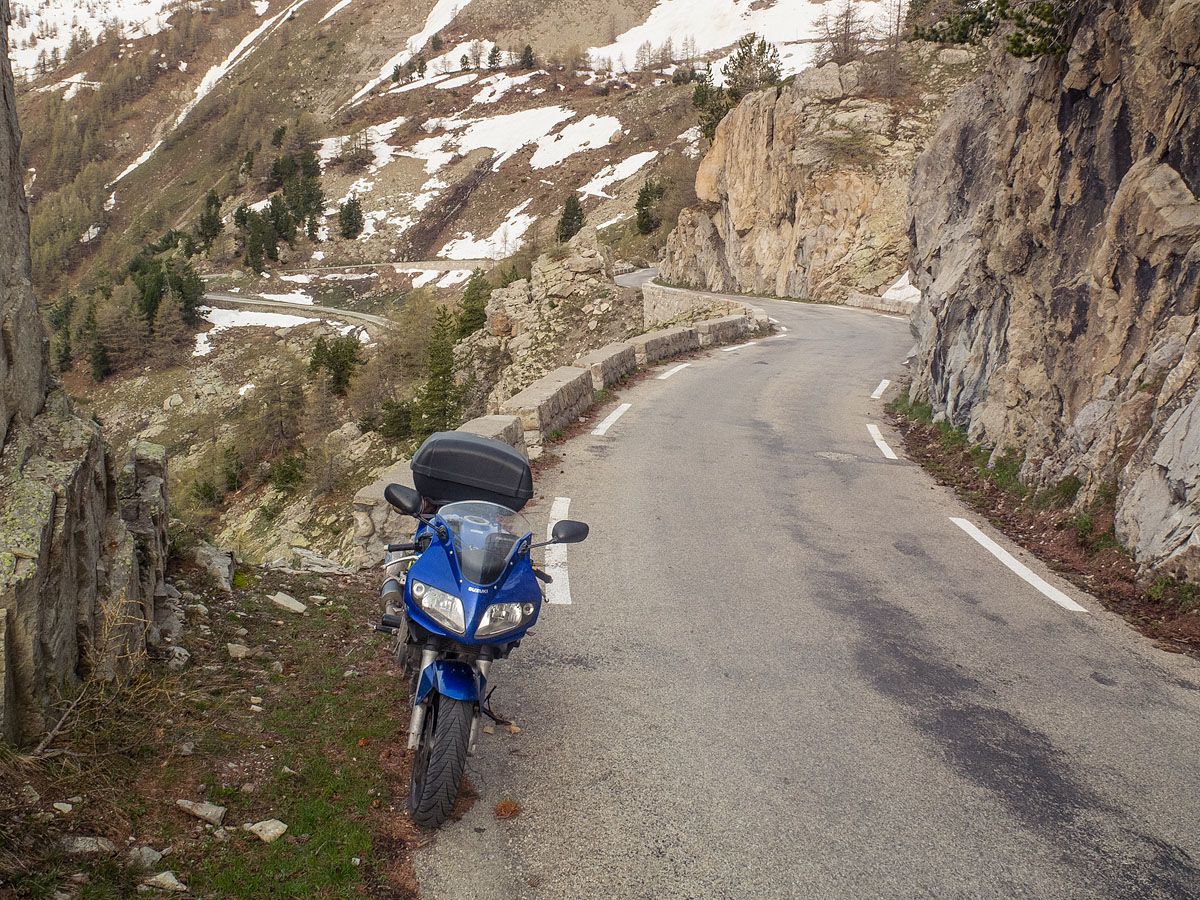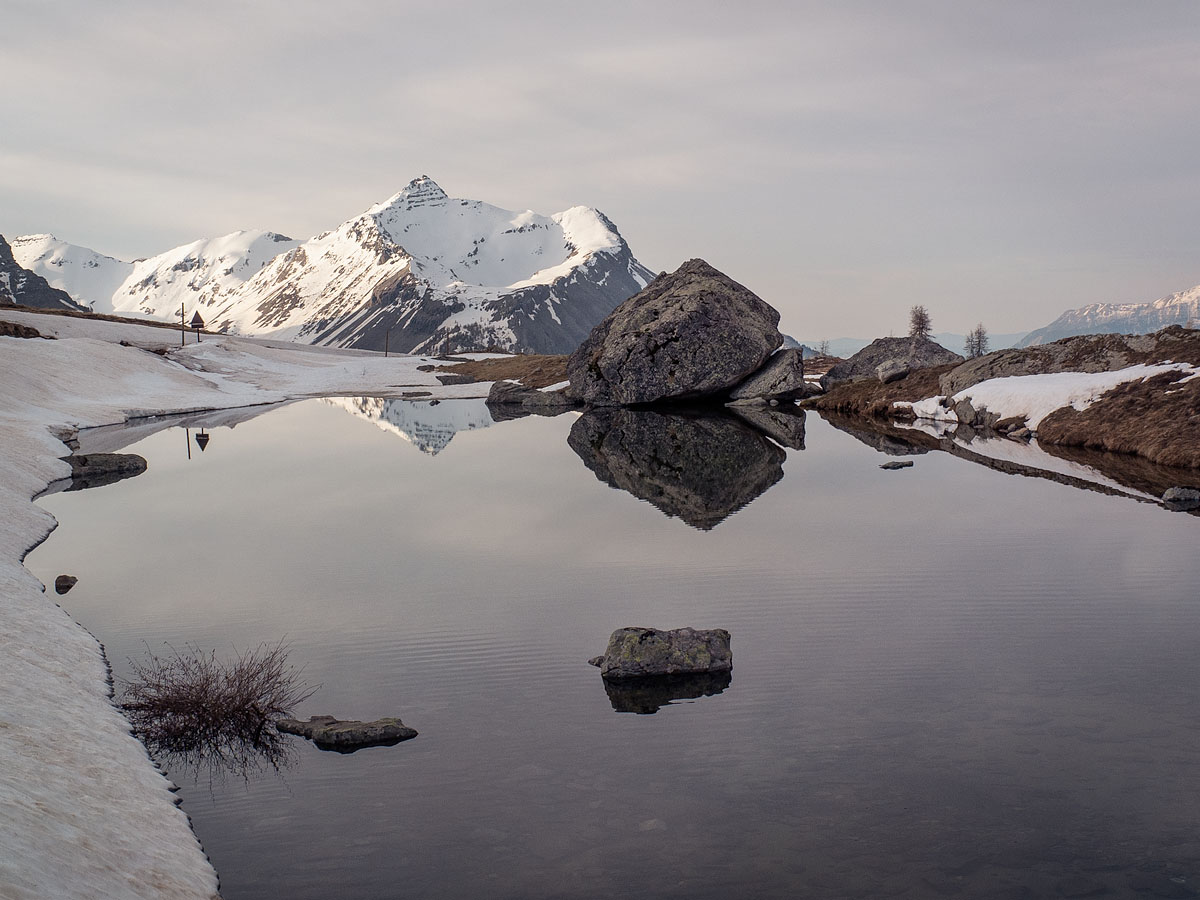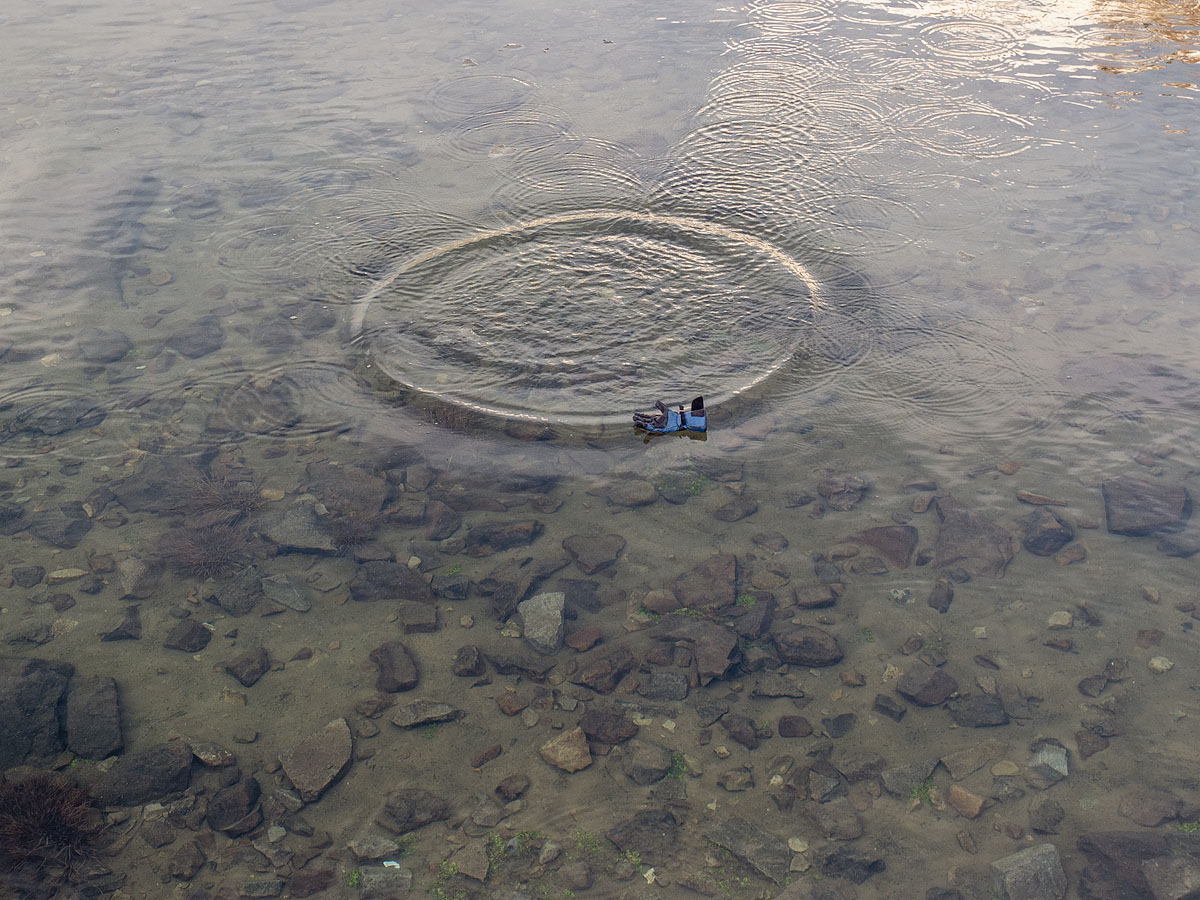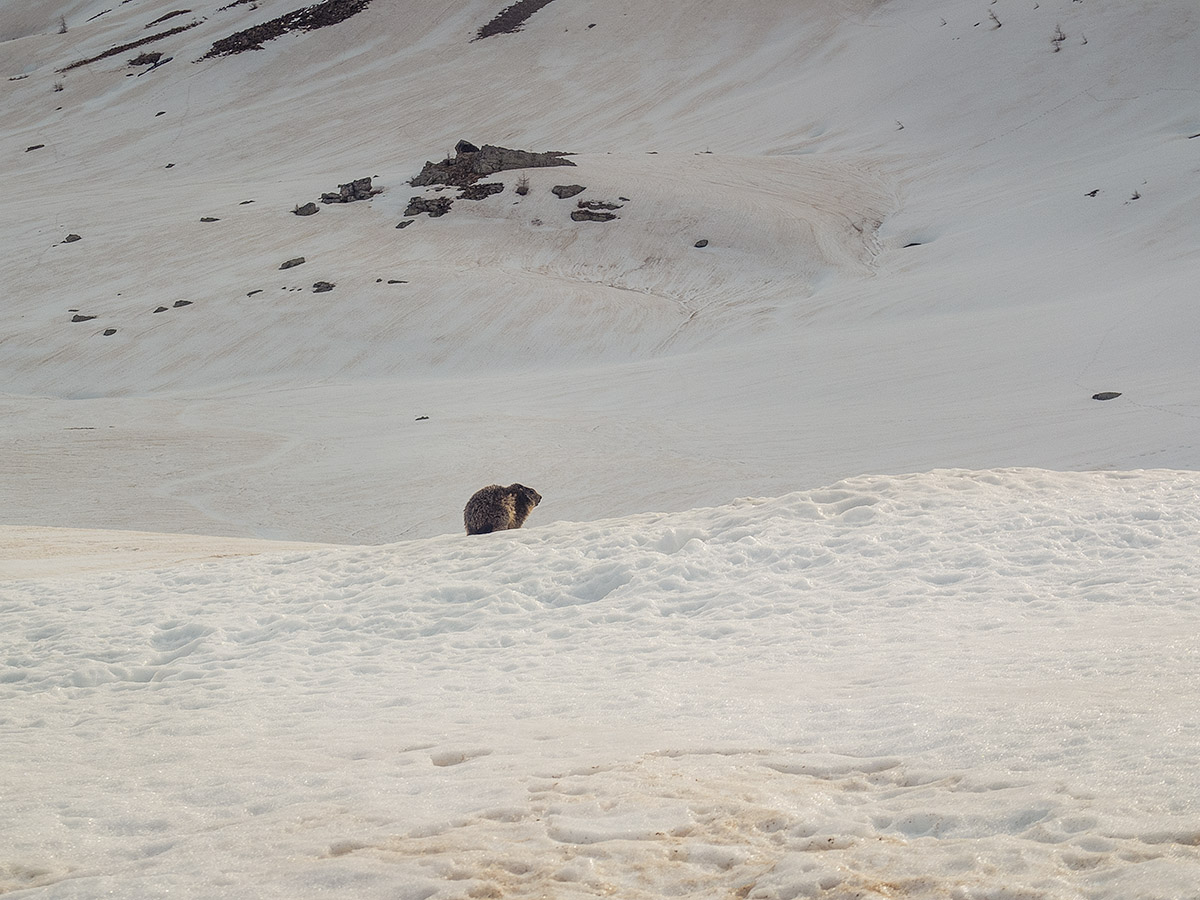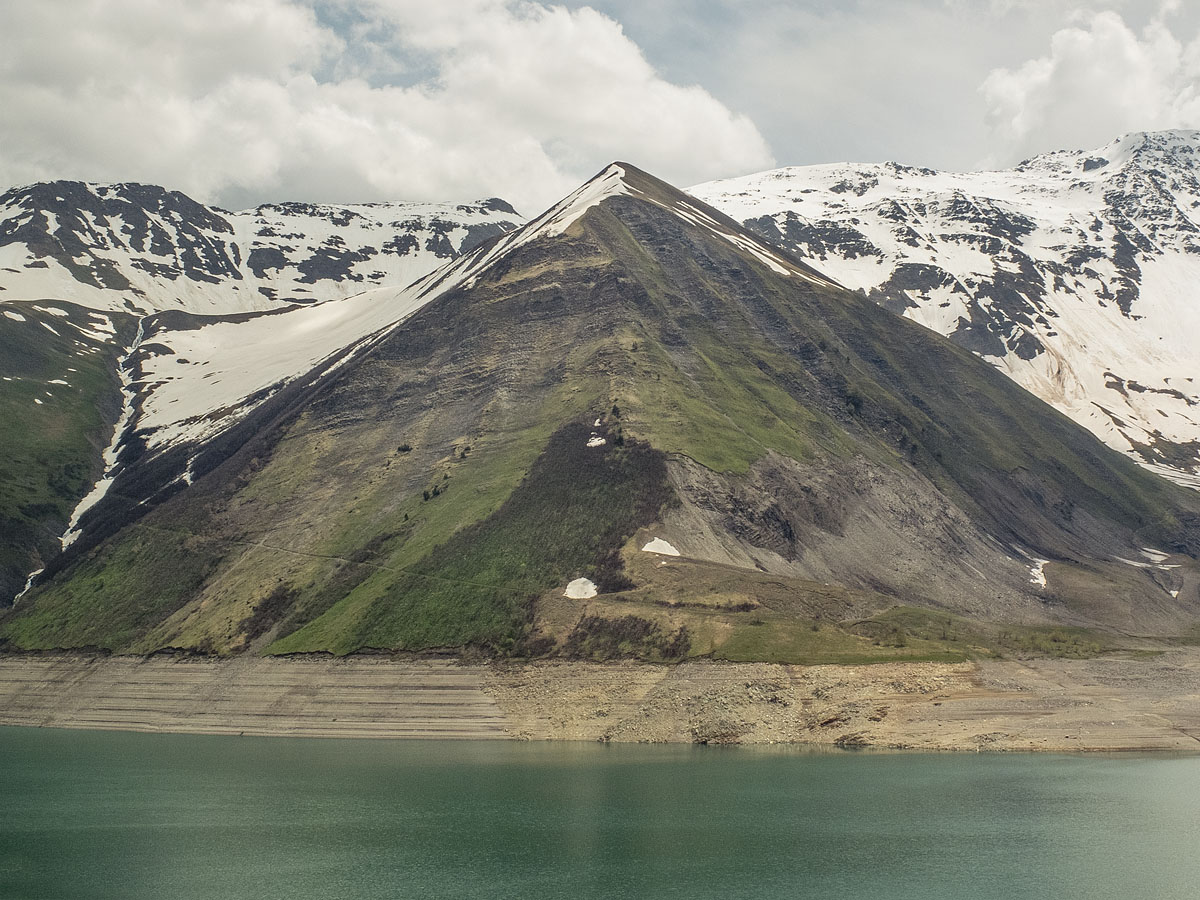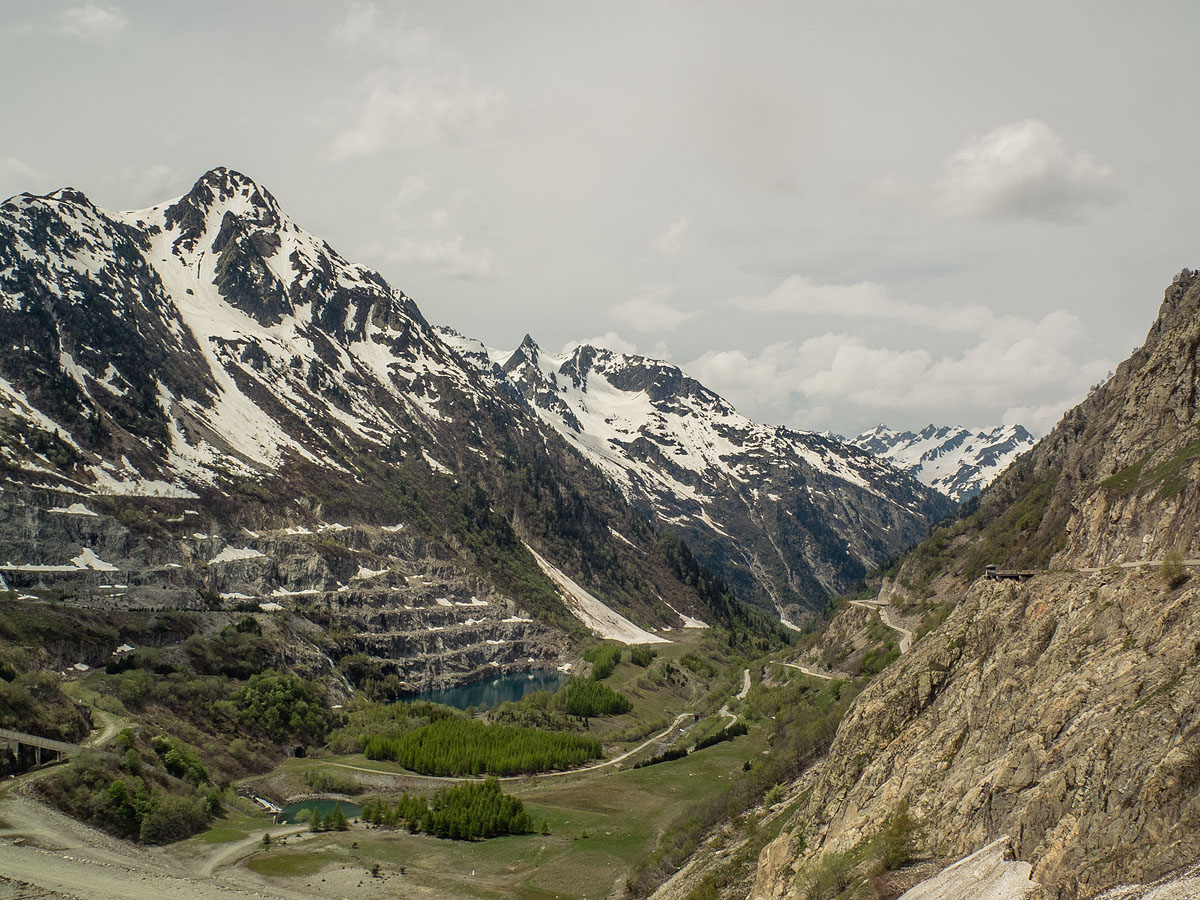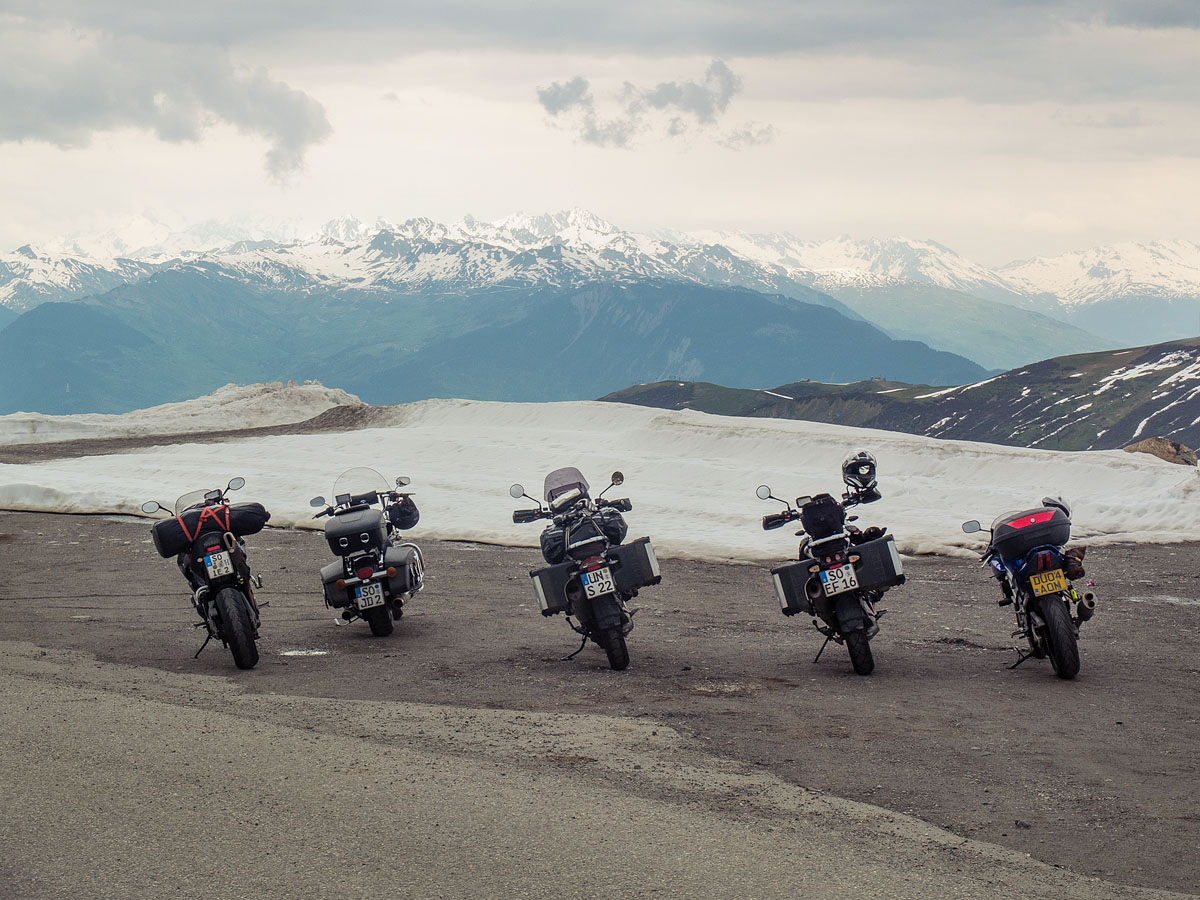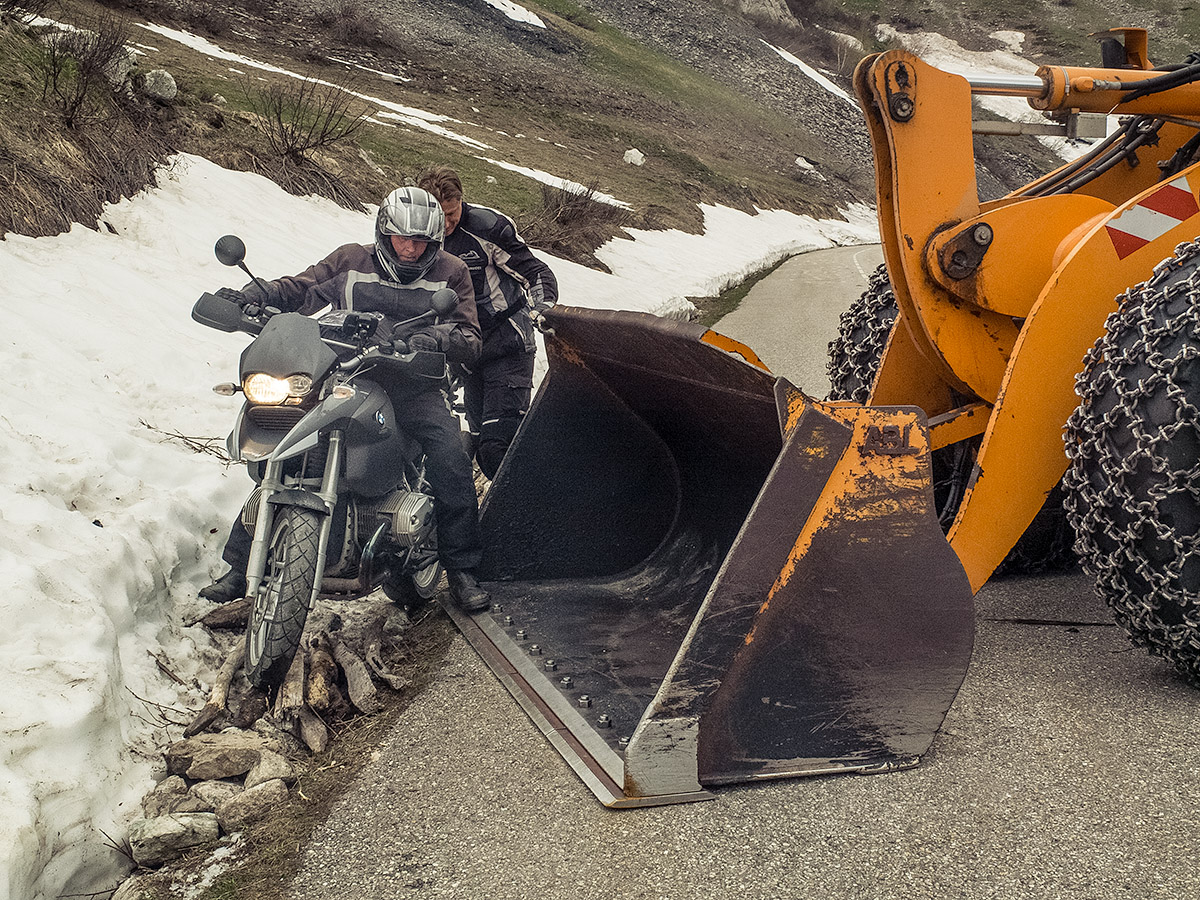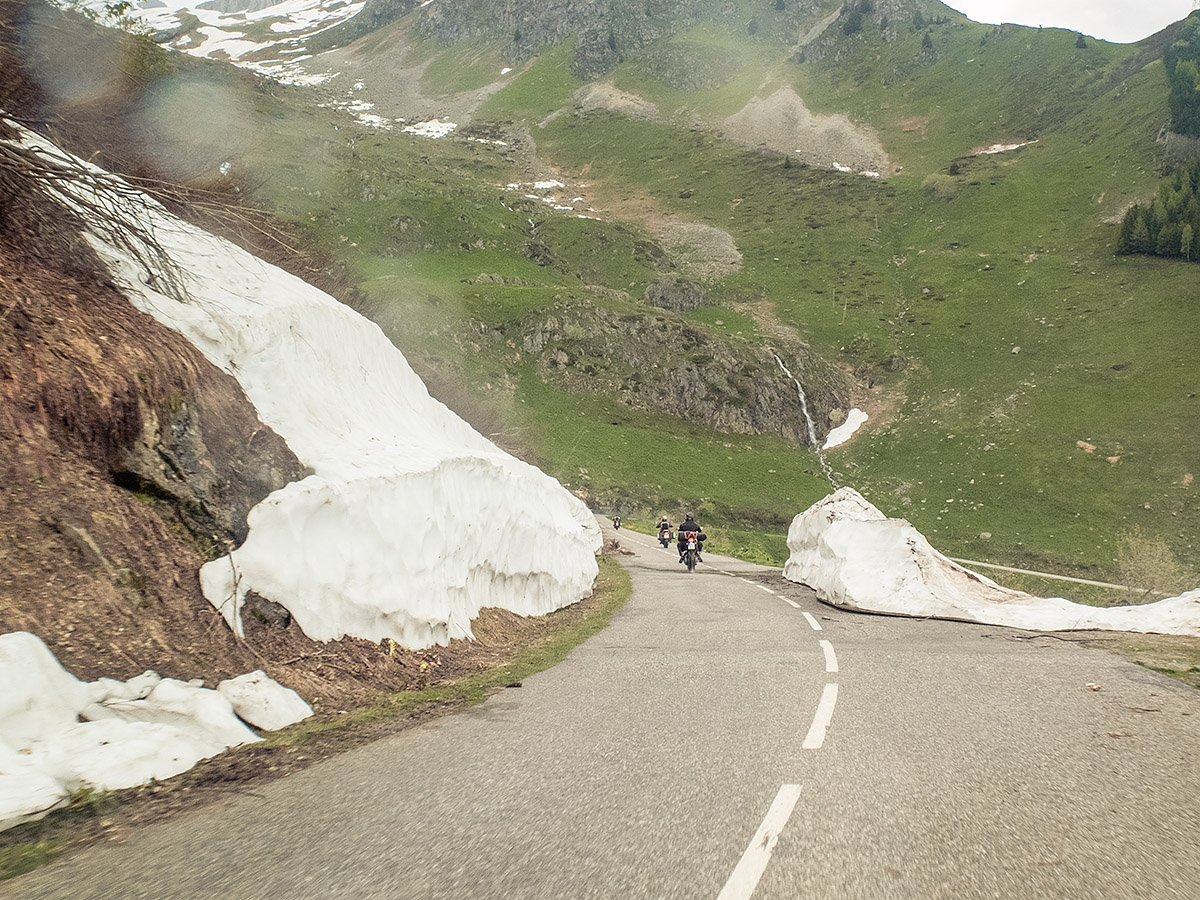After all the slow miles I’d done through the Alps I treated myself (and the bike) to some autobahn for the final leg. I thought it would just be a case of sticking headphones in, listening to some German music and watching the miles slip by. In reality it is a very fast way of getting from one tangle of congestion to the next. Though I did discover, on a clear stretch, what the top speed of an SV650S with a big top box is…
I stopped for a few days near Cologne to stay with Jan and Jana who I met grape picking in Australia. We caught up about the months passed, ate good food and swam most every day. It was lovely and strange to see them half a world away yet so close to home.
Towards the end of a long trip the homing instinct activates. Everything reduces to numbers: 46, 57, 120km/h speed limit through Belgium and 219km remaining to Dunkirk, A67, A10, 240km on the trip counter, need fuel, A18, 14:00 channel crossing. Before I knew it there was M25, junction 16, A40; the world narrowing back down to familiar corridors.
I arrived with no sense of achievement. I had lived the trials and delights of each new destination, but home is no destination, it is a beginning—of this trip and whatever is next—and I felt nothing.
* * *
Two weeks on and the trip has caught up with me enough that I can finish its documentation. In total I covered:
- 6802 miles or 10,947 kilometers
- Not including four separate boat journeys
- From May 17th to July 17th, a total of 62 days
- 42 days of which were spent with friends and family; 22 days of which were spent on the road with 3 nights in hotels and 15 nights camping in the wild
- For a rough average of 320 miles or 515 kilometers per day on the road
- Resulting in exactly 1000 photographs stored on my computer, 130 of which I posted here
Each of those numbers exceed what I expected from this trip yet kiss so lightly the surface of what was done and can’t be undone. I’m glad to have this record, but I don’t think that it’s important to squirrel away the memory of every day in preparation for some winter. To have known is enough: it means it is possible to know again, of some other place, at some other time, tremendous and impermanent.
It was also a harder trip than I expected (not that it is any grand achievement, certainly not beyond anyone willing to work towards it). While Australia taught me how to travel with nothing, relative to life’s usual menagerie of possessions, this trip was about learning to travel with nobody. At the longest stretch, from Bordeaux to Provence, I spent eleven days without seeing anyone that I knew. But to travel alone allows one—that final number—to flicker, just occasionally, so that for a moment it is gone, and all that remains is everything.
* * *
I would like to finish with a huge thanks to the friends and family that I visited. Without your kindness it would have been a much more difficult and much less interesting trip.
—
I arrived in Munich fairly haggard after five days and four nights of consecutive camping, the longest on the trip. The beard had become too much, and I decided to lose some hair as well while I had the opportunity.
My sole reason for visiting was to see Benny, original Cheltenham shredder, who now lives there. Really I had no other expectations.
A city can be much like any other, but since it had been six weeks since I’d stayed overnight in Granada I found a renewed appreciation for how life is in one. Everyone looked so healthy—though Bavarian food is hearty and delicious—as they walked and cycled around the tidy streets, feeling unthreatened late into the long dusky evenings, each passing one the full stop at the end of a million small stories, my own included. The story of one lifetime would, as its backdrop, see the city changed beyond recognition, bombed and rebuilt. The lifetimes of a dozen people combined would take you back before its existence.
Time on a human scale is too light to register with mountains, lakes or forests; to be in a city is to feel the weight of every hour.
I stayed with Benny and Franzi for a week and reiterate here my heartfelt thanks for everything. Next time: the final leg.
—
It’s hard to say—and it’s the thing I’m most often asked—where my favourite place has been. Each one is visited not just by me but by the weather, the time of day, crowds and—as a consequence and in addition to those things—a different frame of mind.
That considered, I was cold, recently awoken, and inside the clouds climbing the San Bernadino pass. So while it was very atmospheric it was not the most enjoyable drive.
I arrived at the top of the Stelvio Pass without actually climbing it due to a small lapse in navigational attention. It was once billed by Top Gear as “the greatest driving road in the world” and at 2756m it was also the highest my bike went on the whole trip. I ended up riding down and then back up its 48 hairpin turns. It’s more of a novelty: the turns are sharp, steep and there is a lot of traffic. I would recommend the route that Top Gear take from Davos over the Flüela and Ofen passes though.
Once in Italy I camped at the foot of the Sella Pass in the Dolomites. I awoke to skies clearer than the previous morning and the view I’d had from my campsite became expansive and illuminated as I began to ride. At the top of the pass I felt, with elusive certainty, that I’d ridden the most beautiful road of the trip.
Immediately following the Sella Pass are the Pordoi and Valparola passes. The scenery remained astounding and I was similarly certain that these were the best driving roads of the trip. They were wider and less trafficked than those in Switzerland with corners that swept rather than whipped back on themselves before pitching the bike, with perfect rhythm, into another turning the opposite way.
BMW also thought highly of them: Looking down from the top of the Valparola Pass at about 7am I saw a fleet of six cars working their way up the road, sounding at the ragged limit of traction. No sooner than they’d got to the top of the pass they turned around and headed back down. At least the lead car (judging from the one half-decent photo I got) was a pre-production 2014 M3 with a Munich numberplate. Munich is where the BMW factory is and also where my next stopover was to be.
Before leaving Italy I wanted to take the cable cars to the top of Monte Cristallo. Due to snow only the lowest of the two was open but I trudged up beyond that until it got too difficult. It was still an incredible view and I can’t imagine how good it would be to do one of the via ferrata routes at the top—some day.
* * *
In Austria I settled down for what I expected to be my final night’s camping. An hour into the next day and the weather really caught up with me: I was in a downpour for the majority of the remaining journey.
One of the few downsides to travelling this way is that it can be hard to appreciate one place immediately after another, especially if they are similar. That was the case with what I saw of the Austrian and subsequently the German Alps. Not only was the weather against me but had I just come from some of the best scenery and riding of the trip in The Dolomites. If anything it’s a good reason to revisit another time, in different weather and with a different state of mind. But for now my time in the mountains was over.
Next update: Munich.
—
Leaving Péron I crossed into Switzerland, then back into France, then left France, for the next few weeks at least, at the eastern end of Lake Geneva.
At lower altitudes Switzerland can be slow and frustrating to ride in. Higher up it is a beautiful castle of a country, fortified by endless chains of mountains with roads like battlements. There is a sense of separateness, of something preserved and hidden from the Europe surrounding. It is a place in between—in terms of my trip, in terms of the languages they speak, in terms of its borders—but also a place outside, and fascinatingly so.
The Swiss seemed defensive too about wild camping, or at least they had many signs with a crossed-out tent and "no parking 2200–0700". I don’t know how strictly they enforce them, but it wasn’t hard for me to find somewhere that I wouldn’t be discovered.
In the morning I took the first cable car up towards the Trift Bridge. I was going by a picture I’d stumbled across online. I also knew that it was one of the longest pedestrian footbridges in Europe: 170m in span and 100m above the gorge below. All the same it surpassed every expectation; for the hour’s hike up beyond the cable car station I had the trail entirely to myself and feel truly privileged to have been there.
* * *
There is a good loop of high passes around the Andermatt area. While there was still a lot of snow I had none of the problems with closures that I did in France. At the Furka Pass I did some more sightseeing: The Rhone Glacier is right by the road, and there’s a cool (literally and figuratively) tunnel into the ice that’s open to visitors.
In Péron I’d been able to plan this section of the route in detail. I aimed to take things more slowly. But despite being up at 5:30am I didn’t have much of a break until I found a camping spot at 7pm, unfolded my tarp, laid it flat, and with string and pegs and sticks and rocks held it to the shape of a shelter. Planning is mostly deciding on places to visit, points on the map. The fulfilment—and work—of travelling is unfolding these points into routes and again into new surroundings.
Next time: Leaving Switzerland for Italy, Austria and Germany…
—
I stayed in Péron for three weeks, primarily to spend some time with family. I took a break from taking photos, but it was a good chance to write up the previous few trip reports (I’m now very nearly up to date).
It was also a good chance to give bike a good clean, de-gunk, and re-lube, as well as an oil and filter change.
The two days in the Alps had evaporated my rear brake pads (though I freely admit to being an idiot for not checking them more frequently). The front ones had a little life in them yet, but the sintered pads I put on the rear were such an improvement I went back and bought the same for the front as well.
Rather than get new winter gloves I took the opportunity to try out some handlebar muffs. They look ridiculous but initial testing suggests that I can comfortably ride in the rain at 12˚C with just motocross gloves on underneath.
Since one of my relatives works there I got the chance to visit part of CERN, which is very impressive, and without which there wouldn’t be an internet for you to see these few cameraphone photos:
Next: into Switzerland.
—
I initially allowed three days for this leg of the trip. It looked like the weather was going to close in, so I decided to do it in two. They were to be the toughest, but also most rewarding two days of the trip so far.
Leaving Joe’s was a straightforward autoroute blast along the coast to Menton, where the Route des Grandes Alpes begins. Unfortunately the French love arbitrarily closing things, like the tourist information office, which is where I had hoped to find a map and some advice about which passes were open. In a presse I found a map that covered at least the first part of the route and turned towards the mountains.
My first Alpine pass was the Col de Turini. I reached the top through a hailstorm where I took shelter in a café. The proprietor said that the pass between me and the next petrol station was closed. I didn’t have enough in the tank to go around it so chose to double back towards Nice, hoping there would be one along that road. There wasn’t, but I just made it to the outskirts of Nice where I filled up. I chose a different route back into the mountains and had the interesting experience of filtering through the rush hour jams at 80km/h with all the maxi scooters.
In some cases, like riding through Nice, it’s impossible to stop and photograph what is going on. It’s also hard to stop when the weather is bad because it’s no fun standing around in the rain getting wet hands, which leads to the misery of wet gloves. I have less photos of this leg of the trip than I would perhaps like. But at the same time I have as many photos as I was happy taking. There is a tension between photographing a journey and taking part in it. I probably spend the most time with the camera once I’ve stopped and set up camp. That’s when the light is best, in the mornings and evenings, plus I find it easier to concentrate once the riding, navigating and campsite locating is done or yet to begin.
I found my new favourite campsite at the foothills of the Col de Cayolle, a flat grassy spot completely surrounded by mountains. The altitude was about 1400m so I knew that under my sleeping bag I’d have to wear the full complement of leggings, a long sleeved top, wooly jumper and socks, plus a down jacket to get a good night’s sleep. As I climbed the col in the morning the snow line was only 200m above my camp so I’d estimate the night time temperature would only have been a degree or two above freezing. As usual I was up with the sun (at about 6am) but didn’t mind at all. It was fantastic to have the road all to myself, and I was so excited about the day ahead that I wouldn’t have got back to sleep anyway.
To take the above photo I removed a glove and set it on the ground beside me. It swiftly slid its way into the lake and I spent half an hour throwing lumps of snow into the water to push it backwards or forwards towards one bank or the other. I was unsuccessful and—probably wisely considering the temperatures—decided against stripping off and paddling in. I still had summer gloves at least, and on the way down saw some animals more suited to the climate than I now was.
It was Saturday and there were lots of bikes—with and without engines—in the mountains. Near Briançon I joined at about 100 cars and 50 motorbikes at a Police roadblock because there was a cycle race taking place on the road ahead. 45 minutes later the road reopened, and somehow I ended up being the first bike to leave. It was very surreal passing the few leading cars then having so many bikes in my mirrors, the road empty and flanked every now and then by a policeman or two.
Heading up the Col de la Croix de Fer I ended up in the middle of a group of Norwegians on very shiny sportsbikes. We all stopped at the reservoir pictured below. I talked to them briefly: they had trailered their bikes across northern Europe for 4 days just to ride the Alpine roads for a weekend.
It was still tricky picking a route around the closed passes, especially since I was now off the map I’d bought in Menton. I pulled over next to some German bikes and asked them if they had a karte that I could look at. They obliged, and seemed to think that although the next pass was officially still closed it would be possible to cross it. I tagged along and indeed, we reached the top on a snow-free road.
Coming down the other side of the pass the road was completely blocked by a huge digger. With a bit of manhandling we got all five bikes around it and we went our separate ways shortly afterwards. Many thanks to Kai and friends.
There were a few more passes to do, then a short stretch of motorway in order to get to Péron, where my cousin lives. The final couple of hours of riding were on the easiest roads, but I was mentally drained by the time of my 8pm arrival. 14 hours of riding in one day, and all of the cols in the second picture crossed in less than 24 hours. It felt like the rest of the trip had been training for this day. A month previous I would have found it too difficult.
It may not sound enjoyable to push so hard but sometimes that is the adventure. It goes back to, and deeper than, the tension between experiencing a journey and photographing it. There is some joy that doesn’t start until all else pulls out of focus, leaving only the sharp edge between the tarmac and the rest of everything, that cuts a line from one moment to the next.
—
